Forums
- Forums
- Axis And Allies Forum
- General Discussion
- Aviation News
Aviation News
Post a reply
- Go to Previous topic
- Go to Next topic
- Go to Welcome
- Go to Introduce Yourself
- Go to General Discussion
- Go to Screenshots, Images and Videos
- Go to Off topic
- Go to Works in Progress
- Go to Skinning Tips / Tutorials
- Go to Skin Requests
- Go to IJAAF Library
- Go to Luftwaffe Library
- Go to RAF Library
- Go to USAAF / USN Library
- Go to Misc Library
- Go to The Ops Room
- Go to Made in Germany
- Go to Campaigns and Missions
- Go to Works in Progress
- Go to Juri's Air-Raid Shelter
- Go to Campaigns and Missions
- Go to Works in Progress
- Go to Skinpacks
- Go to External Projects Discussion
- Go to Books & Resources
-
 Main AdminARABIAN GULF (Jan. 21, 2018) An F/A-18C Hornet, assigned to the Checkerboards of Marine Strike Fighter Attack Squadron (VMFA) 312, launches from the flight deck of the aircraft carrier USS Theodore Roosevelt (CVN 71). Theodore Roosevelt and its carrier strike group are deployed to the U.S. 5th Fleet area of operations in support of maritime security operations to reassure allies and partners and preserve the freedom of navigation and the free flow of commerce in the region. (U.S. Navy photo by Mass Communication Specialist 3rd Class Victoria Foley/Released)
Main AdminARABIAN GULF (Jan. 21, 2018) An F/A-18C Hornet, assigned to the Checkerboards of Marine Strike Fighter Attack Squadron (VMFA) 312, launches from the flight deck of the aircraft carrier USS Theodore Roosevelt (CVN 71). Theodore Roosevelt and its carrier strike group are deployed to the U.S. 5th Fleet area of operations in support of maritime security operations to reassure allies and partners and preserve the freedom of navigation and the free flow of commerce in the region. (U.S. Navy photo by Mass Communication Specialist 3rd Class Victoria Foley/Released)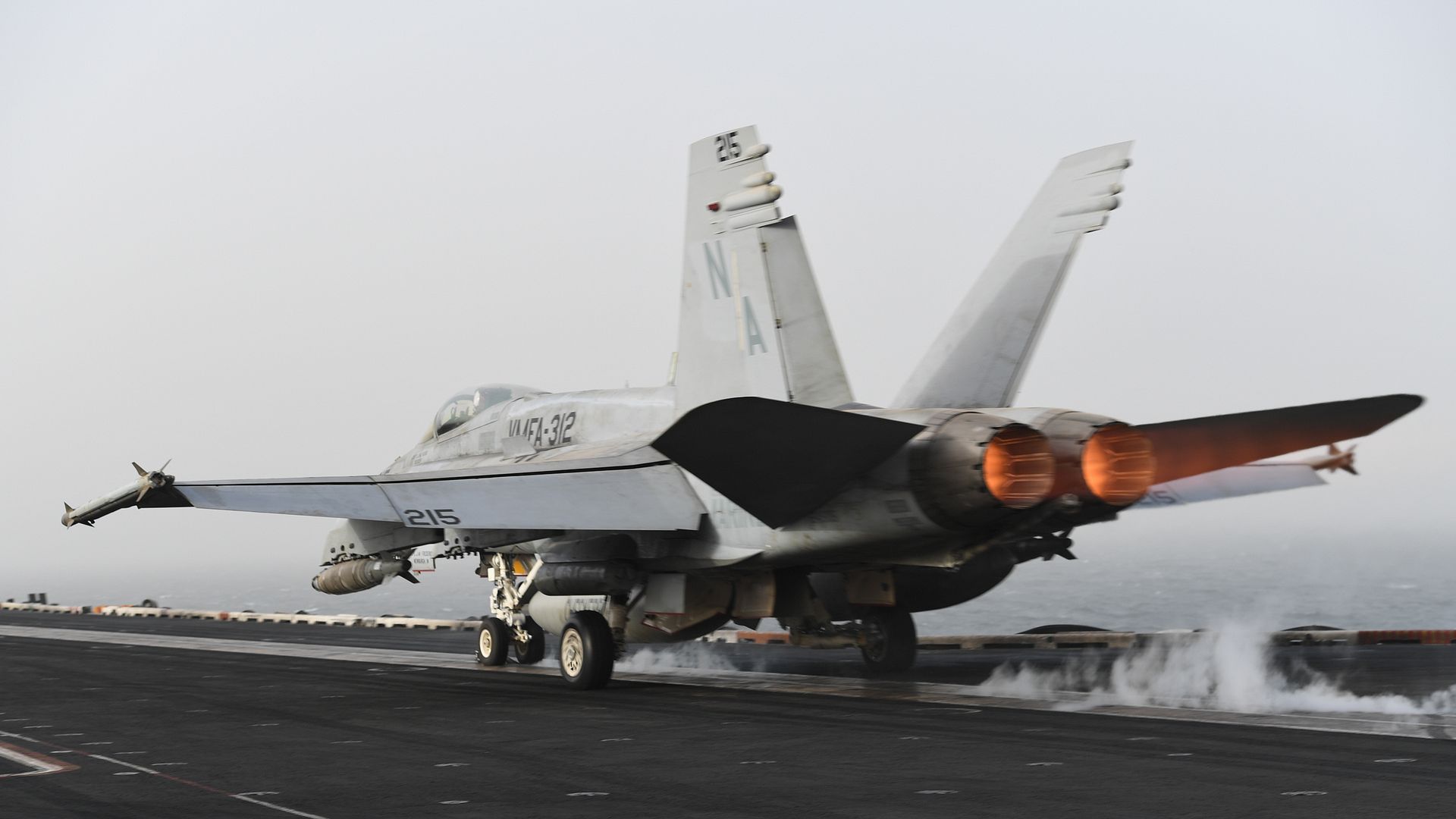
ARABIAN GULF (Jan. 21, 2018) An F/A-18F Super Hornet, assigned to the Mighty Shrikes of Strike Fighter Attack Squadron (VFA) 94, launches from the flight deck of the aircraft carrier USS Theodore Roosevelt (CVN 71). Theodore Roosevelt and its carrier strike group are deployed to the U.S. 5th Fleet area of operations in support of maritime security operations to reassure allies and partners and preserve the freedom of navigation and the free flow of commerce in the region. (U.S. Navy photo by Mass Communication Specialist 3rd Class Victoria Foley/Released)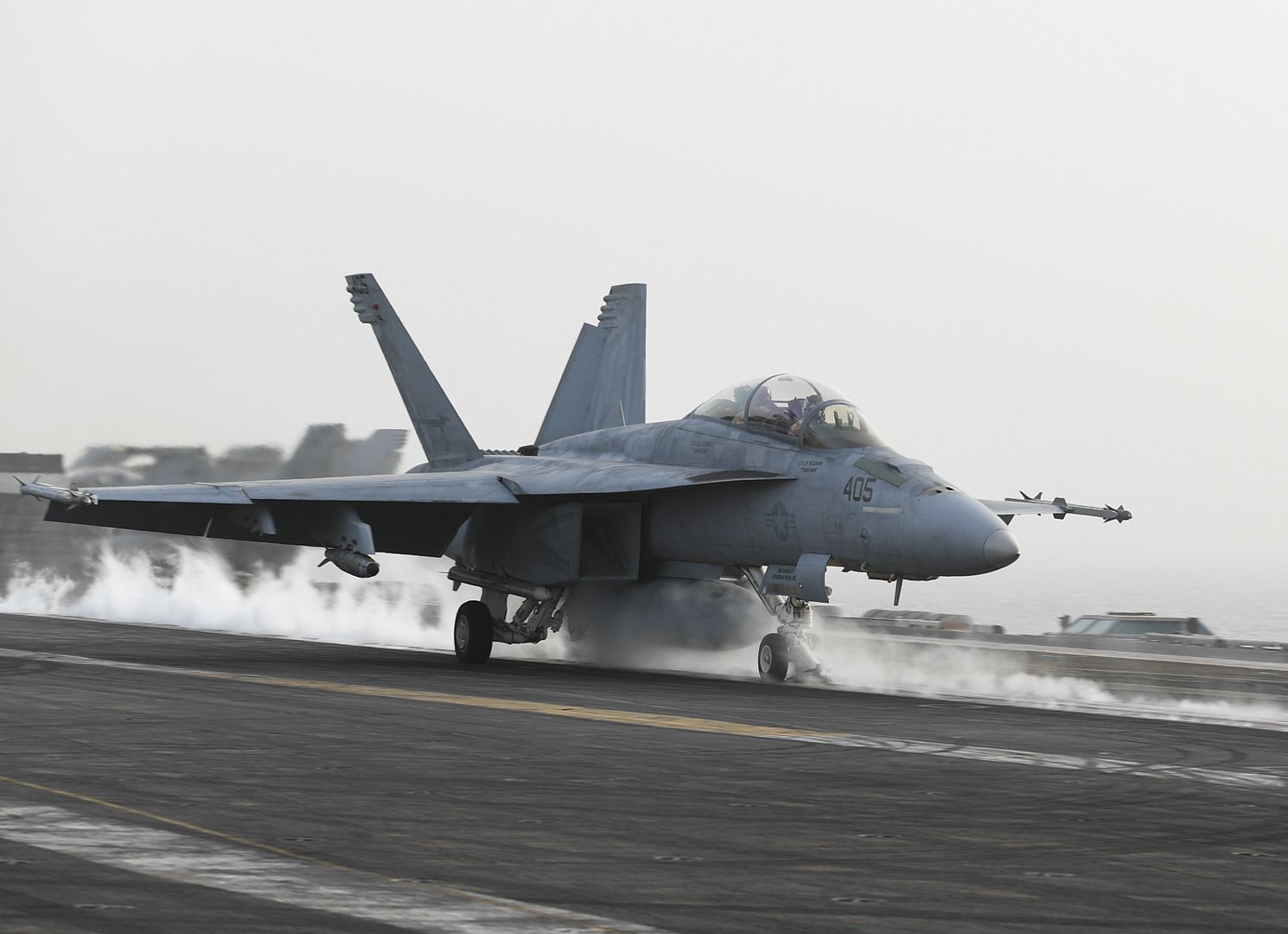
U.S. Air Force Capt. Cody Wilton, A-10C Thunderbolt II Demonstration Team commander, performs a gear down pass during a practice demonstration flight at Davis-Monthan Air Force Base, Ariz., Jan. 17, 2018. The A-10 Demo Team will perform at 20 air shows for the first time in seven years for the 2018 season, showcasing the capabilities of the A-10. (U.S. Air Force photo by Senior Airman Betty R. Chevalier)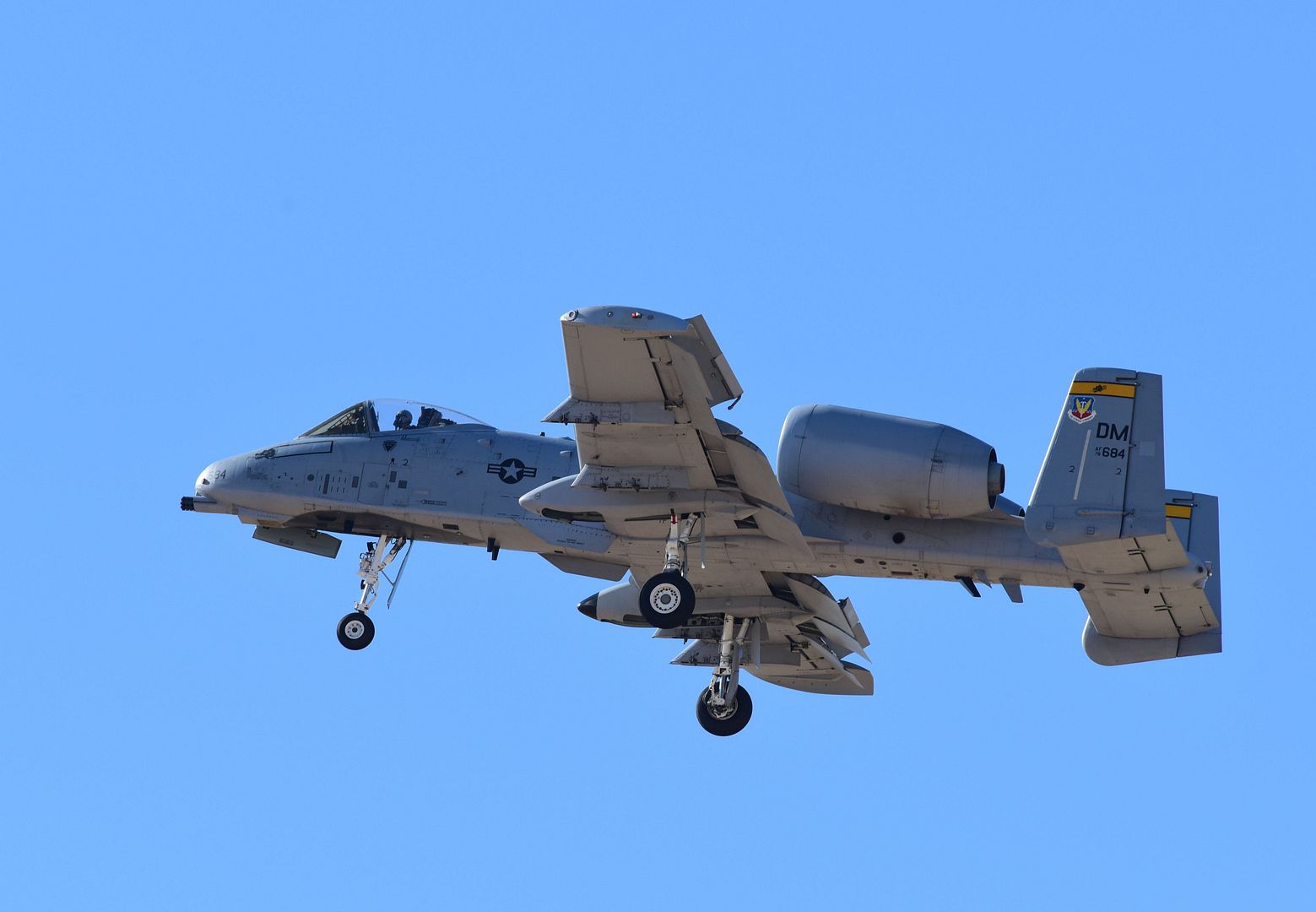
PACIFIC OCEAN (Jan. 20, 2018) Two AV-8B Harriers assigned to Marine Medium Tiltrotor Squadron (VMM) 161, and aircraft from Carrier Air Wing (CVW) 2 fly in formation above the Nimitz-class aircraft carrier USS Carl Vinson (CVN 70). Carl Vinson Strike Group is currently operating in the Pacific as part of a regularly scheduled deployment. (U.S. Navy Photo by Lt. David Babka/Released)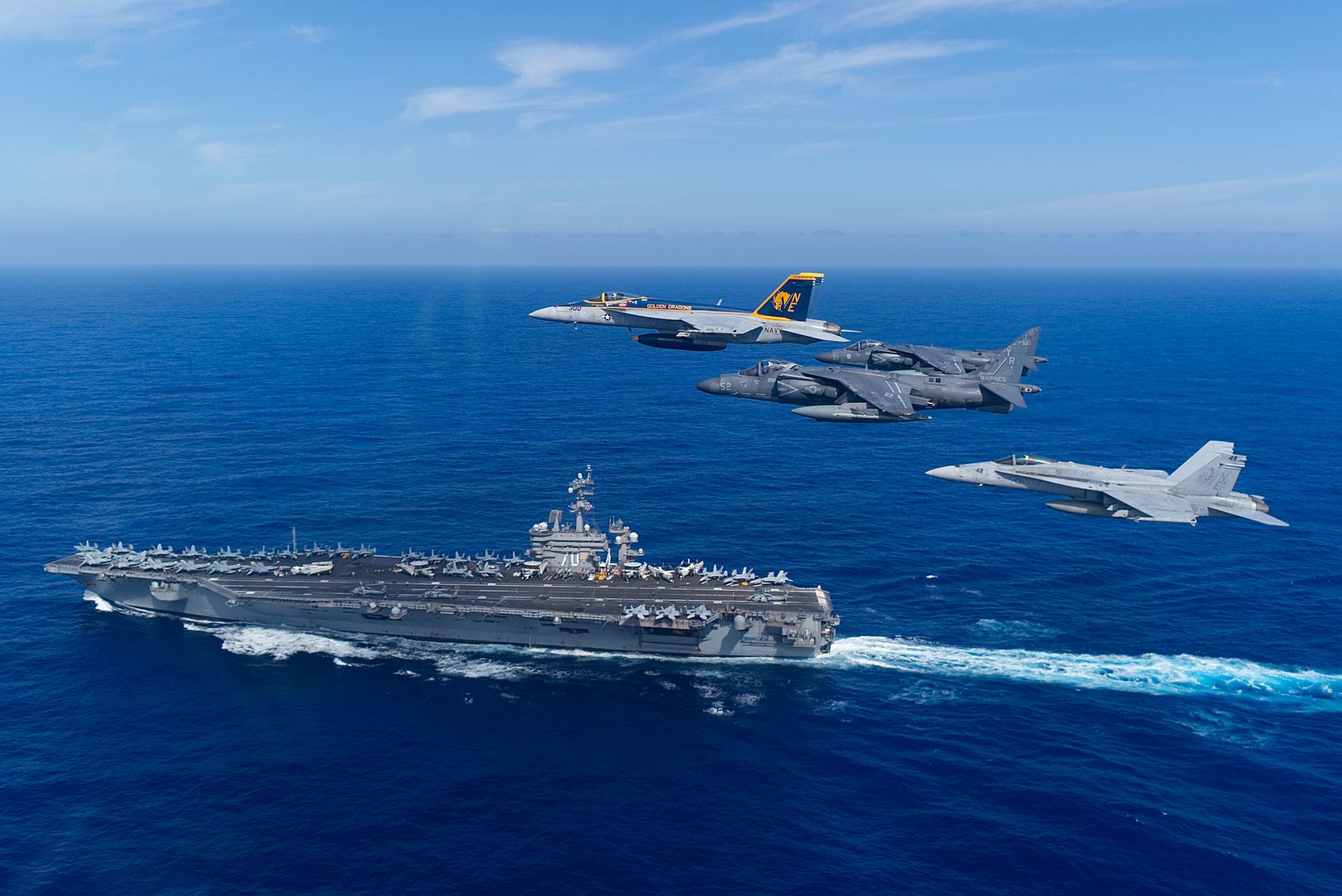
PACIFIC OCEAN (Jan. 20, 2018) An F/A-18F Super Hornet assigned to the "Bounty Hunters" of Strike Fighter Squadron (VFA) 2 prepares to launch from the flight deck of Nimitz-class aircraft carrier USS Carl Vinson (CVN 70). Carl Vinson Strike Group is currently operating in the Pacific as part of a regularly scheduled deployment. (U.S. Navy Photo by Mass Communication Specialist 3rd Class Dylan M. Kinee/Released)
PACIFIC OCEAN (Jan. 20, 2018) An F/A-18E Super Hornet assigned to the "Kestrels" of Strike Fighter Squadron (VFA) 192 taxis across the flight deck of Nimitz-class aircraft carrier USS Carl Vinson (CVN 70). Carl Vinson Strike Group is currently operating in the Pacific as part of a regularly scheduled deployment. (U.S. Navy photo by Mass Communication Specialist Seaman Apprentice Eleanor D. Vara/Released)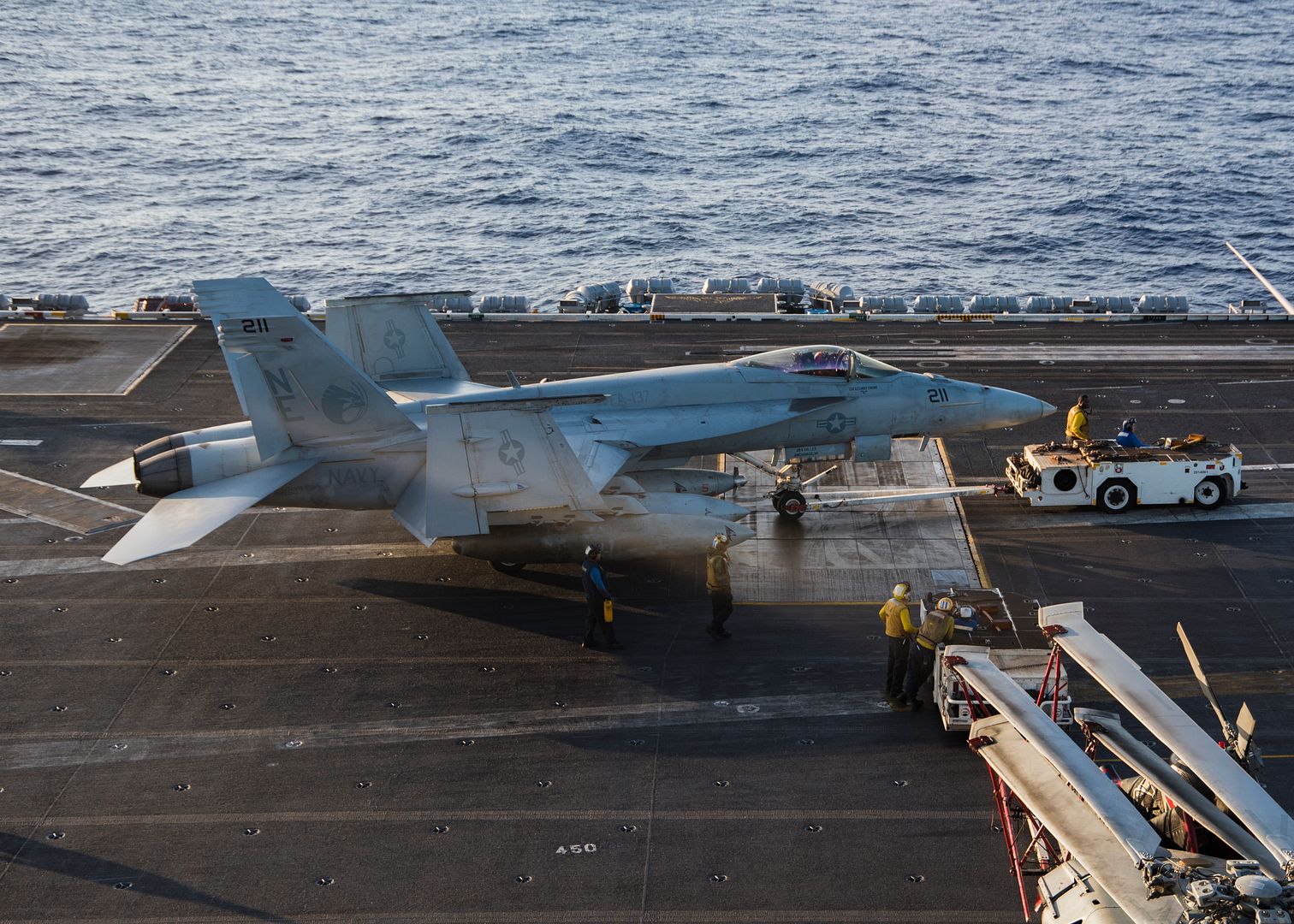
EVERETT, Wash., Jan. 22, 2018 /PRNewswire/ -- Boeing [NYSE: BA] announced today the 787-10 Dreamliner received an amended type certificate (ATC) from the U.S. Federal Aviation Administration (FAA), clearing the airplane for commercial service.
The awarding of ATC caps a successful flight test program that began in March 2017 and involved three flight test airplanes that accumulated about 900 test hours. Boeing's flight test program team took the airplanes through a series of tests to confirm the airplane's handling, systems and overall performance met internal requirements and certification standards to ensure safety of flight.
"We are pleased to have met the rigorous standards set forth by the FAA and are eager to bring the airplane to market for our valued customers," said Brad Zaback, vice president and general manager of the 787 program. "After years of design and testing, our team has proven the quality, safety and reliability of the newest member of the Dreamliner family and we look forward to seeing the airplane in service later this year."
Other aviation regulatory agencies are expected to follow the FAA's lead and certify the airplane before it enters service.
The 787 Dreamliner is a family of super-efficient airplanes with new passenger-pleasing features. As a stretch of the 787-9, the 787-10 retains over 95 percent commonality while adding seats and cargo capacity, setting a new benchmark for fuel efficiency and operating economics at 25 percent better fuel per seat and emissions than the airplanes it will replace. The airplane can fly 330 passengers, in a typical two-class configuration, up to 6,430 nautical miles (11,910 km).
To date, Boeing has over 170 orders for the 787-10 from nine customers worldwide. First delivery is expected to Singapore Airlines in the first half of 2018.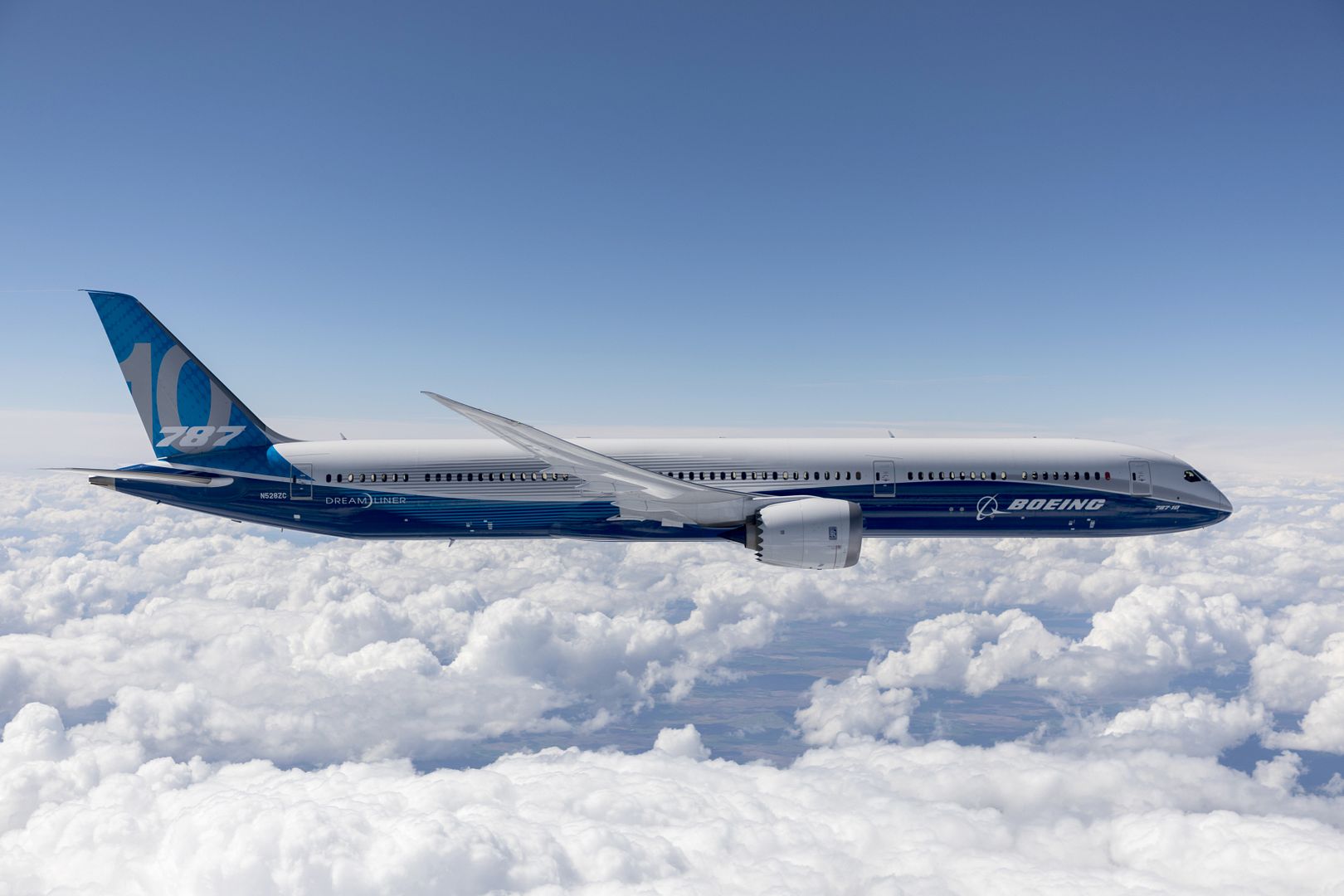
Brazil has ordered an additional Airbus C295 search and rescue (SAR) aircraft that will eventually take to 15 the number of C295s in service with the Brazilian Air Force (FAB).
This latest order constitutes the firming of an option included in an earlier contract in 2014. It was signed at the end of last year and will therefore be included in the 2017 orderbook. The three SAR aircraft will serve alongside 12 transport-configured C295s already delivered.
The first of the three SAR aircraft was delivered last year and performed a successful five week tour through four continents before arriving in Brazil. The aircraft demonstrated its maritime patrol and search and rescue capabilities in a wide range of environments and recorded 100% availability during the tour.
The second FAB C295 SAR will be delivered in 2019 and the third in 2020.
More than 200 C295s have now been ordered by 26 countries. In the Latin American region, more than 100 Airbus military transport aircraft of all kinds are now in operation.
-
 Main AdminA CH-53E Super Stallion helicopter with Marine Heavy Helicopter Squadron 464 taxis towards the runway before a flight in Brunswick, ME., January 23, 2018. Marines with HMH-464 are participating in a training exercise in Brunswick, ME., and are conducting mountainous and maritime operations to get accustomed to training and operating in cold weather environments. (U.S. photo taken by Cpl. Autmn S. Bobby)
Main AdminA CH-53E Super Stallion helicopter with Marine Heavy Helicopter Squadron 464 taxis towards the runway before a flight in Brunswick, ME., January 23, 2018. Marines with HMH-464 are participating in a training exercise in Brunswick, ME., and are conducting mountainous and maritime operations to get accustomed to training and operating in cold weather environments. (U.S. photo taken by Cpl. Autmn S. Bobby)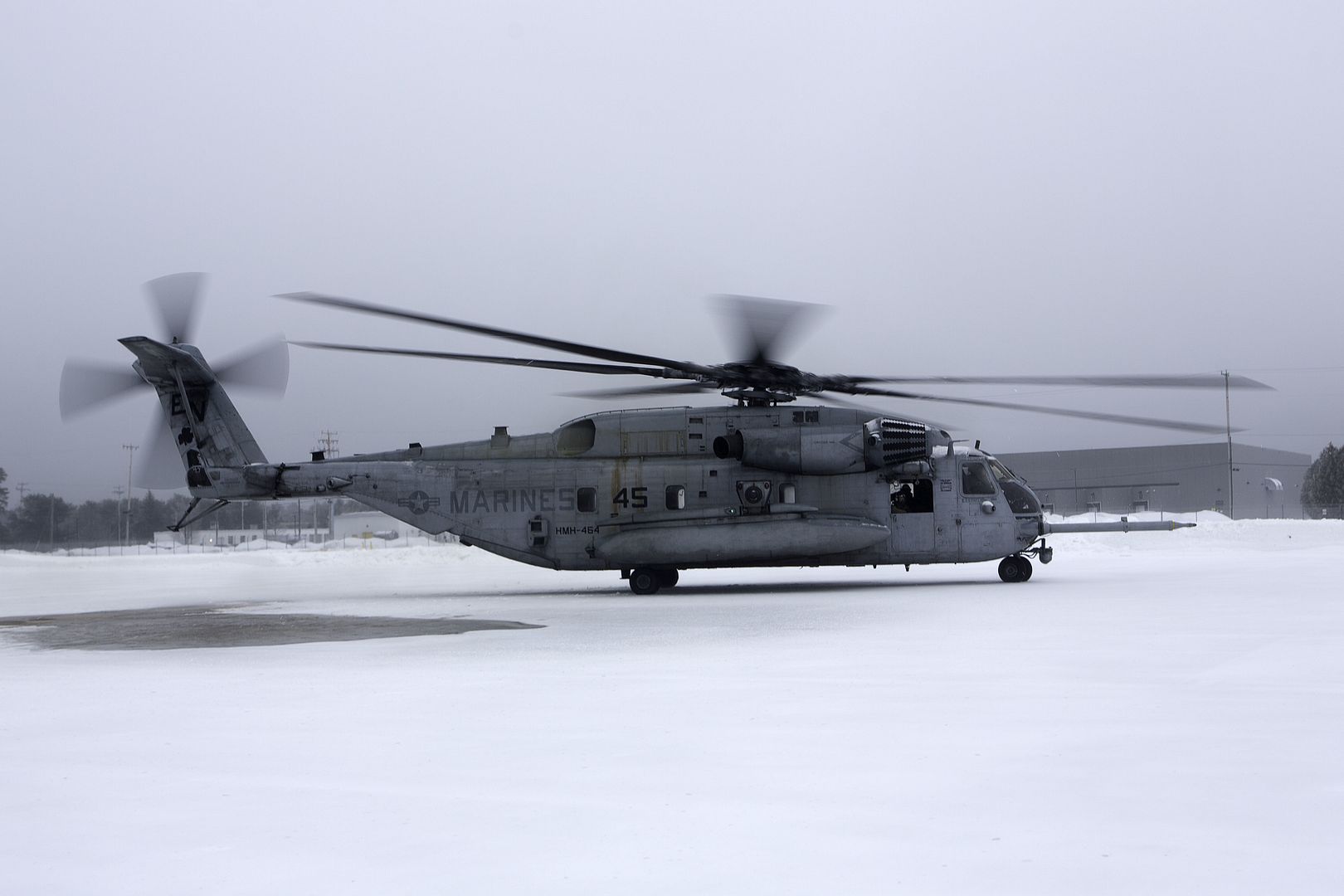
ARABIAN GULF (Jan. 23, 2018) An F/A-18C Hornet, assigned to the Checkerboards of Marine Strike Fighter Attack Squadron (VMFA) 312, launches from the flight deck of the aircraft carrier USS Theodore Roosevelt (CVN 71). Theodore Roosevelt and its carrier strike group are deployed to the U.S. 5th Fleet area of operations in support of maritime security operations to reassure allies and partners and preserve the freedom of navigation and the free flow of commerce in the region. (U.S. Navy photo by Mass Communication Specialist 3rd Alex Perlman/Released)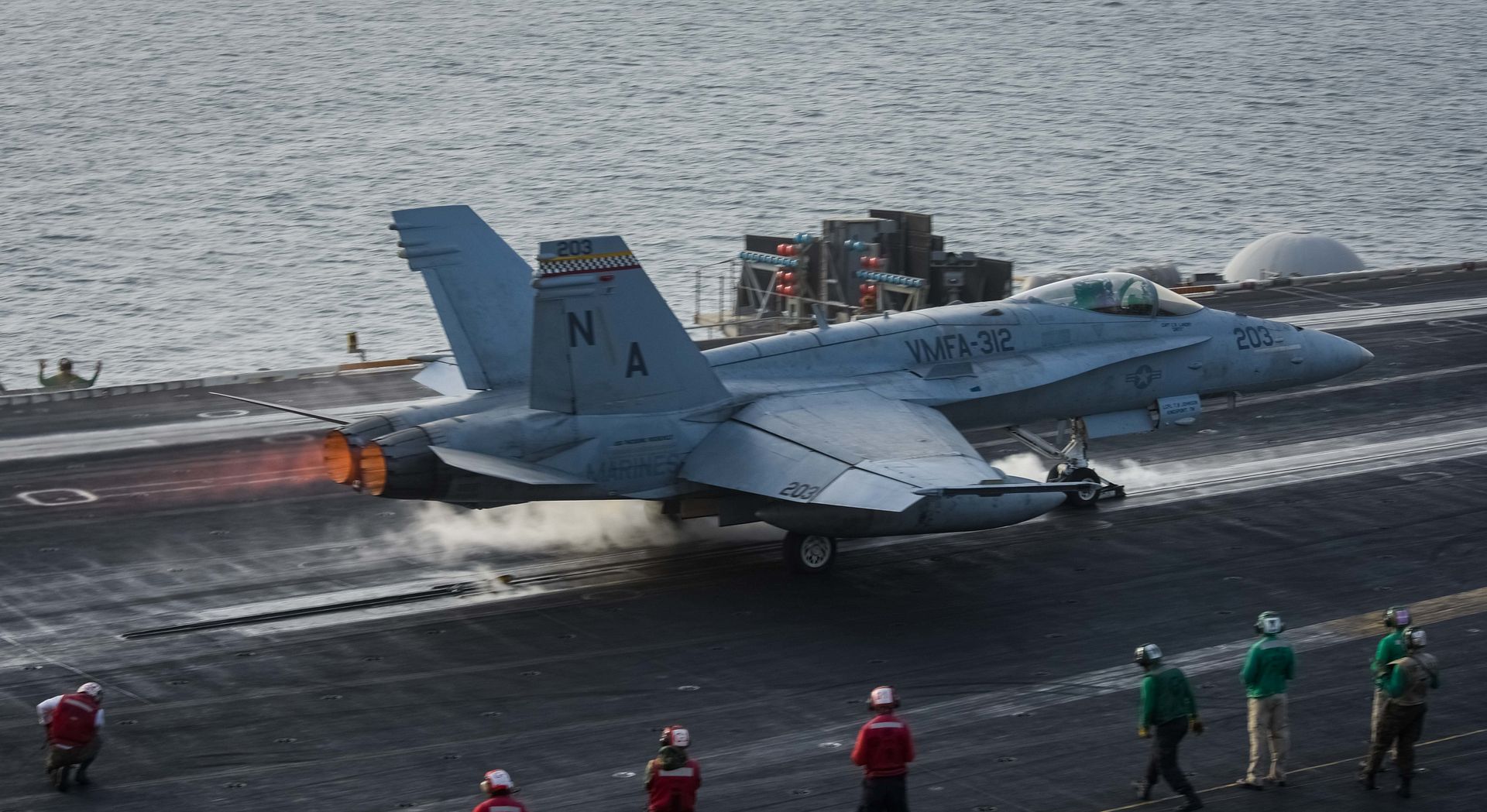
A U.S. Air Force F-16 Fighting Falcon aircraft, assigned to the 18th Aggressor Squadron (AGRS) out of Eielson Air Force Base, Alaska, flies during exercise Sentry Aloha (SA) 18-1 on Jan. 12, 2018, at Joint Base Pearl Harbor-Hickam, Hawaii. After SA 18-1 ends, the 18th AGRS will depart for Andersen Air Force Base, Guam to participate in Cope North 18-1. (U.S. Air Force photo by Senior Airman Joshua Weaver)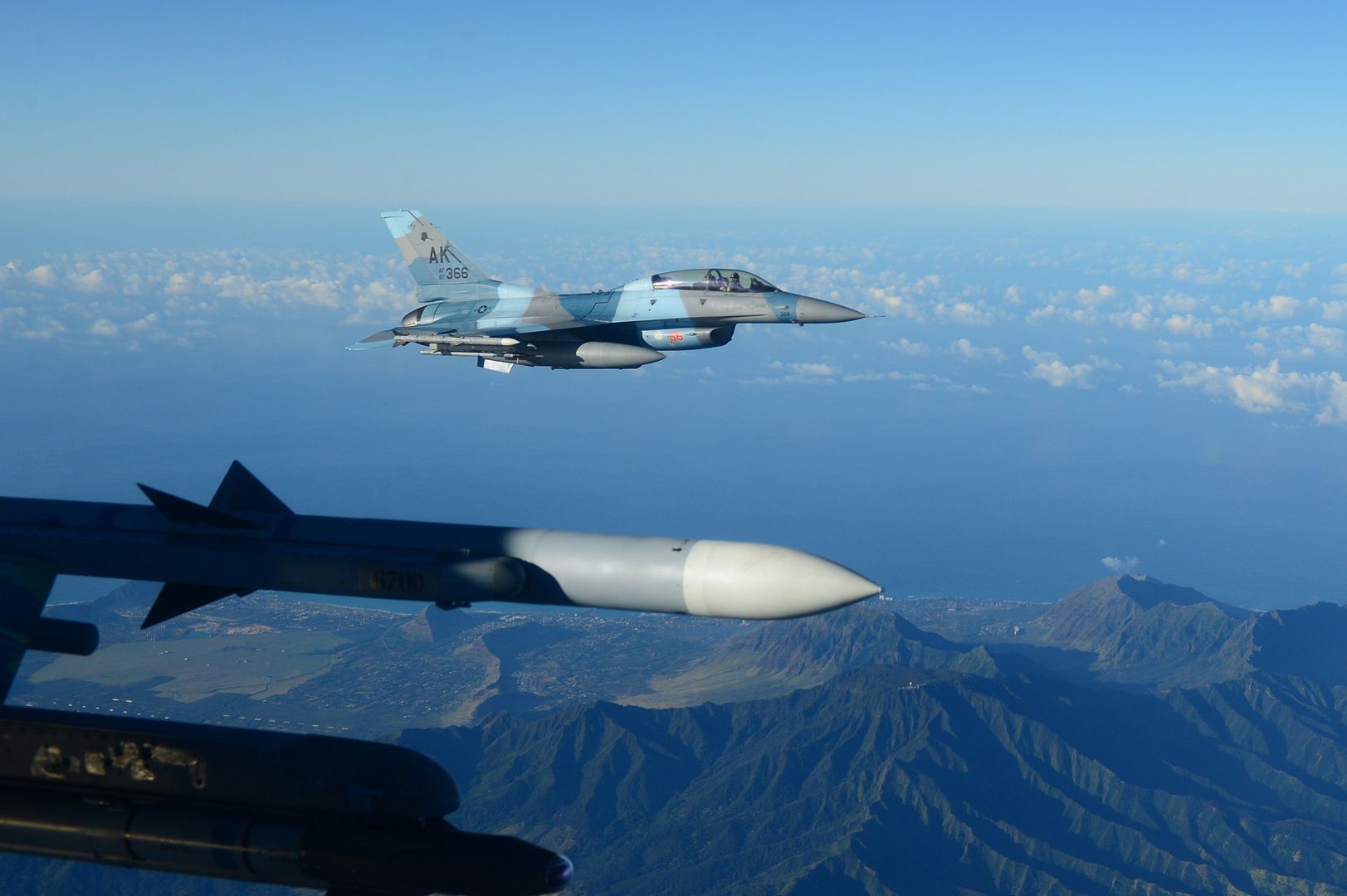
NELLIS AIR FORCE BASE, Nev.- --
The U.S. Air Force kicks off its largest three-week premier air-to-air combat training exercise, Red Flag 18-1, beginning Jan. 26 and will conclude Feb. 16.
Base officials want to remind Southern Nevada residents will notice increased military aircraft activity due to aircraft departing from Nellis Air Force Base, Nevada, twice-a-day to participate in training exercises on the Nevada Test and Training Range.
?We?re trying a few new and different things with Red Flag 18-1,? said Col Michael Mathes, 414th Combat Training Squadron commander. ?It?s the largest Red Flag ever with the largest number of participants, highlighting the balance of training efficiency with mission effectiveness.?
While Red Flag occurs in multiple iterations annually, each one has a unique training purpose ? 18-1 is no exception.
?Red Flag 18-1 primarily is a strike package focused training venue that we integrate at a command and control level in support of joint task force operations,? said Mathes. ?It?s a lot of words to say that we integrate every capability we can into strike operations that are flown out of Nellis Air Force Base.?
The training offered during Red Flag has prepared armed forces for future engagements.
?Red Flag remains a great mix of heritage and future potential,? said Mathes. ?We are very proud of our heritage with the way that red flag had improved survivability and readiness over the years. We look forward as we continue to grow readiness through integrated training as well as improving training efficiency.?
The exercise typically involves a variety of attack, fighter and bomber aircraft as well as participants from the U.S. Air Force, U.S. Navy, U.S. Army, Marine Corps, Royal Australian Air Force and Royal Air Force.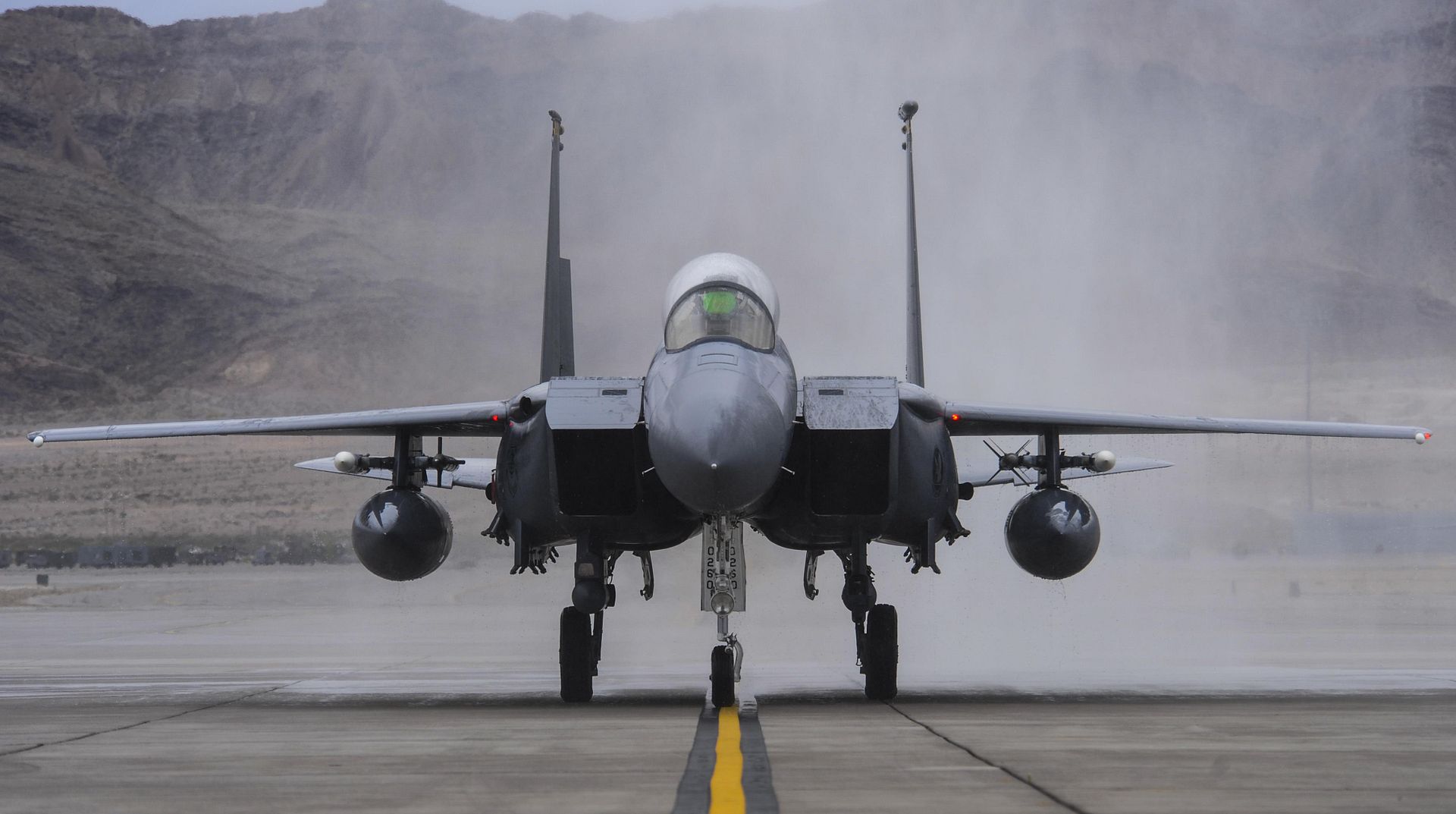
Madrid, 23 January 2018 ? Airbus Defence and Space has delivered to the Spanish Air Force the first two Eurofighter Typhoons to be produced in the latest configuration with enhanced air-to-surface capabilities.
The aircraft were manufactured at the Getafe Final Assembly Line in the P1Eb FW (Phase 1 Enhanced Further Work) configuration which marks a key step in the overall Eurofighter evolution plan.
This same configuration is being retrofitted to in-service aircraft by other Eurofighter nations. It provides increased integration of a variety of air-to-surface weapons and enhanced targeting among other improvements.
Spanish procurement agency DGAM took delivery of the aircraft on 22 December and they were subsequently ferried to Albacete air force base to enter service. The remaining six of the 73 aircraft currently contracted by Spain will be delivered to the same P1Eb FW standard during 2018 and 2019.
Airbus Operating Officer, Military Aircraft, Alberto Gutierrez said: ?The smooth introduction of these enhanced features is a vital element of Eurofighter?s evolution. It is a big tribute to the Airbus and Spanish customer teams that they achieved this on-time through effective collaboration and clearly demonstrates the rich manufacturing capability here at Getafe.?
DGAM Head of Aeronautical Systems Gen L?on Antonio Mach?s said: ?The entry into service of these aircraft is the outcome of strong collaborative activity between our personnel and those of Airbus. It is an excellent illustration of the technical expertise that will support many more years of Eurofighter industrial activity in Spain.?
Dublin, Ireland, January 22nd, 2018 ? As the E190-E2 new generation narrow-body jet approaches certification, Embraer announces some final results from flight tests confirming that the aircraft is better than its original specification and even more efficient than other single aisle aircraft. In fuel consumption, the E190-E2 proved to be 1,3% better than originally expected, which represents a 17,3% improvement when compared to the current generation E190, and nearly 10% better than its direct competitor. The E190-E2 also becomes the most environmentally friendly aircraft in the segment, with the lowest level of external noise and emissions. The cumulative margin to ICAO Stage IV noise limit increases from 17 to 20 EPNdB, which results in 2 EPNdB better than its direct competitor. Rodrigo Silva e Souza, Marketing VP, Embraer Commercial Aviation, said, ?this means that when our first operator , Wider?e, operates its inaugural E190-E2 flight on April 24th from Bergen to Troms?, it will be the first in-service flight of the world?s most efficient and eco-friendly narrow-body jet. This is an immense achievement for our team and means additional value delivered to our customers.? Flight test results also confirmed the E190-E2 to be better than its original specification in takeoff performance. The aircraft?s range from airports with hot-and-high conditions, such as Denver and Mexico City, increases by 600 nm compared to current generation aircraft. Its range from airports with short runways, such as London City also increases by more than 1,000 nm allowing the aircraft to reach destinations like Moscow and the north of Africa.
E190-E2 also becomes the aircraft with the longest maintenance intervals in the single aisle market with 10,000 flight hours for basic checks and no calendar limit in typical E-Jets utilization. This means additional 15 days of aircraft utilization in a period of ten years compared to current generation E-Jets. Another key program target where the E190-E2 obtained better results than initial expectations is in pilots transition training time. Pilots of Current generation E-Jets will need only 2.5 days of training and no full flight simulator to fly an E2. ?Decreasing the training burden for pilots transitioning from E1 is another huge reduction in both time and cost for our operators. This coupled with the E2 family?s world leading fuel efficiency and lowest noise footprint, make the E2 the most cost effective aircraft in its segment by every measure?, explained Silva. Embraer is the world?s leading manufacturer of commercial jets with up to 150 seats. The Company has 100 customers from all over the world operating the ERJ and the E-Jet families of aircraft. For the E-Jets program alone, Embraer has logged more than 1,800 orders and 1,400 deliveries, redefining the traditional concept of regional aircraft by operating across a range of business applications.
-
6 years agoWed Jan 24 2018, 11:08pm
 Main AdminARABIAN GULF (Jan. 24, 2018) Marines move an F/A-18C Hornet, assigned to the Checkerboards of Marine Strike Fighter Attack Squadron (VMFA) 312, on the flight deck of the aircraft carrier USS Theodore Roosevelt (CVN 71). Theodore Roosevelt and its carrier strike group are deployed to the U.S. 5th Fleet area of operations in support of maritime security operations to reassure allies and partners and preserve the freedom of navigation and the free flow of commerce in the region. (U.S. Navy photo's by Mass Communication Specialist 3rd Class Spencer Roberts/Released)
Main AdminARABIAN GULF (Jan. 24, 2018) Marines move an F/A-18C Hornet, assigned to the Checkerboards of Marine Strike Fighter Attack Squadron (VMFA) 312, on the flight deck of the aircraft carrier USS Theodore Roosevelt (CVN 71). Theodore Roosevelt and its carrier strike group are deployed to the U.S. 5th Fleet area of operations in support of maritime security operations to reassure allies and partners and preserve the freedom of navigation and the free flow of commerce in the region. (U.S. Navy photo's by Mass Communication Specialist 3rd Class Spencer Roberts/Released)

ARABIAN GULF (Jan. 24, 2018) An F/A-18F Super Hornet, assigned to the Fighting Redcocks of Strike Fighter Attack Squadron (VFA) 22, lands on the flight deck of the aircraft carrier USS Theodore Roosevelt (CVN 71). Theodore Roosevelt and its carrier strike group are deployed to the U.S. 5th Fleet area of operations in support of maritime security operations to reassure allies and partners and preserve the freedom of navigation and the free flow of commerce in the region. (U.S. Navy photo by Mass Communication Specialist 3rd Class Victoria Foley/Released)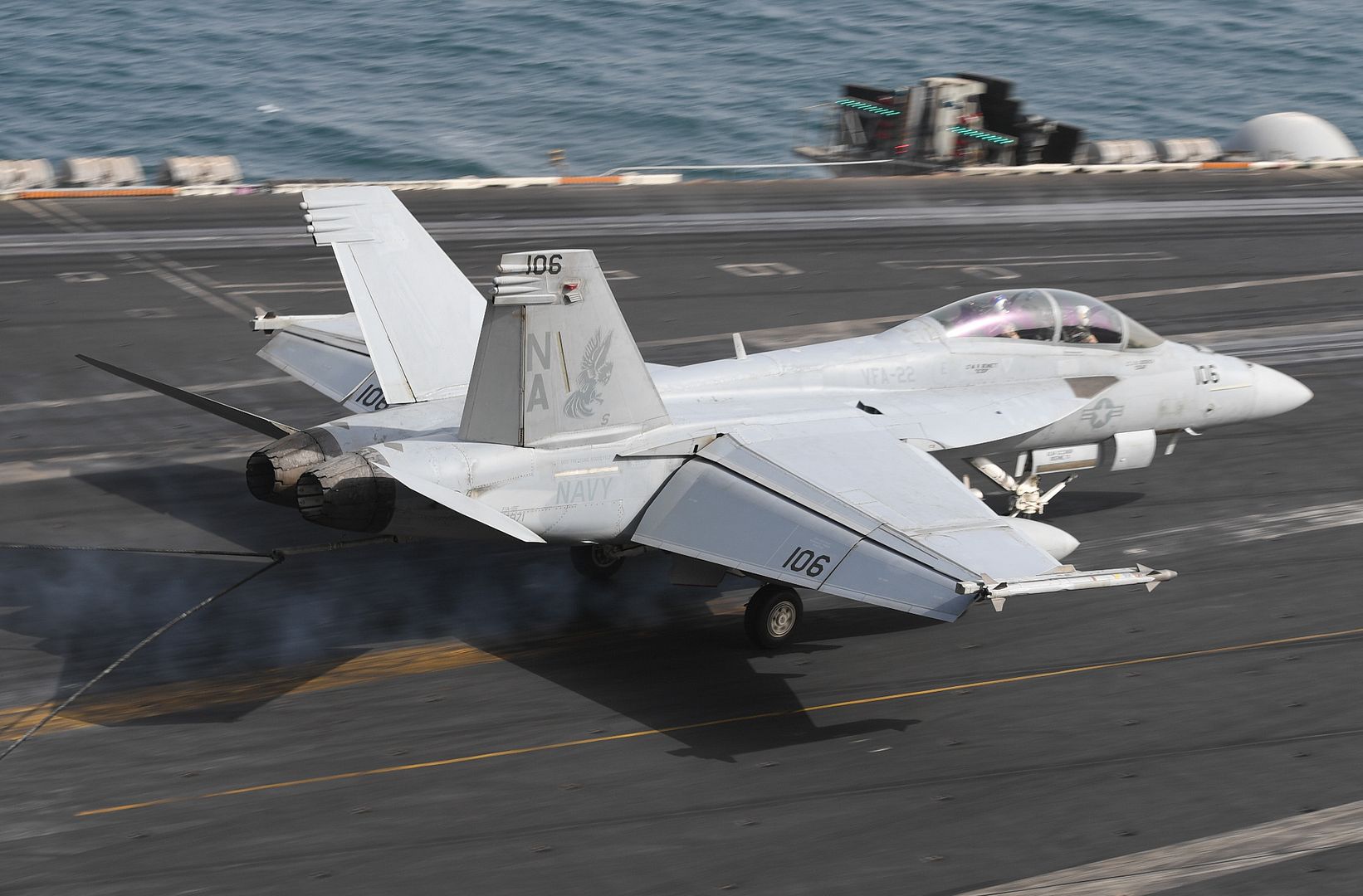
A pilot assigned to the 71st Fighter Training Squadron prepares to do a low pass in a T-38 Talon over the Atlantic Ocean, Jan. 24, 2018. The two-seat jet has a top speed of 858 miles per hour. As the world's first supersonic trainer, the T-38 first flew in 1959 and continues to be used to this day. (U.S. Air Force Photo by Staff Sgt. Carlin Leslie)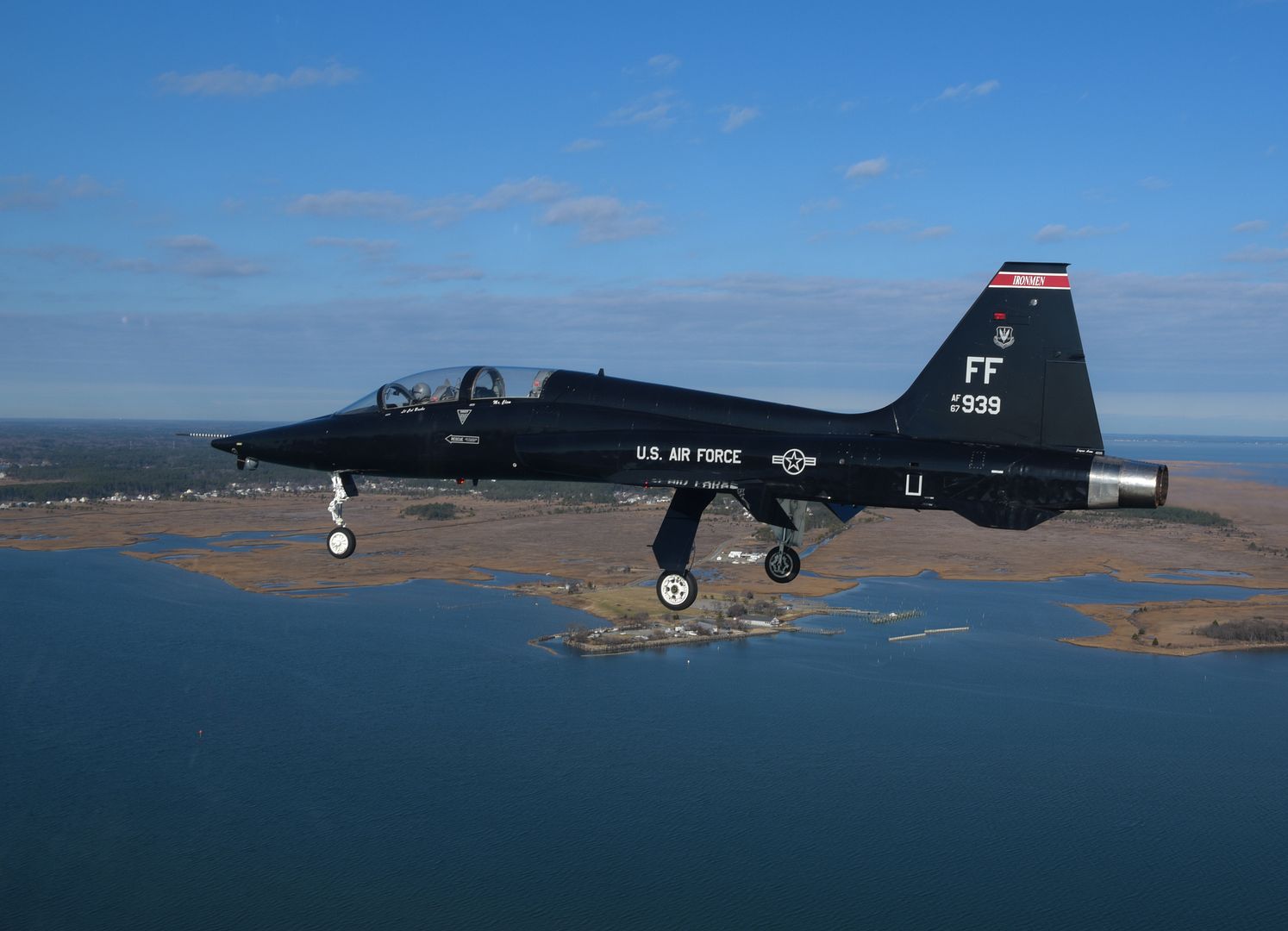
Pilots assigned to the 71st Fighter Training Squadron and the 192nd Fighter Wing fly T-38 Talons over the Atlantic Ocean, Jan. 24, 2018. The two-seat jet has a top speed of 858 miles per hour. As the world's first supersonic trainer, the T-38 first flew in 1959 and continues to be used to this day. (U.S. Air Force Photo's by Staff Sgt. Carlin Leslie)

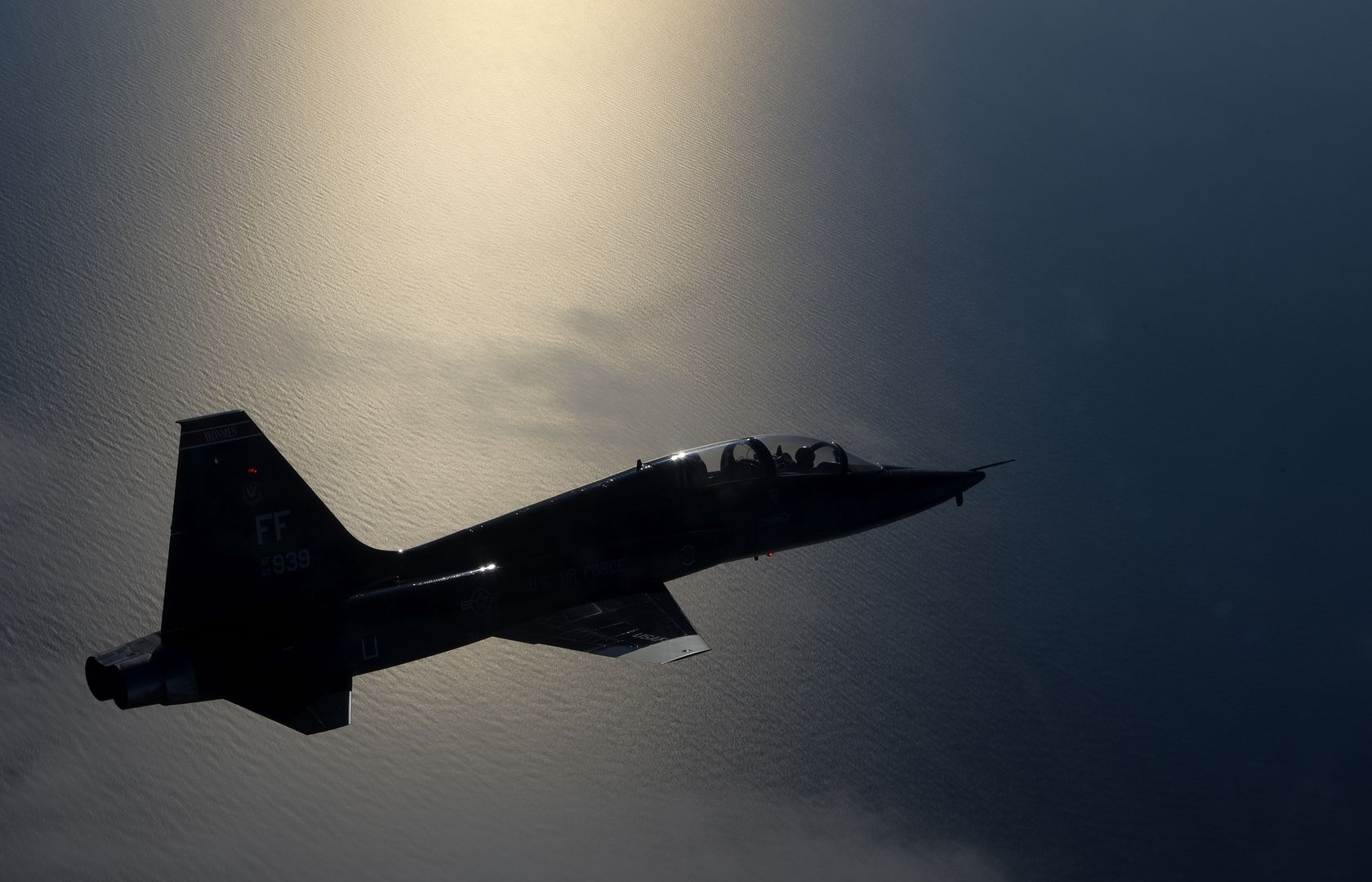
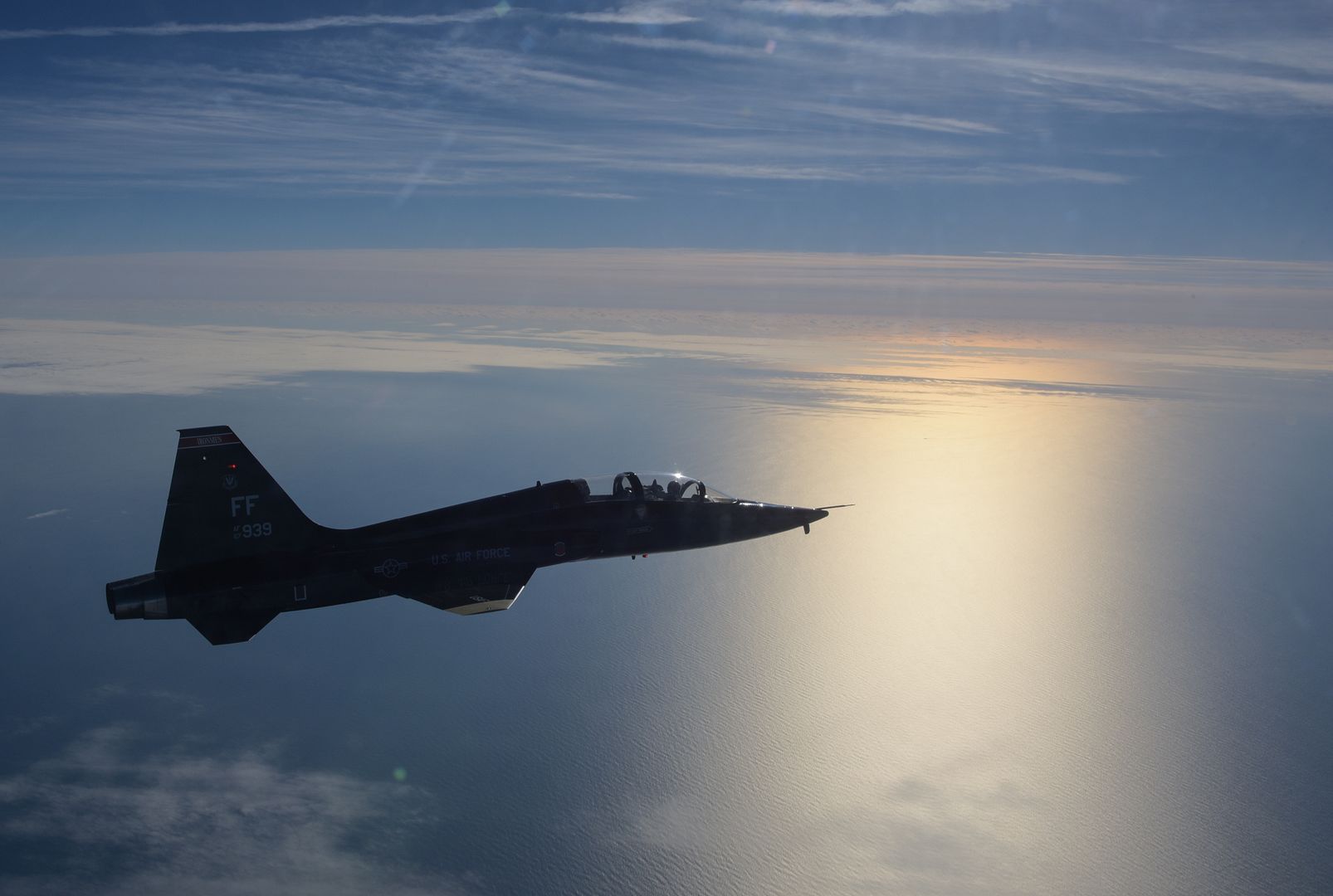
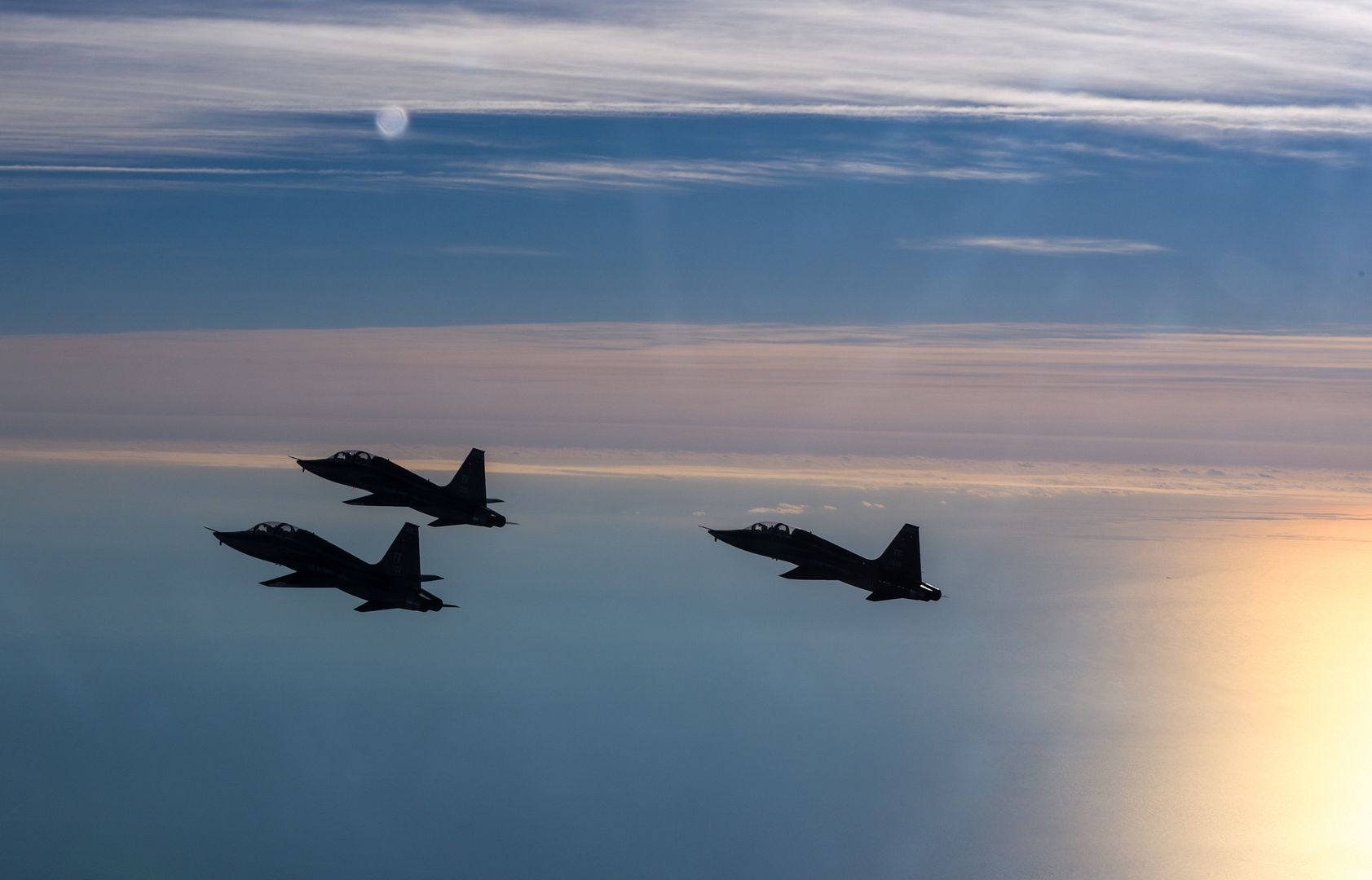

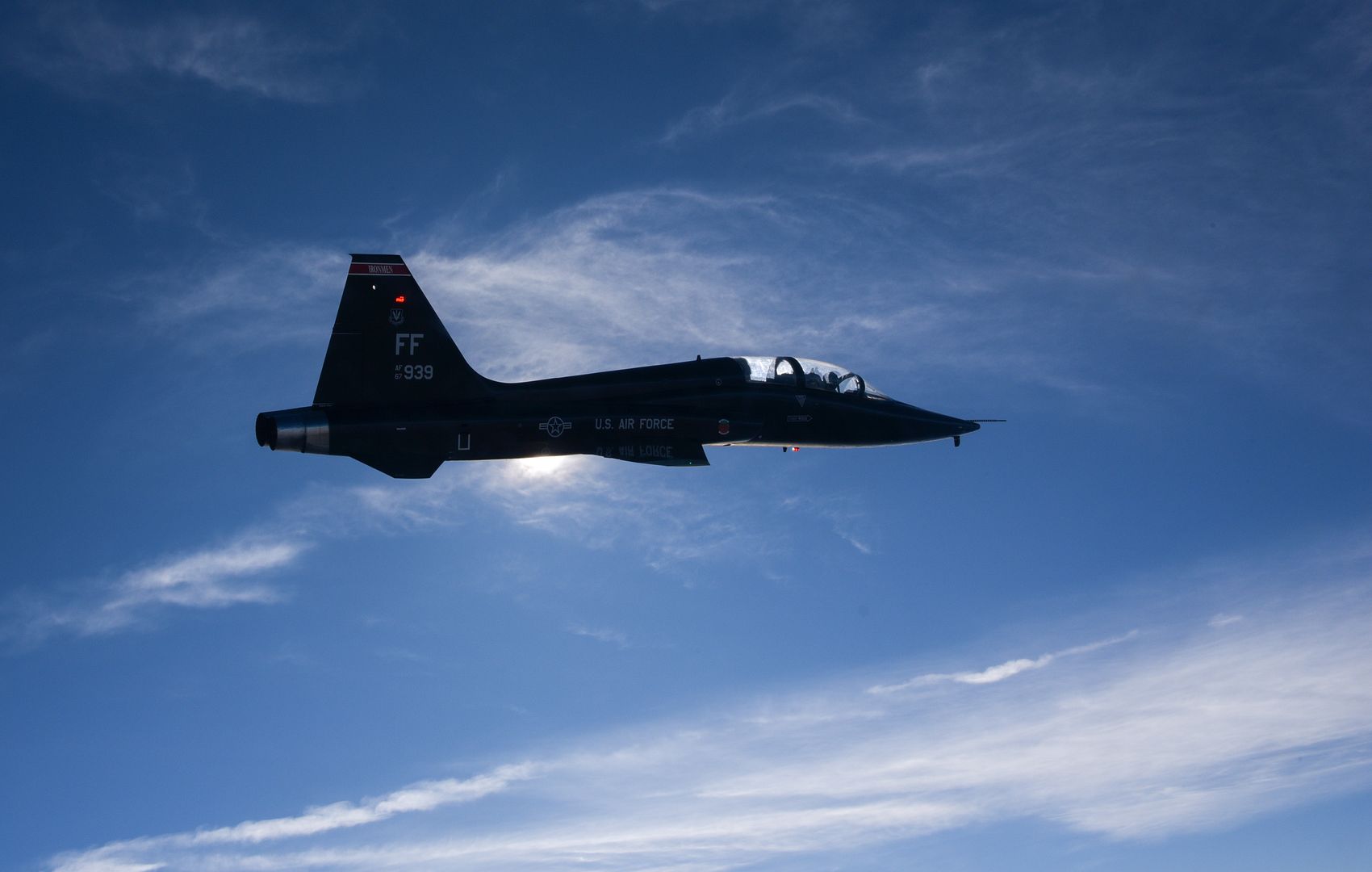
A-10C ?Warthog? pilots from the 163rd Fighter Squadron, and Aircraft Maintenance Crew Chiefs from the 122nd Fighter Wing, Fort Wayne, Ind., prepare for takeoff during Operation Guardian Blitz, Jan 23, 2018, at MacDill Air Force Base, Fla. Operation Guardian Blitz will provide training opportunities to practice our core skills of Close Air Support, Forward Air Control and Combat Search and Rescue. The Blacksnakes of the 122nd FIghter Wing and our 163rd Fighter Squadron constantly train to ensure our members are always prepared to defend the nation. (U.S. Air National Guard photo by Staff Sgt. William Hopper/Released)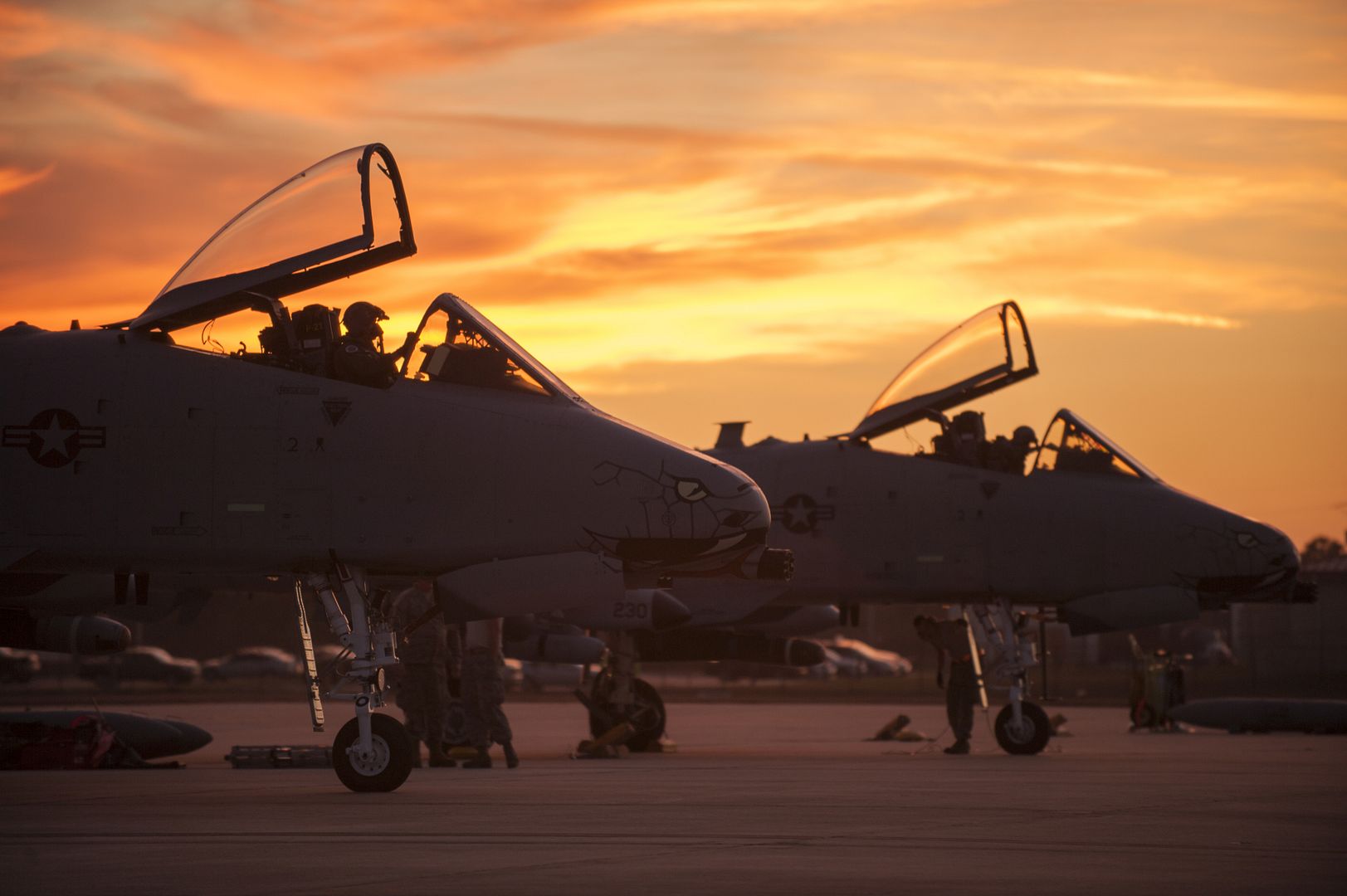
-
 Main AdminSoldiers of the 1st Attack Reconnaissance Battalion, 227th Aviation Regiment, 1st Air Cavalry Brigade, 1st Cavalry Division, conduct post-flight checks of their AH-64 Apache helicopters after moving to their tactical assembly area inside the Hohenfels Training Area, Germany, Jan. 25, 2018. The Soldiers are participating in Allied Spirit VIII, an exercise to enhance NATO and key partner interoperability, build readiness and strengthen relationships across war fighting functions. (U.S. Army photo by Sgt. Gregory T. Summers / 22nd Mobile Public Affairs Detachment)
Main AdminSoldiers of the 1st Attack Reconnaissance Battalion, 227th Aviation Regiment, 1st Air Cavalry Brigade, 1st Cavalry Division, conduct post-flight checks of their AH-64 Apache helicopters after moving to their tactical assembly area inside the Hohenfels Training Area, Germany, Jan. 25, 2018. The Soldiers are participating in Allied Spirit VIII, an exercise to enhance NATO and key partner interoperability, build readiness and strengthen relationships across war fighting functions. (U.S. Army photo by Sgt. Gregory T. Summers / 22nd Mobile Public Affairs Detachment)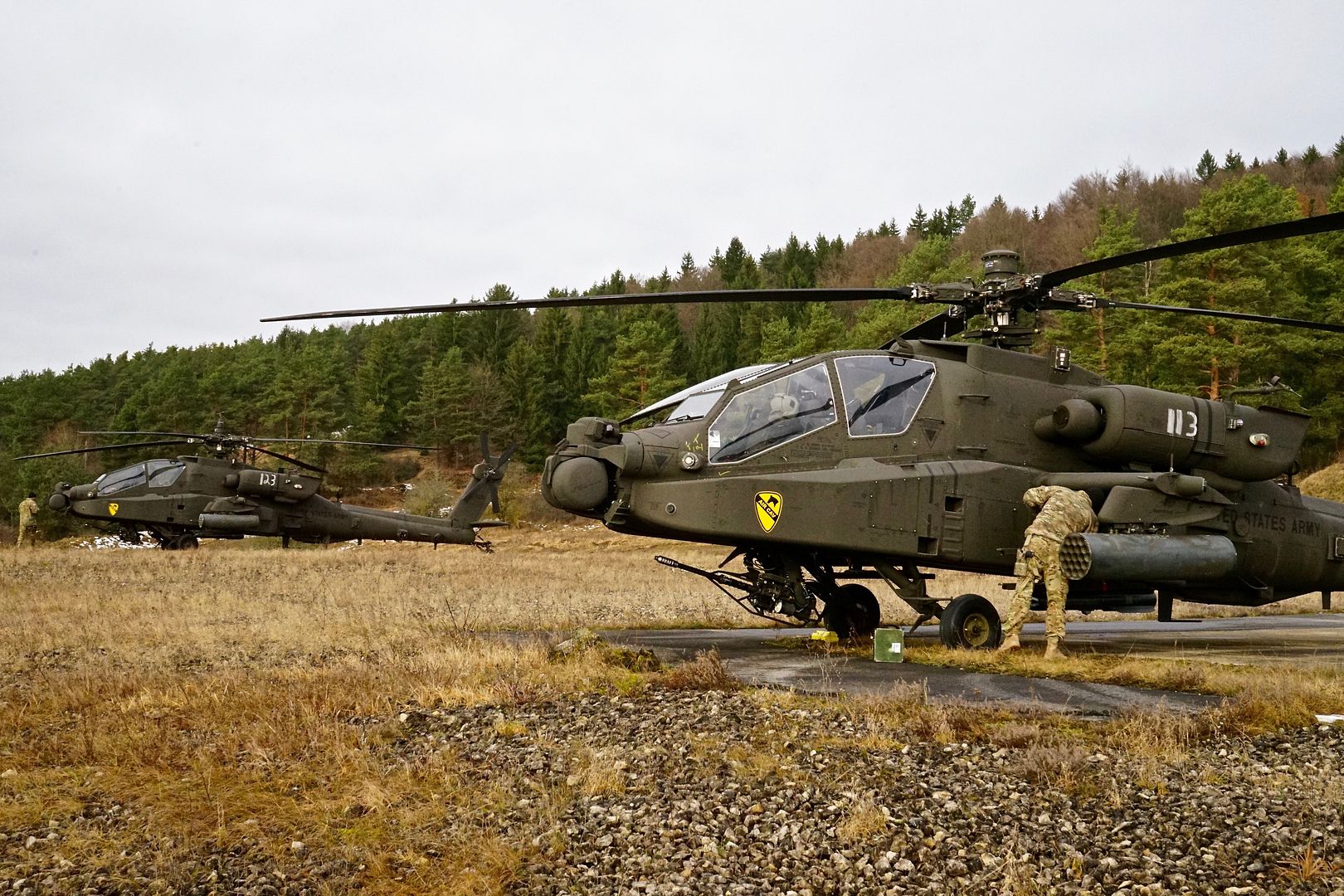
U.S. Air Force Maj. Matthew Olson, F-35A Lightning II pilot from Hill Air Force Base, Utah, performs pre-flight checks before a training flight Jan. 25, 2018, at Kadena Air Base, Japan. The F-35A is deployed under U.S. Pacific Command?s theater security package program, which has been in operation since 2004. (U.S. Air Force photo by Senior Airman Quay Drawdy)
UK Fighter Pilots Fly F-35 Lightning Straight from Training for First Time
(Source: UK Ministry of Defence; issued Jan 25, 2018)
A pair of fighter pilots have become the first in their services to fly the F-35 Lightning straight from training. Flight Lieutenant Liam and Lieutenant Chris became the first Royal Air Force and Royal Navy pilots respectively to proceed straight from flying training in a Hawk to fly the multi-role combat aircraft.
Speaking after his flight, Flt Lt Liam said: ?It was a sensational experience and, as the culmination of many years training, was certainly the highlight of my time in the RAF so far. I was astonished at the jet's performance and at how well the simulator had prepared me for taking the Lightning flying.
?Much of the first flight is about exploring the aircraft's performance envelope and breaking the sound barrier was a particular highlight. It is easy to see why every pilot here loves flying the aircraft and I am eager to press on and get stuck in to operating the Lightning and exploring it's potential.?
Fellow pilot Lt Chris added: ?To fly a Lightning for the first time is almost indescribable. After over seven years of training in the Royal Navy, to finally get into the real aircraft and take it airborne was one of the proudest and most exciting experiences of my life so far.
?The computer systems, helmet display, and sensors are at the cutting edge of what is currently possible and I'm extremely excited to work on exploiting this potential as well as being part of its integration with HMS Queen Elizabeth and HMS Prince of Wales over the coming years.?
With no two-seat variant of the F-35 the first flight for any pilot in a Lightning is always solo.
Commenting on the flights Air Commodore Linc Taylor, Senior Responsible Owner for the UK's Lightning Programme, said: ?I am delighted that our first two ab initio pilots have flown Lightning and joined the rapidly expanding cadre of UK Lightning pilots. For any military pilot the first time you fly a front-line aircraft is something you never forget, but to be the first to progress straight from training to fly F-35 is something to be especially proud of.
?I wish both pilots every success in their future careers and look forward seeing them both in the UK this summer when 617 Squadron returns to RAF Marham.?
The training of UK Lightning pilots is currently undertaken as part of a much larger UK Detachment at Marine Corps Air Station Beaufort, South Carolina. This ?pooling? arrangement with the United States Marine Corps (USMC) facilitates the high training rate necessary for build the essential numbers of personnel qualified and experienced to form the first operational UK squadron, No. 617 Squadron (the ?Dambusters?) in 2018.
To date the cadre of UK Lightning pilots, have all transitioned from other aircraft and both new Lightning pilots were accompanied on their first flights by an instructor in a second aircraft.
The F-35 Lightning is an advanced, next generation aircraft procured to operate alongside the RAF?s Typhoon. It will be jointly manned by the RAF and RN and will form an integral part of Carrier Strike operating from the Queen Elizabeth Class aircraft carriers.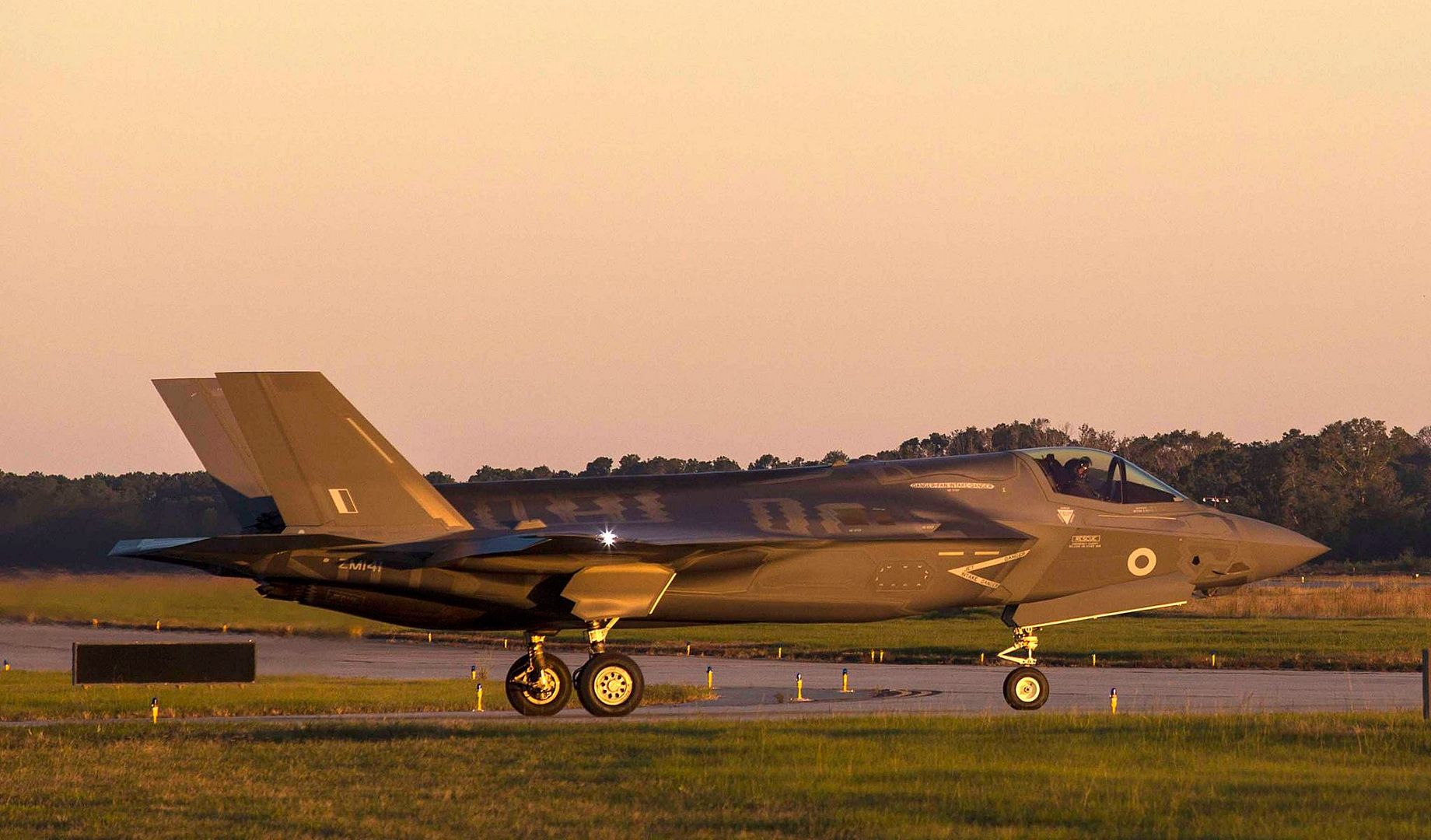
An A-10C ?Warthog? aircraft from the 122nd Fighter Wing, Fort Wayne, Ind., sits in the glow of flood lights after landing during the commencement of Operation Guardian Blitz, Jan 22, 2018, at MacDill Air Force Base, Fla. Operation Guardian Blitz will allow us to integrate our training with other military units in the region, to include air-to-air refuelers, rotary assets and Joint Terminal Air Controllers (JTACs). The Blacksnakes of the 122nd FIghter Wing and our 163rd Fighter Squadron constantly train to ensure our members are always prepared to defend the nation. (U.S. Air National Guard photo by Staff Sgt. William Hopper/Released)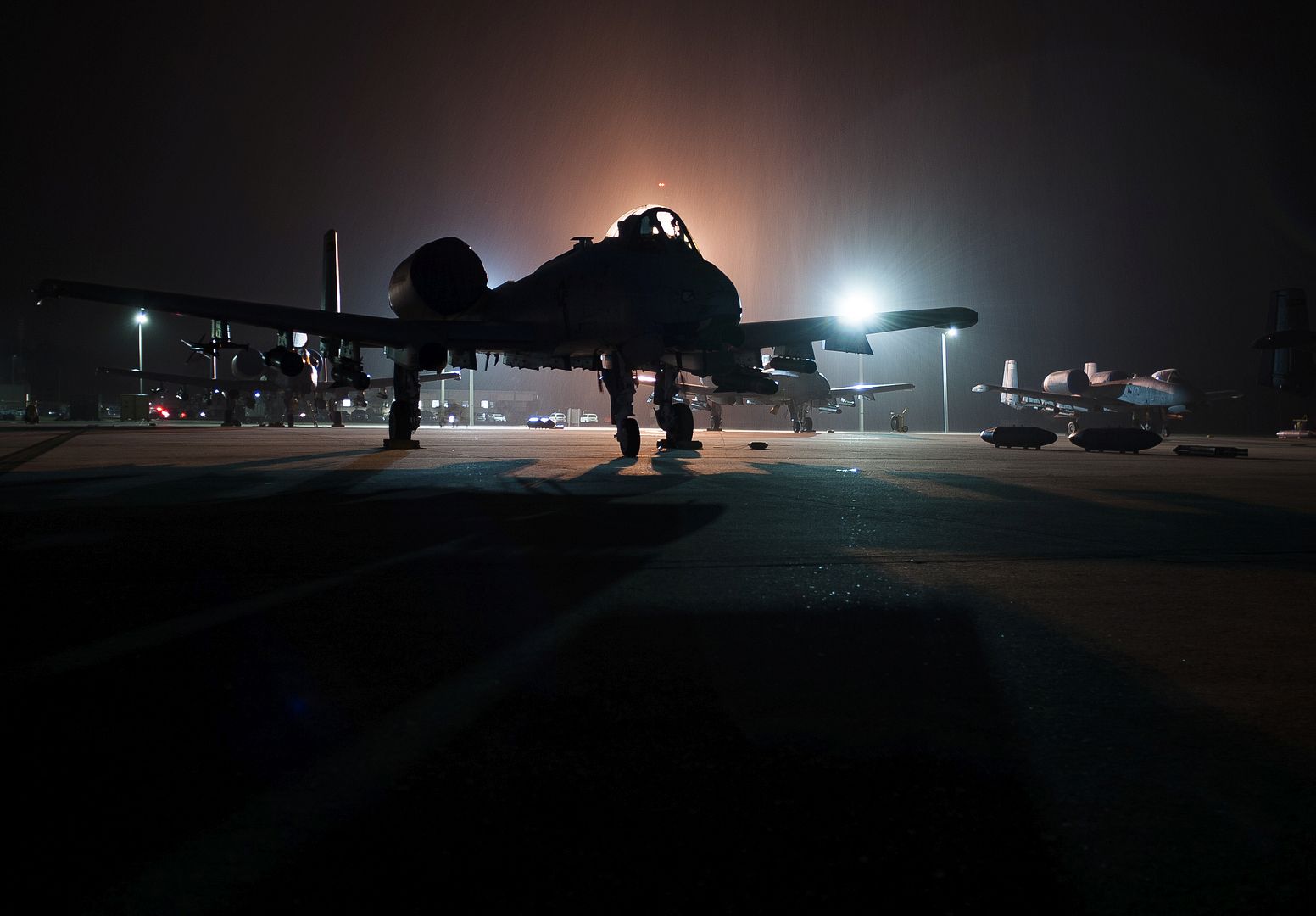
-
 Main AdminAn AH-64 Apache attack helicopter crew with the 1st Attack Reconnaissance Battalion, 227th Aviation Regiment, 1st Air Cavalry Brigade, 1st Cavalry Division, takes off from the tactical airfield inside the Hohenfels Training Area, Germany during Allied Spirit VIII, Jan. 26, 2018. Allied Spirit VIII is a multinational exercise with over 4,100 participants from 10 nations that is designed to enhance interoperability among participating militaries and improve the U.S. military's readiness. (U.S. Army photo by Sgt. Gregory T. Summers / 22nd Mobile Public Affairs Detachment)
Main AdminAn AH-64 Apache attack helicopter crew with the 1st Attack Reconnaissance Battalion, 227th Aviation Regiment, 1st Air Cavalry Brigade, 1st Cavalry Division, takes off from the tactical airfield inside the Hohenfels Training Area, Germany during Allied Spirit VIII, Jan. 26, 2018. Allied Spirit VIII is a multinational exercise with over 4,100 participants from 10 nations that is designed to enhance interoperability among participating militaries and improve the U.S. military's readiness. (U.S. Army photo by Sgt. Gregory T. Summers / 22nd Mobile Public Affairs Detachment)
A U.S. Air Force KC-135R Stratotanker receives maintenance on the flight line Jan. 25, 2018, at Kadena Air Base, Japan. The 909th Aircraft Maintenance Unit?s crew chiefs conduct engine power-runs to test how the KC-135?s systems handle higher engine levels. (U.S. Air Force photo by Senior Airman Omari Bernard)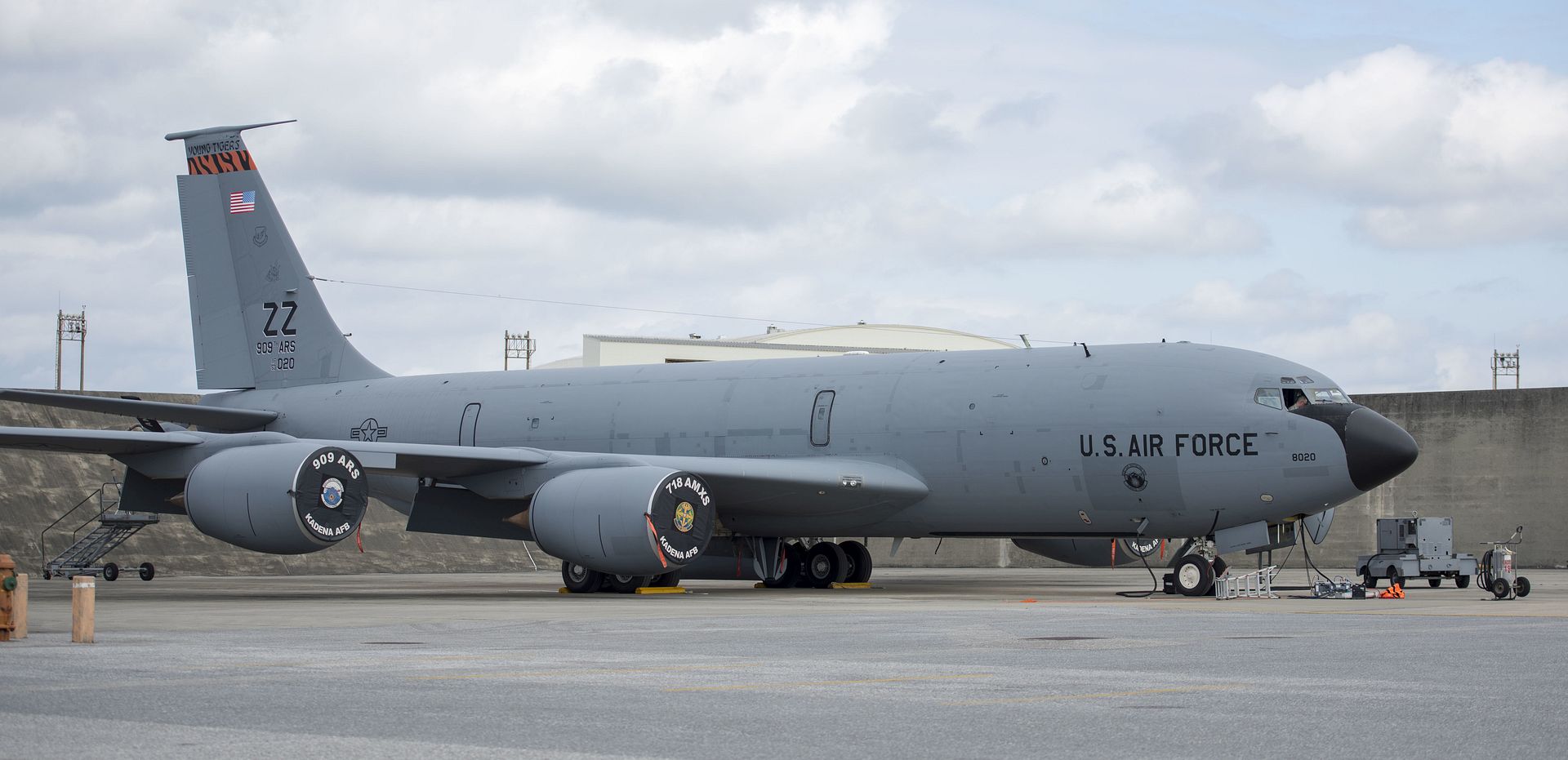
A British A400 Atlas takes off from Marine Corps Air Station BeaufortJan. 25. The aircraft came to transport F-35 Lightning II parts back to England. This signifies the UK Squadron 617's transition back to the UK.
Photo's by Cpl. Benjamin McDonald.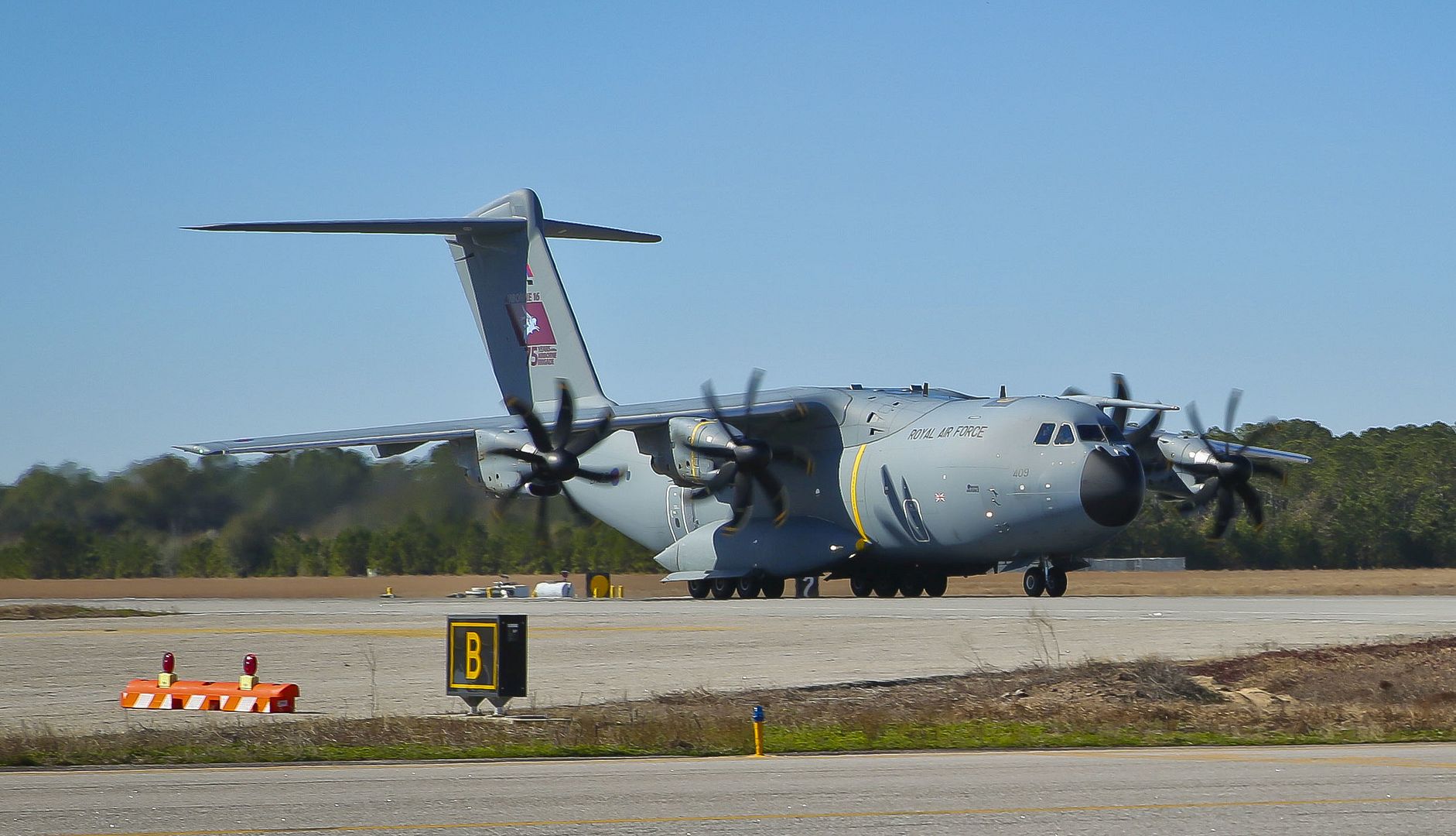
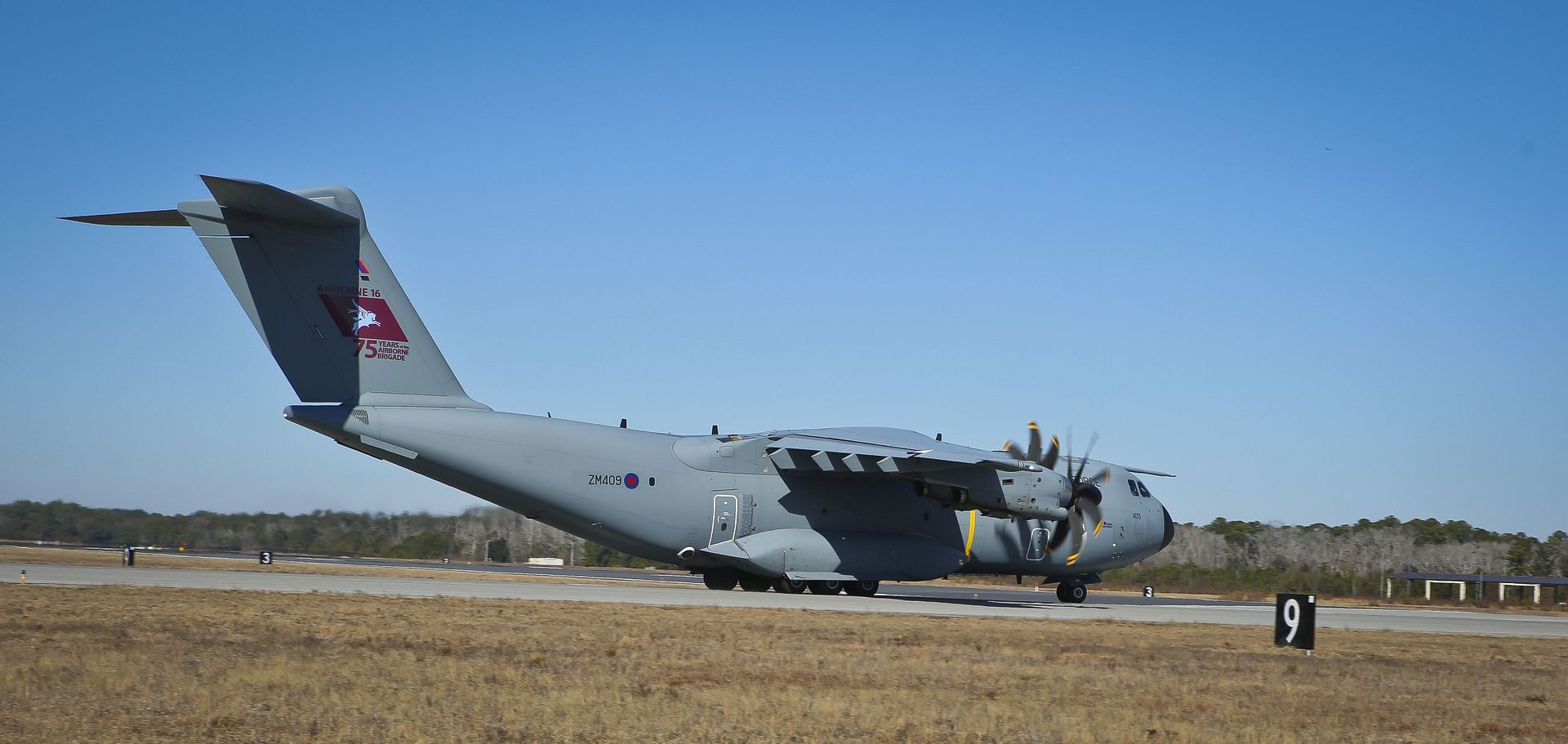
A Sikorsky CH-53E Super Stallion assigned with Marine Heavy Helicopter Squadron 361 wait for training to start for the day aboard Camp Pendleton, Calif. January 26, 2018. HMH-361 continuously conducts training exercises to prepare for future deployments and maintain mission readiness. (U.S. Marine Corps photo by Lance Cpl. Dalton S. Swanbeck)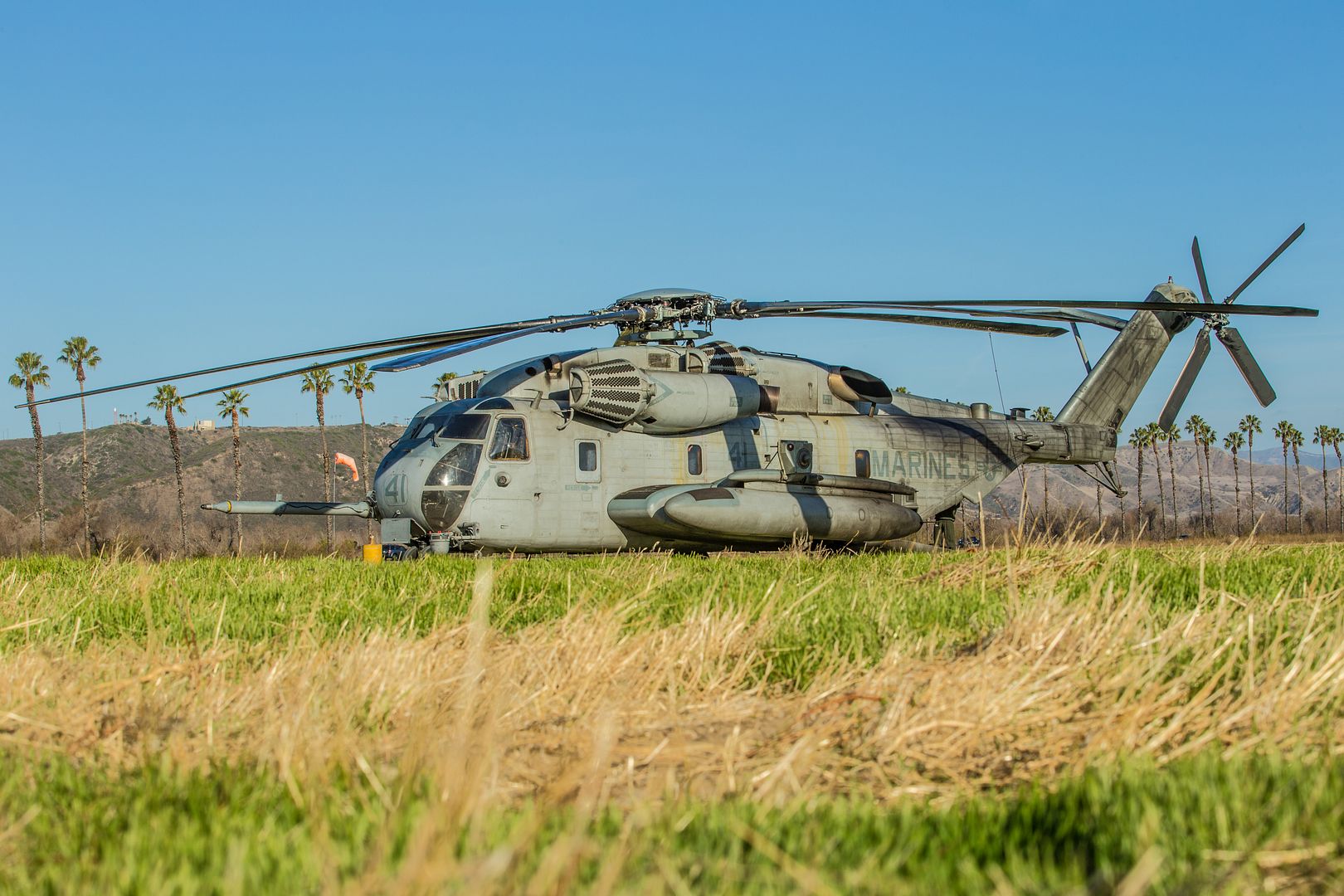
A French Rafale intercepts a B-52 Stratofortress during a flight en route to a Corsica training range Jan. 24, 2018. The allied nation practiced intercept procedures with the U.S. Air Force bomber and aircrew. A total of four strategic bombers from the 5th Bomb Wing are conducting theater integration and participating in training with joint partners, allied nations and other U.S. Air Force units. (U.S. Air Force photo by Tech. Sgt. Joshua J. Garcia)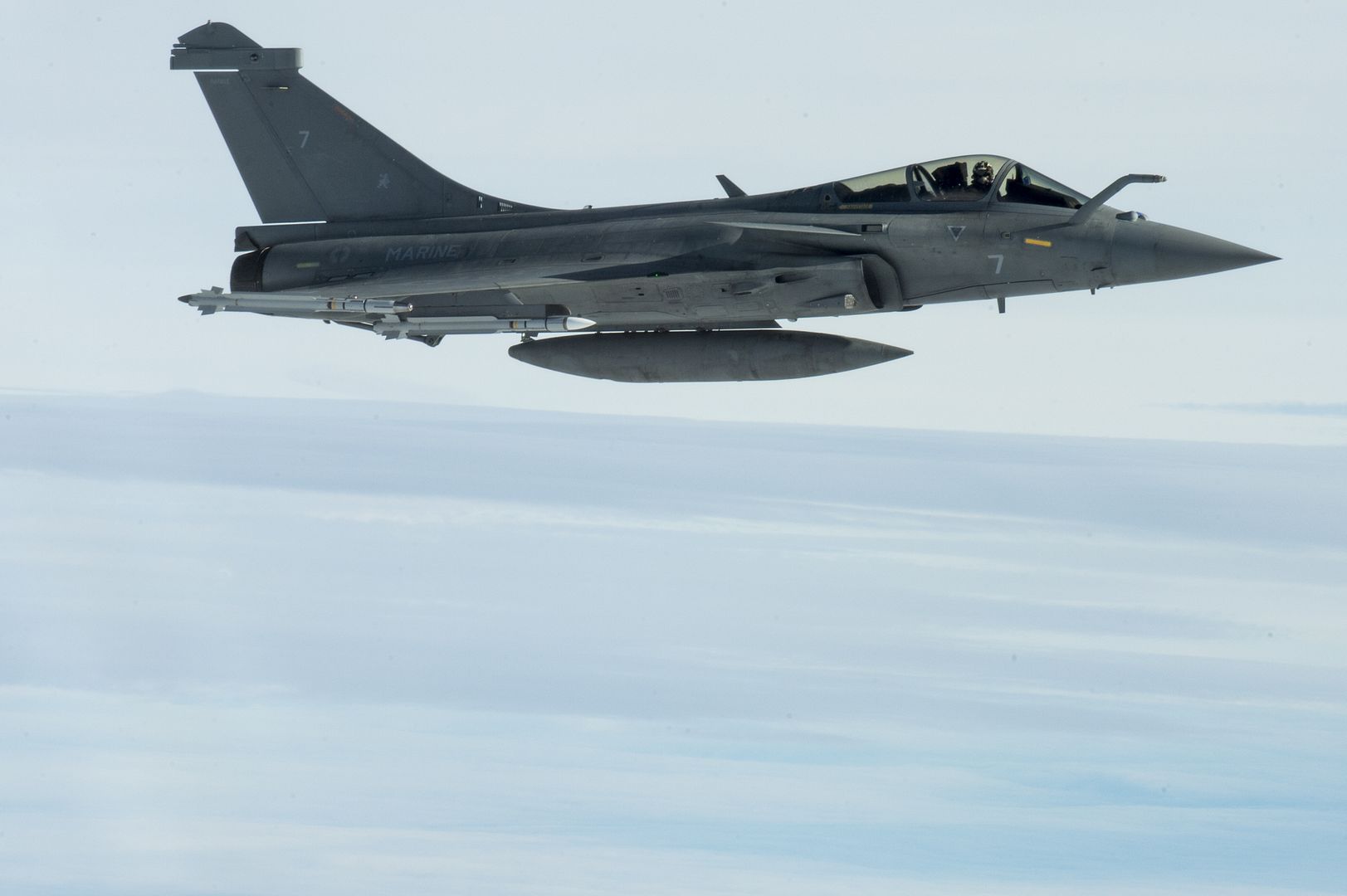
B-52 Stratofortress aircraft deployed from Minot Air Force Base, N.D., to RAF Fairford, England, fly over France to a Corsica training range Jan. 24, 2018. The deployment of strategic bombers to the United Kingdom enables Airmen to maintain a high state of readiness and proficiency, as well as demonstrate ready forces for global strike capability. (U.S. Air Force photo by Tech. Sgt. Joshua J. Garcia)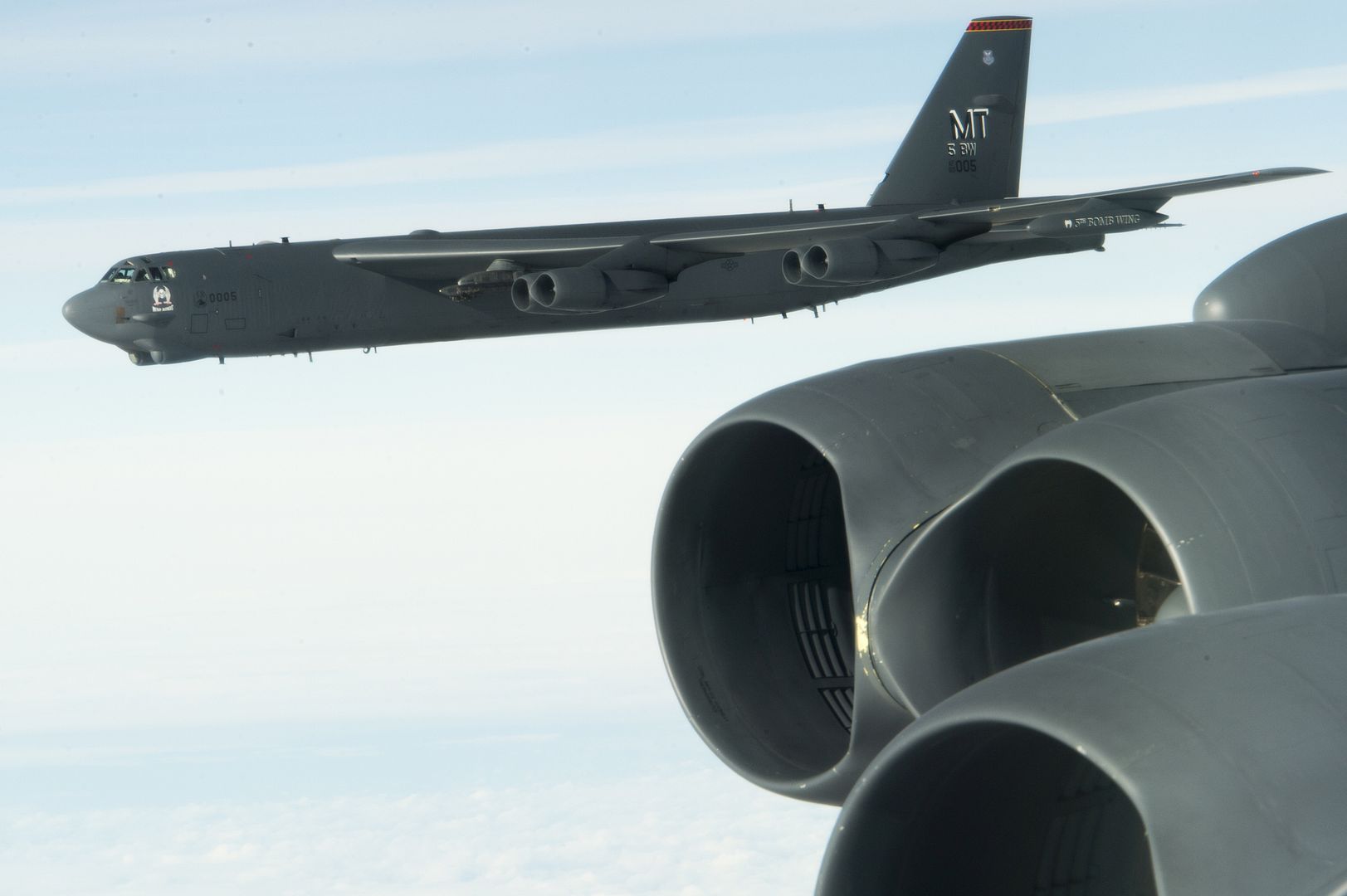
LUKE AIR FORCE BASE, Ariz. --
Since October 2015, pilots weighing less than 136 pounds have been restricted from flying the F-35A Lightning II due to concerns of possible neck injuries that could result during ejection seat procedures. In May 2017, three modifications were implemented to the F-35A ejection system allowing Air Force leadership to remove the weight limit restriction and begin the implementation of new seats into the Air Force?s F-35 fleet.
The F-35 Joint Program Office worked with contractors and the manufacturer of the ejection seat to find a solution to the problem and maintain the safety of pilots. For Luke Air Force Base, this new modification positively affects the wing?s mission to build the future of airpower.
"Currently, Luke has eight aircraft with the upgraded seats," said Senior Master Sgt. Jonathan Brannon, 61st Aircraft Maintenance Unit assistant superintendent. "Over time, all F-35s, including partner nation aircraft, are scheduled to receive the new modifications at Luke. Forty-four seats are still awaiting upgrades at this time."
According to Martin-Baker, the manufacturer of the ejection seat, more than 200 modification kits have been shipped for the F-35 program Air Force wide.
?This modification allows Luke, and the F-35 program as a whole, to broaden our scope of training by lifting the required weight restrictions,? Brannon said. ?This is extremely beneficial by opening the spectrum to lighter weight pilots and gives us the ability to greatly increase our numbers.?
Over 50 percent of female pilots in the Air Force weigh below 136 pounds. This new modification not only improves safety measures, but also allows a more diverse number of future Airmen to become pilots.
?The modification will eliminate the potential for injury to lighter weight pilots and allow our aviators the ability to operate with zero concerns of their safety during egress,? Brannon said. ?The future state for the seat modification looks very promising. The F-35 is being produced under low rate initial production and in the future, all F-35s that come off the production line will arrive with the new modification.?
The F-35 program continues to replace the aging fleet of tactical aircraft worldwide. With the advancement of new technology, the Air Force continues to reflect on and assess situations concerning pilot safety as they become available.
?I have personally briefed every single F-35 pilot in the United States Air Force about these changes to their ejection seat, and I?m confident our pilots are no longer concerned with the safety of the F-35 ejection system,? said Brig Gen Scott L. Pleus, F-35 Integration Office director and former 56th Fighter Wing commander. ?I've flown in this seat myself and believe, with these modifications, this is the safest ejection seat I've ever flown.?
As the Air Force continues to combat its pilot shortage, this new modification not only expands the candidate pool of future aviators, but improves the safety of the Air Force?s greatest asset ? it?s Airmen.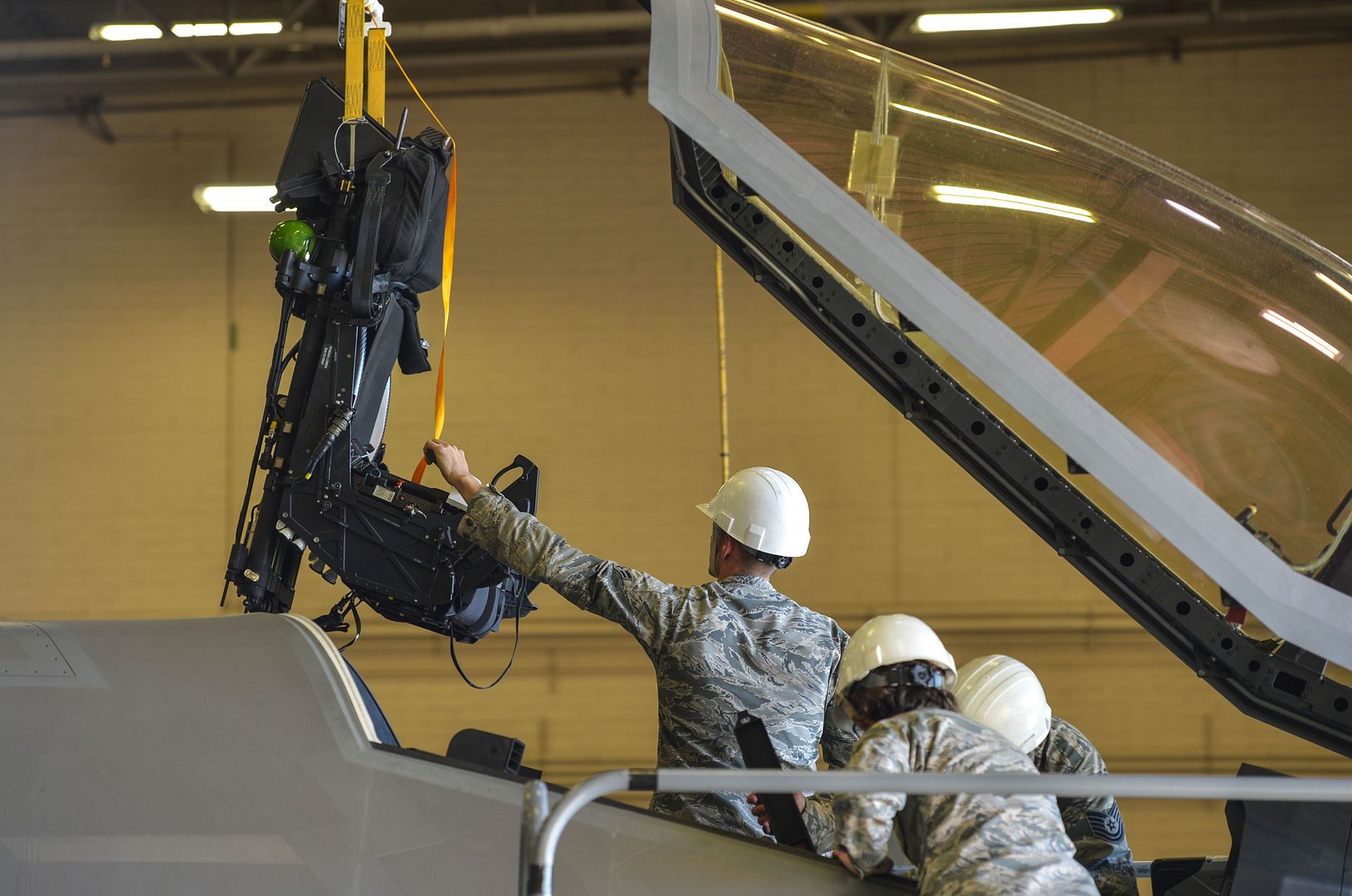
The A350-1000, the newest member of Airbus? leading widebody family, has embarked on a three-week demonstration tour to the Middle East and Asia-Pacific region.
The demonstration tour follows the completion of a successful flight test campaign, which lasted less than one year and culminated in joint EASA and FAA type certifications, demonstrating the aircraft?s excellent design, performance and maturity. The A350-1000 tour comes ahead of the first customer delivery to Qatar Airways in the coming weeks.
During the tour, the A350-1000 flight test aircraft (MSN065) will visit 12 destinations to demonstrate the aircraft?s exclusive features to airlines. The itinerary will see it travel over 30,000 nautical miles / 55,500 kilometres, with stops in Doha, Muscat, Hong Kong, Seoul, Taipei, Hanoi, Singapore, Bangkok, Sydney, Auckland, Tokyo and Manila.
The aircraft will stop for several days in Singapore, where it will be on static display from 6 to 8 February at the Singapore Airshow 2018.
MSN065 is one of three Airbus A350-1000 test aircraft and is equipped with a fully functional cabin (40 business class, 36 economy plus class and 219 comfort economy class seats). The demonstration flights will be operated by Airbus flight test crews.
The A350-1000 is the latest member of the A350 XWB Family, showing high level of commonality with the A350-900 with 95 percent common systems part numbers and the same Type Rating. As well as having a longer fuselage to accommodate 40 more passengers than the A350-900 (in a typical three-class configuration), the A350-1000 also features a modified wing trailing-edge, new six-wheel main landing gears and more powerful Rolls-Royce Trent XWB-97 engines. Along with the A350-900, the A350-1000 is shaping the future of air travel by offering unprecedented levels of efficiency and unrivalled comfort in its ?Airspace? cabin. With its additional capacity, the A350-1000 is perfectly tailored for some of the busiest long-haul routes. To date, 11 customers from five continents have placed orders for a total of 169 A350-1000s.
Follow the A350-1000 tour live on Twitter: @Airbus and #A350XWBTour
News Article / January 26, 2018.
From RCAF public affairs
423 Maritime Helicopter Squadron conducted its final operational flight of CH-124 Sea King helicopters on January 26, 2018, with a flypast over Halifax Harbour and Shearwater, Nova Scotia.
423 Squadron personnel will now turn their full attention to transitioning to the CH-148 Cyclone, the Royal Canadian Air Force?s new maritime helicopter.
It?s not the last time that residents of the Halifax and Dartmouth area will see the venerable Sea King in flight, however. 443 Maritime Helicopter Squadron, located at Patricia Bay, British Columbia, will support Royal Canadian Navy operations on both coasts until the Sea King is formally retired at Patricia Bay at the end of this year. Both 443 and 423 Squadrons are part of 12 Wing Shearwater.
The Sea King has been in service with the Royal Canadian Navy and Royal Canadian Air Force for 54 years. The first Cyclone detachments onboard Navy ships are planned for mid-2018.
-
 Main AdminEL CENTRO, Calif. (Jan. 27, 2018) Blue Angels Diamond pilots perform the Diamond Echelon Parade during a winter training flight over El Centro, California. The Blue Angels are scheduled to perform more than 60 demonstrations at more than 30 locations across the U.S. in 2018. U.S. Navy photo's by Mass Communication Specialist 1st Class Ian Cotter (Released)
Main AdminEL CENTRO, Calif. (Jan. 27, 2018) Blue Angels Diamond pilots perform the Diamond Echelon Parade during a winter training flight over El Centro, California. The Blue Angels are scheduled to perform more than 60 demonstrations at more than 30 locations across the U.S. in 2018. U.S. Navy photo's by Mass Communication Specialist 1st Class Ian Cotter (Released)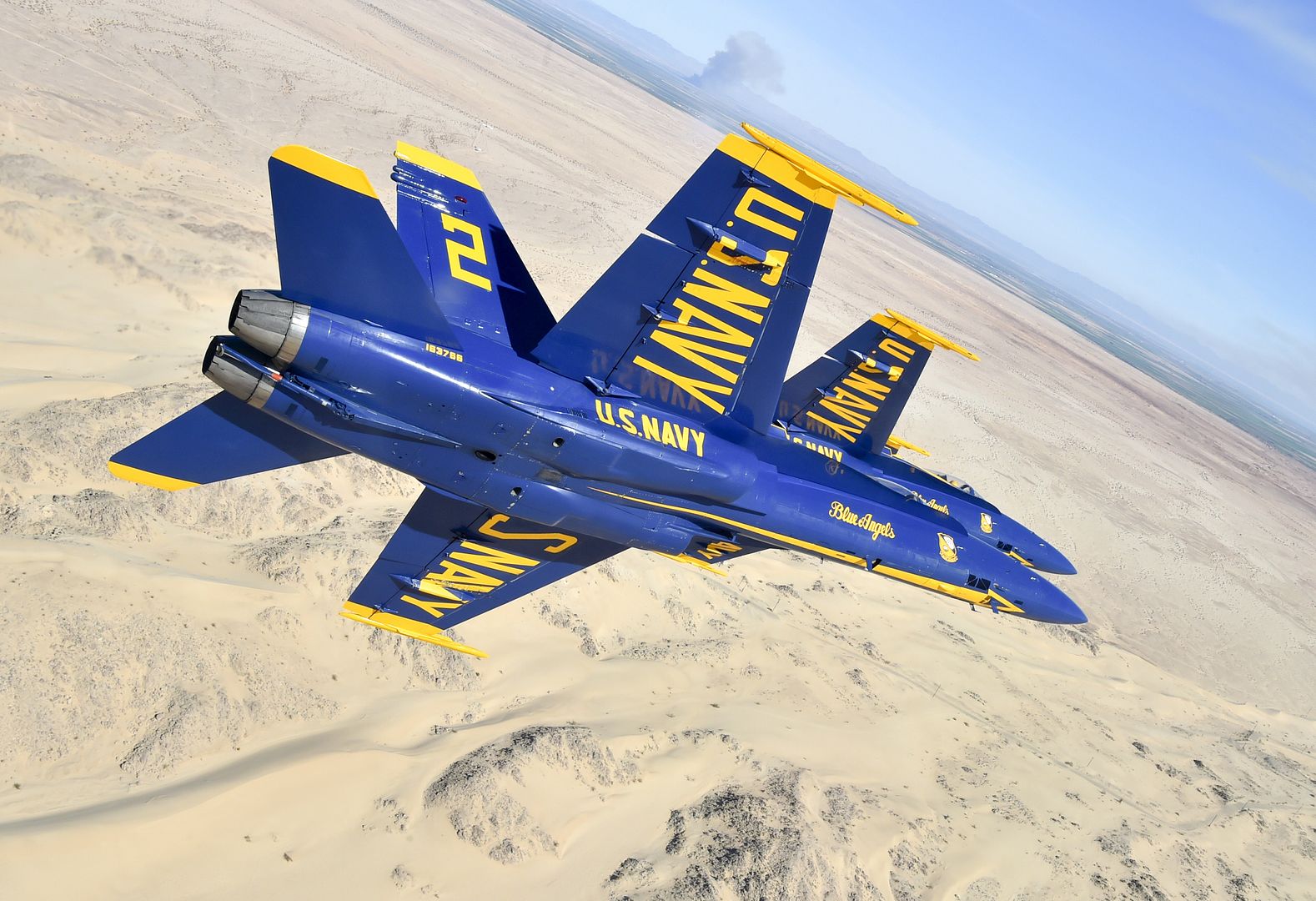
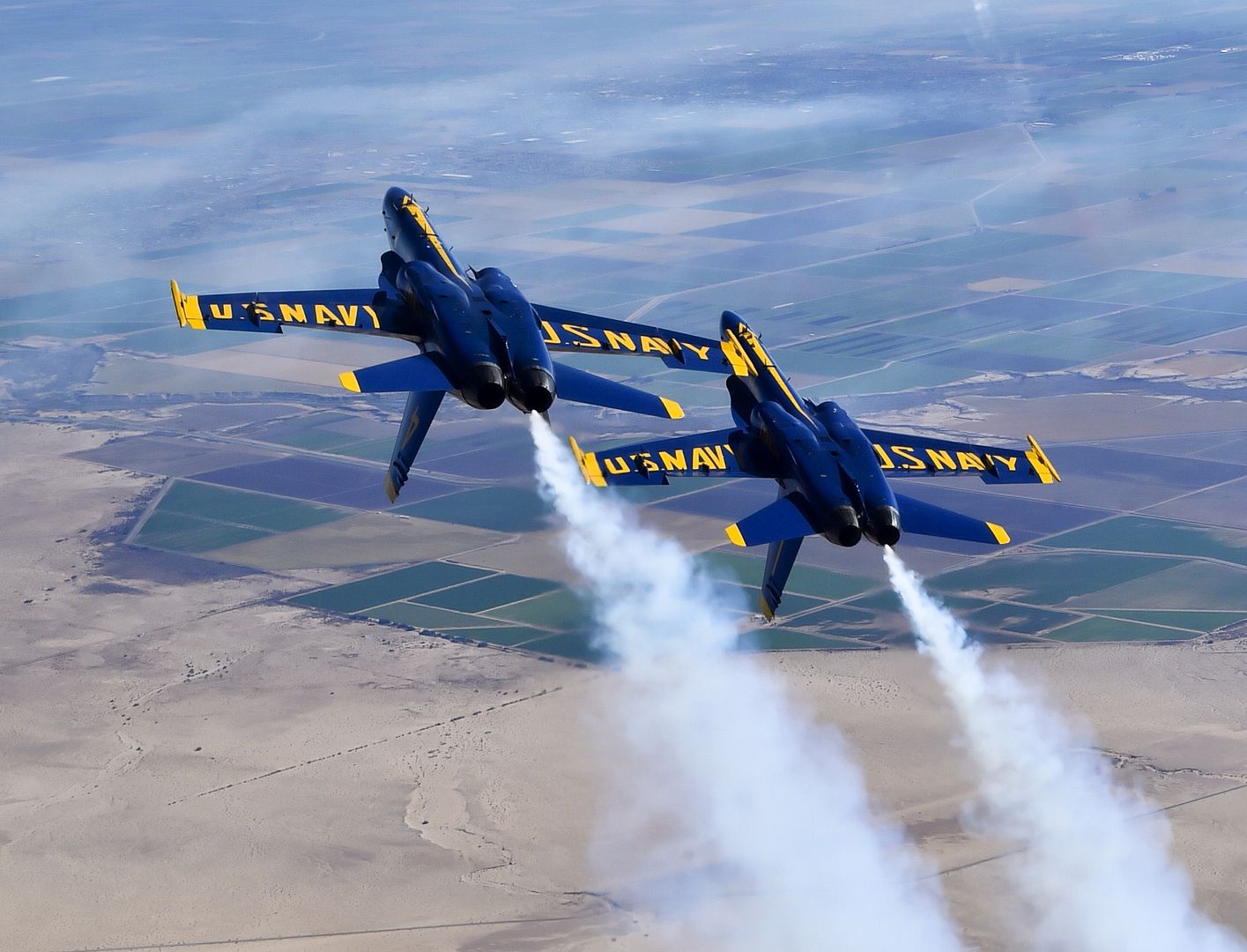

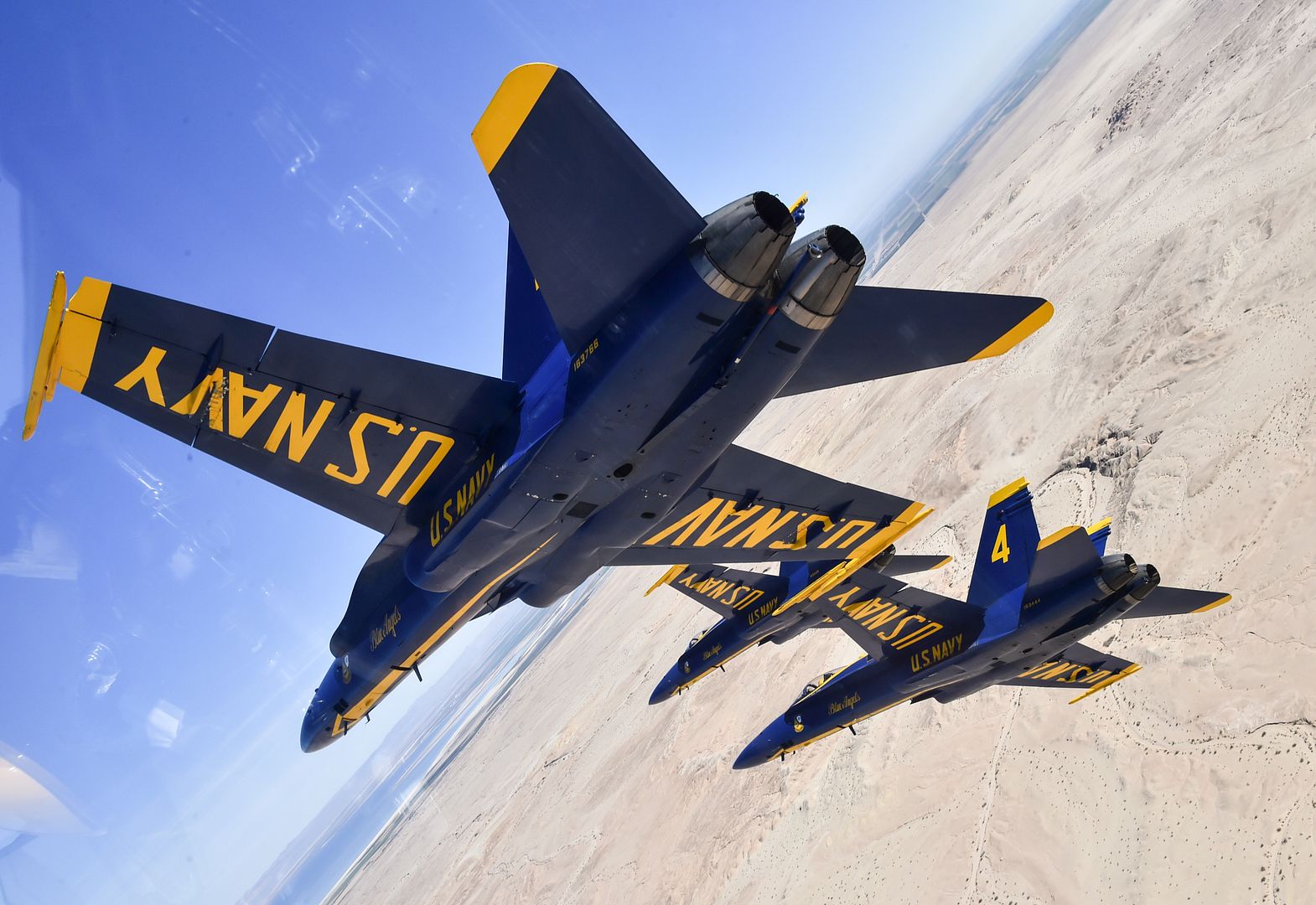
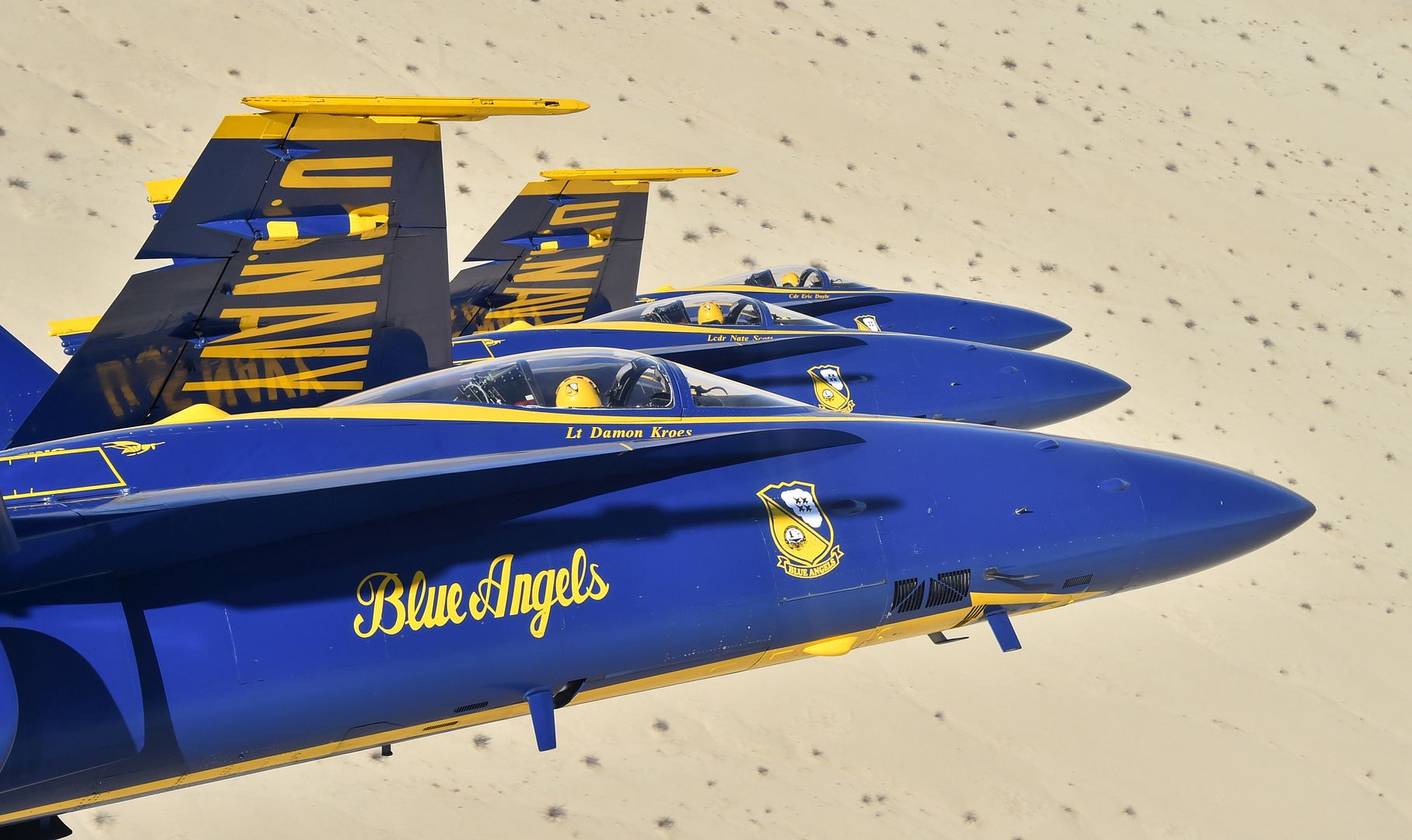

Secretary of the Air Force Heather Wilson departs Andersen Air Force Base, Guam, Jan. 25, 2018. This visit marks the first time she has been to Andersen AFB. (U.S. Air Force photo by Airman 1st Class Christopher Quail)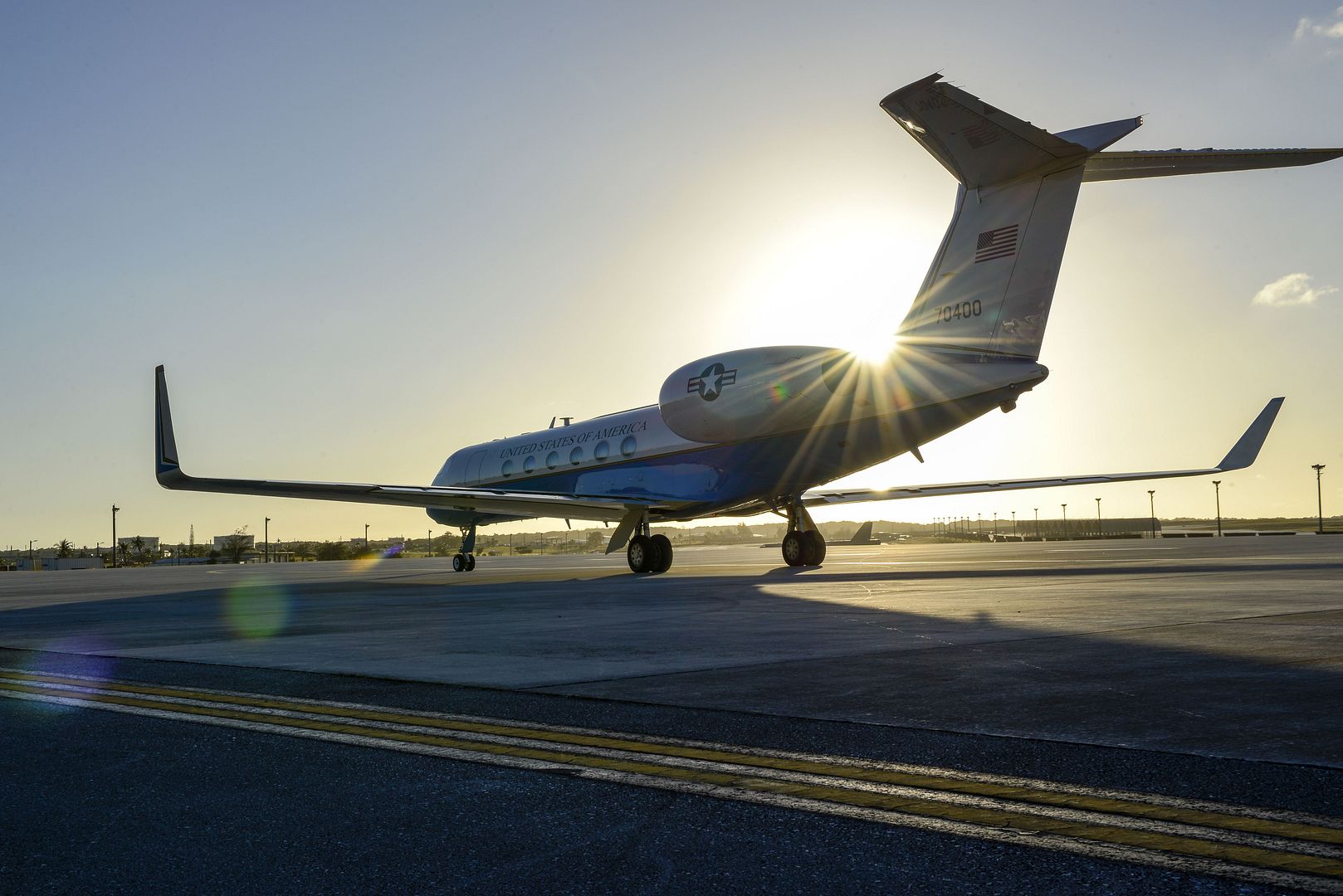
BEAUFORT, S.C. (Jan. 22, 2018) An F-5N Tiger II takes off from Marine Corps Air Station Beaufort. The aircraft visited Fightertown to support Marine Aircraft Group 31 in the Marine Division Tactics Course. During the course, aviators from MAG-31 are taught to be experts in air-to-air maneuvering within visual range and beyond visual range. (U.S. Marine Corps photo by Cpl. Benjamin McDonald/Released)
MEDITERRANEAN SEA (Jan. 28, 2018) An MH-60S Sea Hawk helicopter assigned to the "Dragon Whales" of Helicopter Sea Combat Squadron (HSC) 28 lands aboard the Arleigh Burke-class guided-missile destroyer USS Ross (DDG 71) Jan. 28, 2018. Ross, forward-deployed to Rota, Spain, is on its sixth patrol in the U.S. 6th Fleet area of operations in support of regional allies and partners and U.S. national security interests in Europe. (U.S. Navy photo by Mass Communication Specialist 1st Class Kyle Steckler/Released)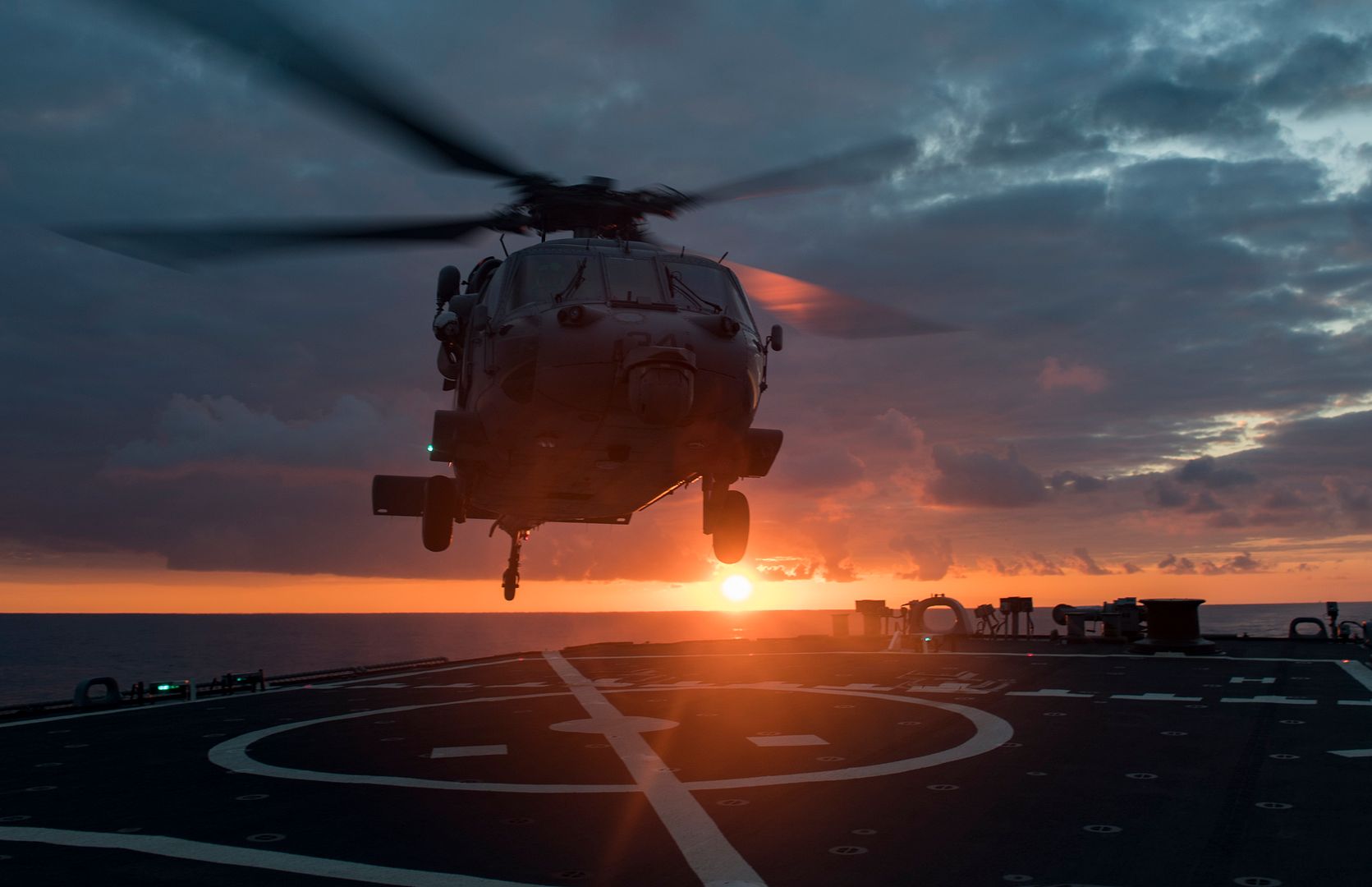
Donauw?rth, Airbus Helicopters delivered the 1300th helicopter from the H135-family, a number underlining the multipurpose lightweight twin-engine helicopter?s worldwide success.
The global fleet of this type has accumulated a total of more than 4.5 million flight hours since the entry into service of the first helicopter in 1996. More than 300 customers in 60 countries use helicopters from the H135 family for a wide range of missions including Emergency Medical Services (EMS), law enforcement, corporate transport, offshore wind and military flight training. The majority of the lightweight twin-engine helicopters of this type are operated in Europe (641), followed by North America (316) and Asia (195).
The integration of Airbus Helicopter?s Helionix avionics suite in 2016 underlines the constant evolution of the H135 to help meet customers? needs. The simple and intuitive avionics system incorporates a 4-axis-autopilot ? already in use with the H175 and H145 - further reduces pilots? workload and provides an unrivalled level of safety.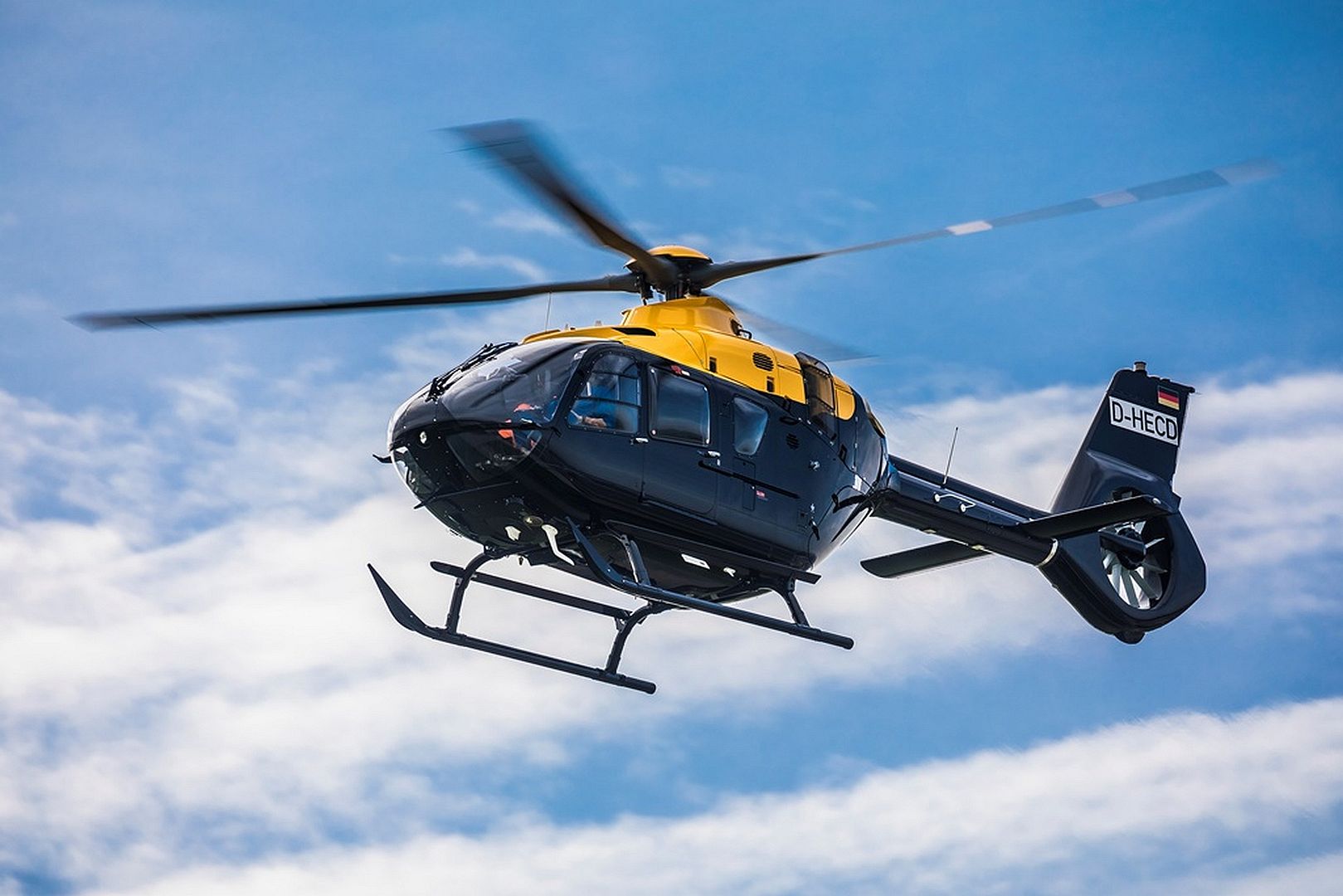
Russia's United Aircraft has flown the first remanufactured Tupolev Tu-160, with the supersonic aircraft performing a short flight from Kazan on 25 January.
Watched by a crowd of VIPs including Russian president Vladimir Putin, the 7min sortie was performed at an altitude of 300m, to check the aircraft's handling characteristics.
As well as modernising the aircraft with new avionics and engines, Tupolev has made extensive alterations to the existing airframe.
The Tu-160 was last produced in 2008 and the current upgrade process is part of an effort to re-establish the final assembly facility in Kazan.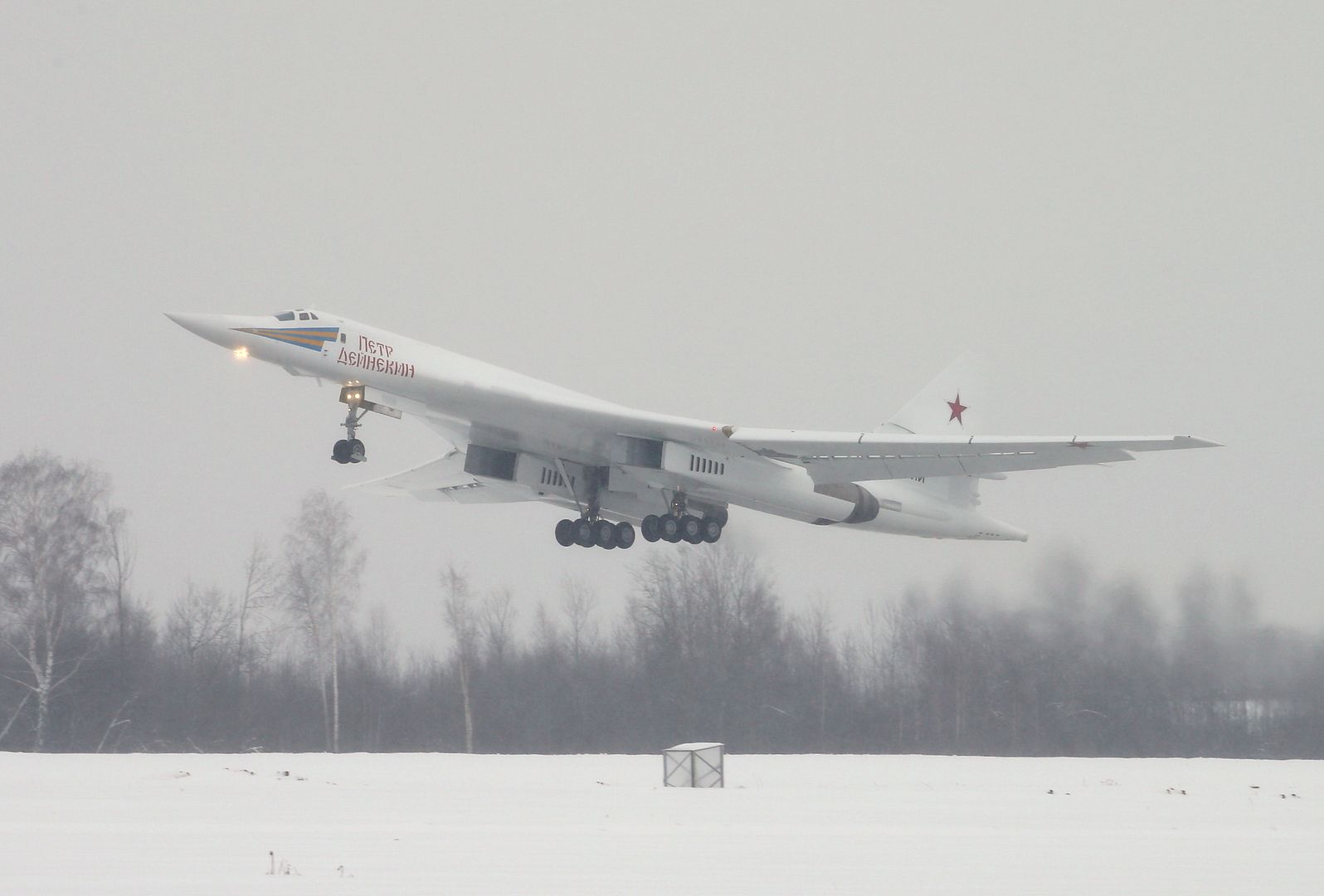
-
 Main AdminThree B-52 Stratofortress aircraft prepare to take off from RAF Fairford, England, en route to their home station at Minot Air Force Base, N.D., on Jan 30, 2018. Approximately 300 Airmen assigned to the 5th Bomb Wing deployed to the United Kingdom to conduct theater integration and flying training. (U.S. Air Force photo's by Staff Sgt. Trevor T. McBride)
Main AdminThree B-52 Stratofortress aircraft prepare to take off from RAF Fairford, England, en route to their home station at Minot Air Force Base, N.D., on Jan 30, 2018. Approximately 300 Airmen assigned to the 5th Bomb Wing deployed to the United Kingdom to conduct theater integration and flying training. (U.S. Air Force photo's by Staff Sgt. Trevor T. McBride)
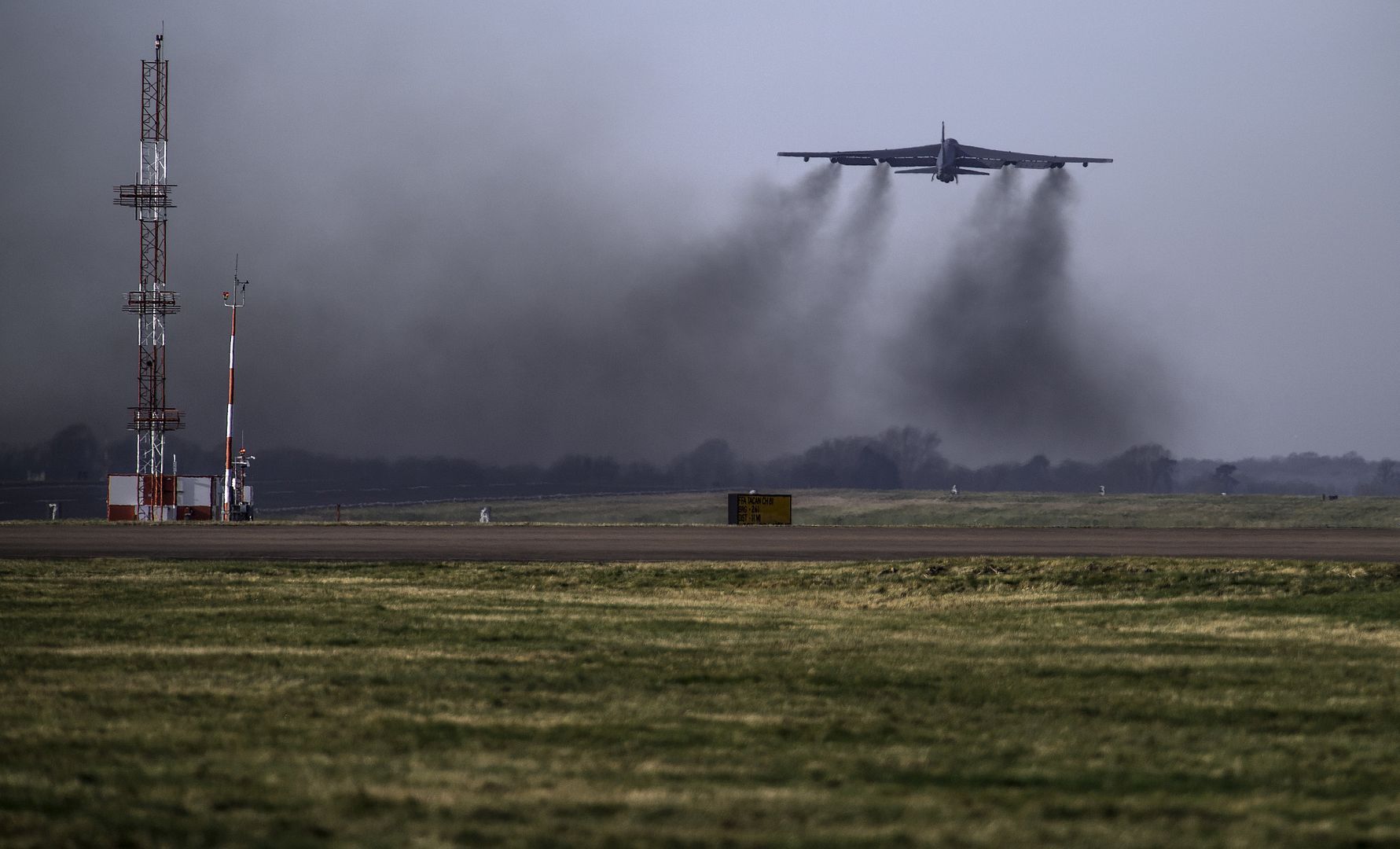
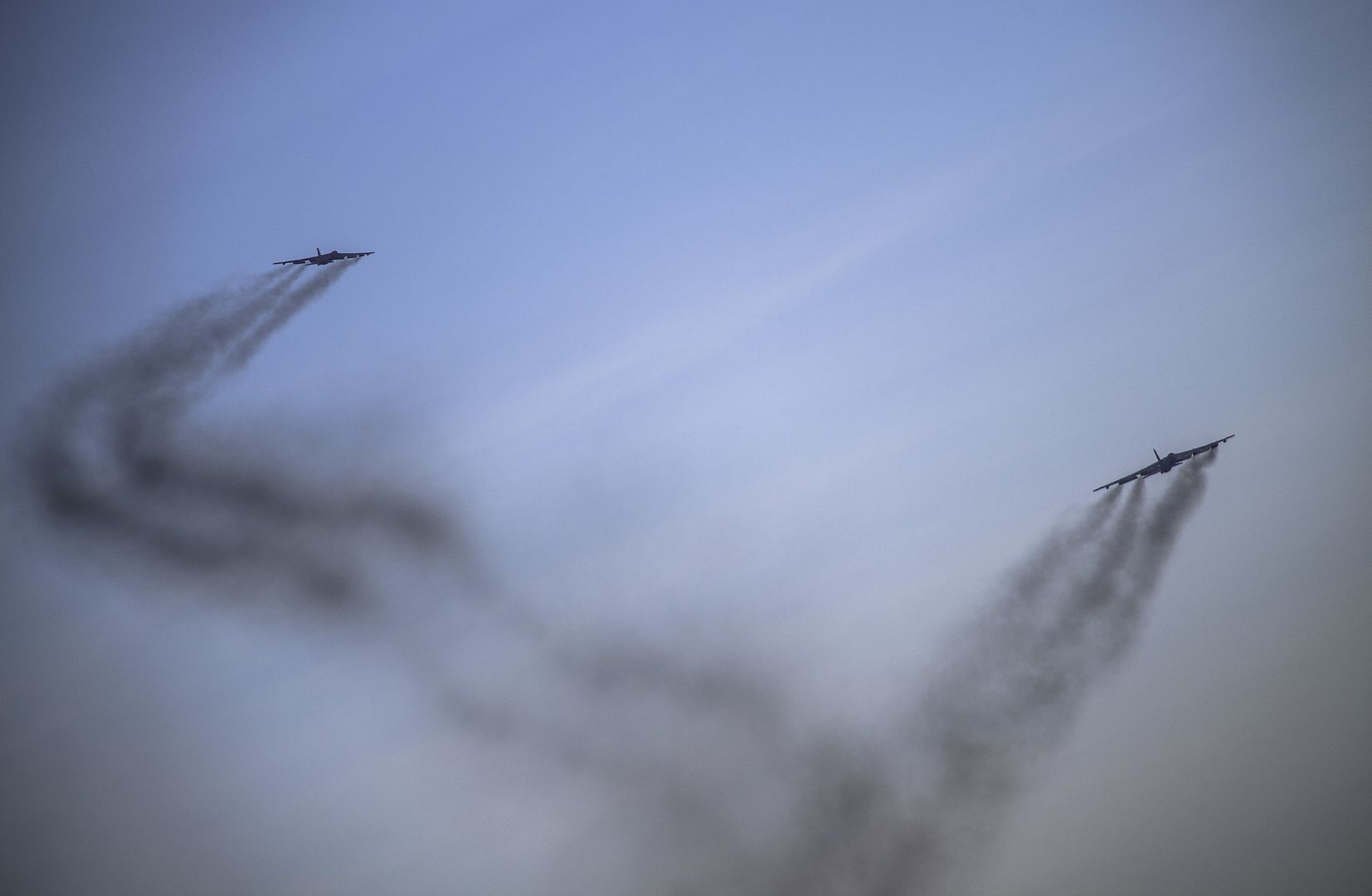
SPANGDAHLEM AIR BASE, GERMANY
An F-16 Fighting Falcon takes off from the flightline here Jan. 29, 2018. (U.S. Air Force photo's by Tech. Sgt. Staci Kasischke)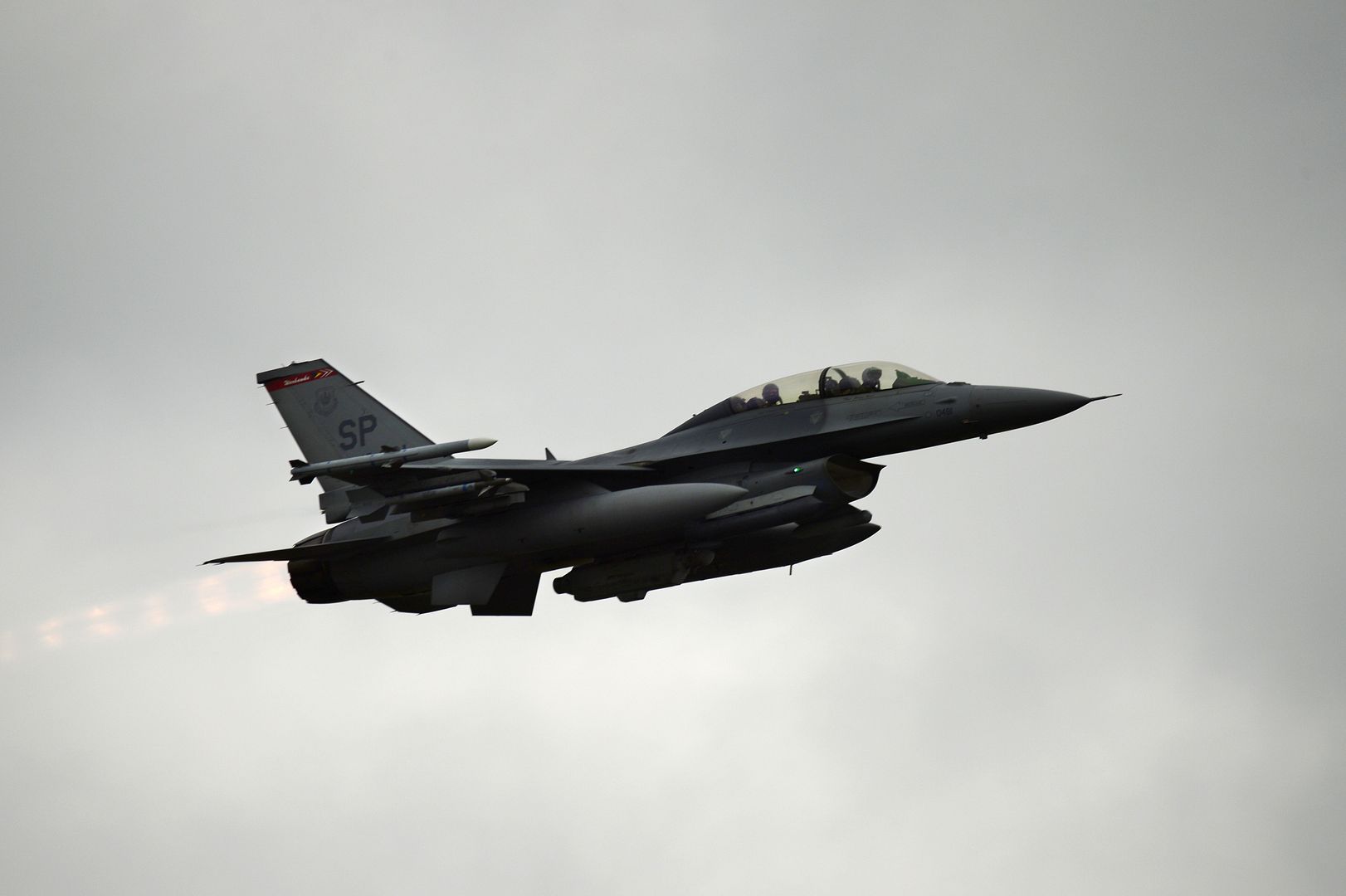
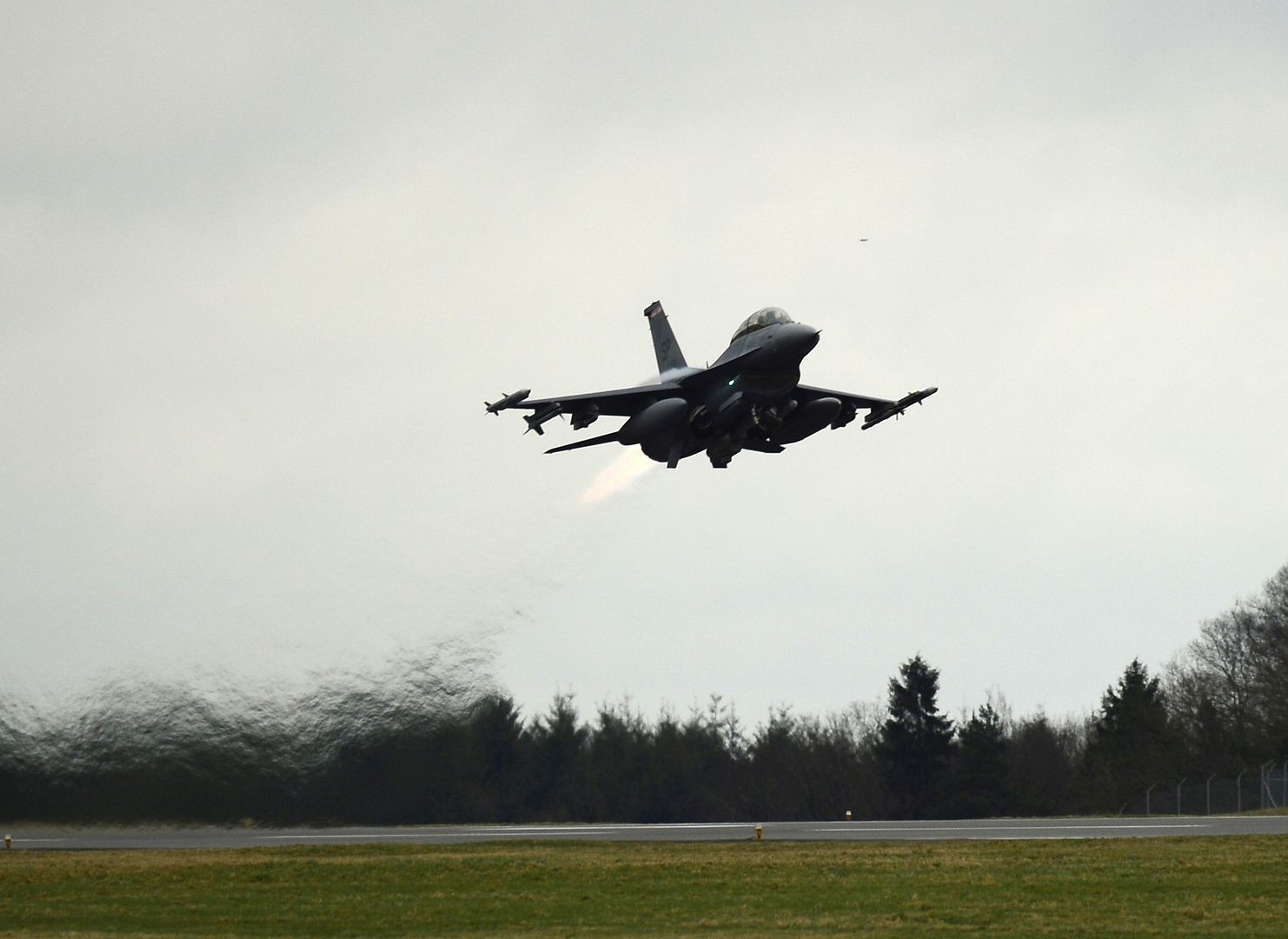
Marines with Marine fight Attack Squadron All-Weather 225 does a pre-flight check of a F-18 at the Air Combat Element landing strip at Marine Corps Air Ground Combat Center, Twentynine Palms, Calif., Jan. 26, 2018, as a part of Integrated Training Exercise 2-18. The purpose of ITX is to create a challenging, realistic training environment that produces combat-ready forces capable of operating as an integrated MAGTF. (U.S. Marine Corps Photo by Pfc. William Chockey)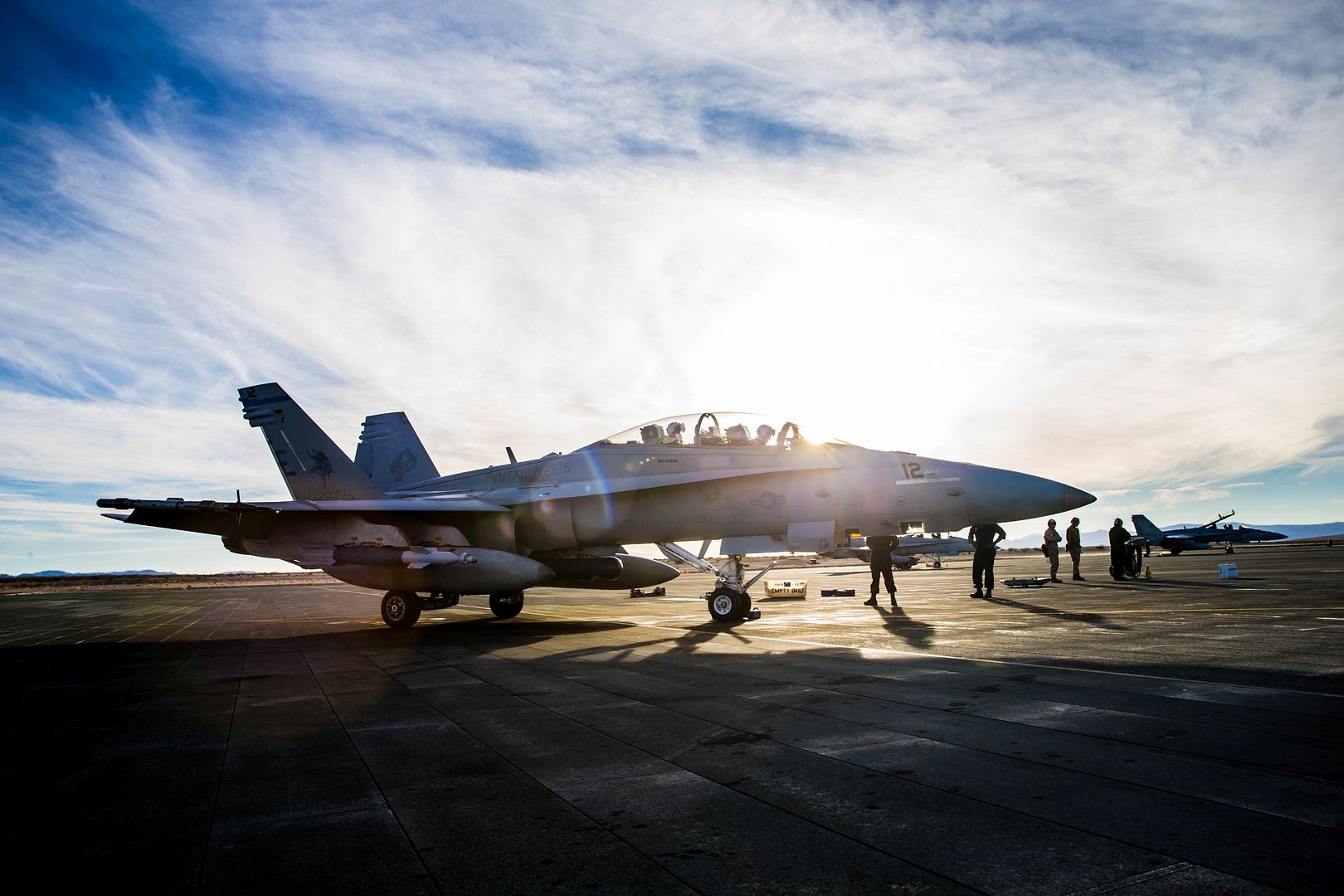
The first operational Japan Air Self-Defense Force F-35A sits on the flightline while an F-16 Fighting Falcon takes off during the F-35A?s arrival ceremony at Misawa Air Base, Japan, Jan. 25, 2018. In the upcoming Japanese fiscal year, nine more aircraft will join this one to incept the first fifth-generation fighter squadron as part of the JASDF?s 3rd Air Wing. (U.S. Air Force photo by Staff Sgt. Deana Heitzman)
The Thunderbirds Diamond formation pilots set up for the High/Low Pass over the Nevada Test and Training Range during a training flight, Jan. 29, 2018. During the Thunderbirds training season, each pilot masters their position and maneuvers while developing trust and safety within the formation. (U.S. Air Force Photo by Tech. Sgt. Christopher Boitz)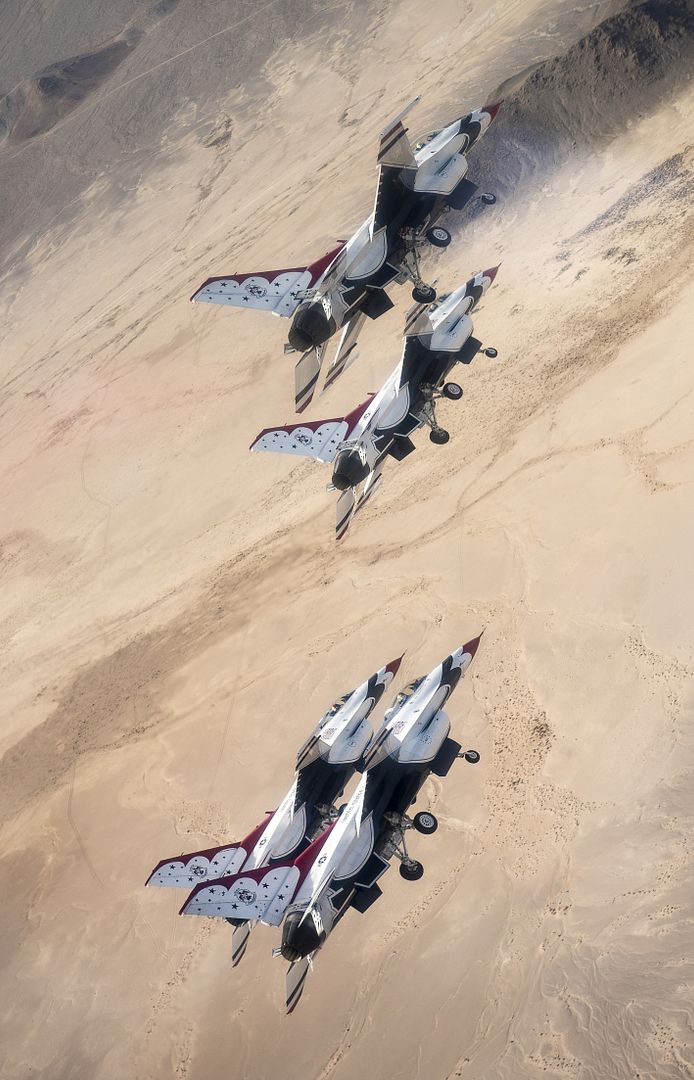
The Thunderbirds Diamond formation pilots perform the Echelon Pass in Review maneuver over the Nevada Test and Training Range during a training flight, Jan. 29, 2018. During the Thunderbirds training season, each pilot masters their position and maneuvers while developing trust and safety within the formation. (U.S. Air Force Photo by Tech. Sgt. Christopher Boitz)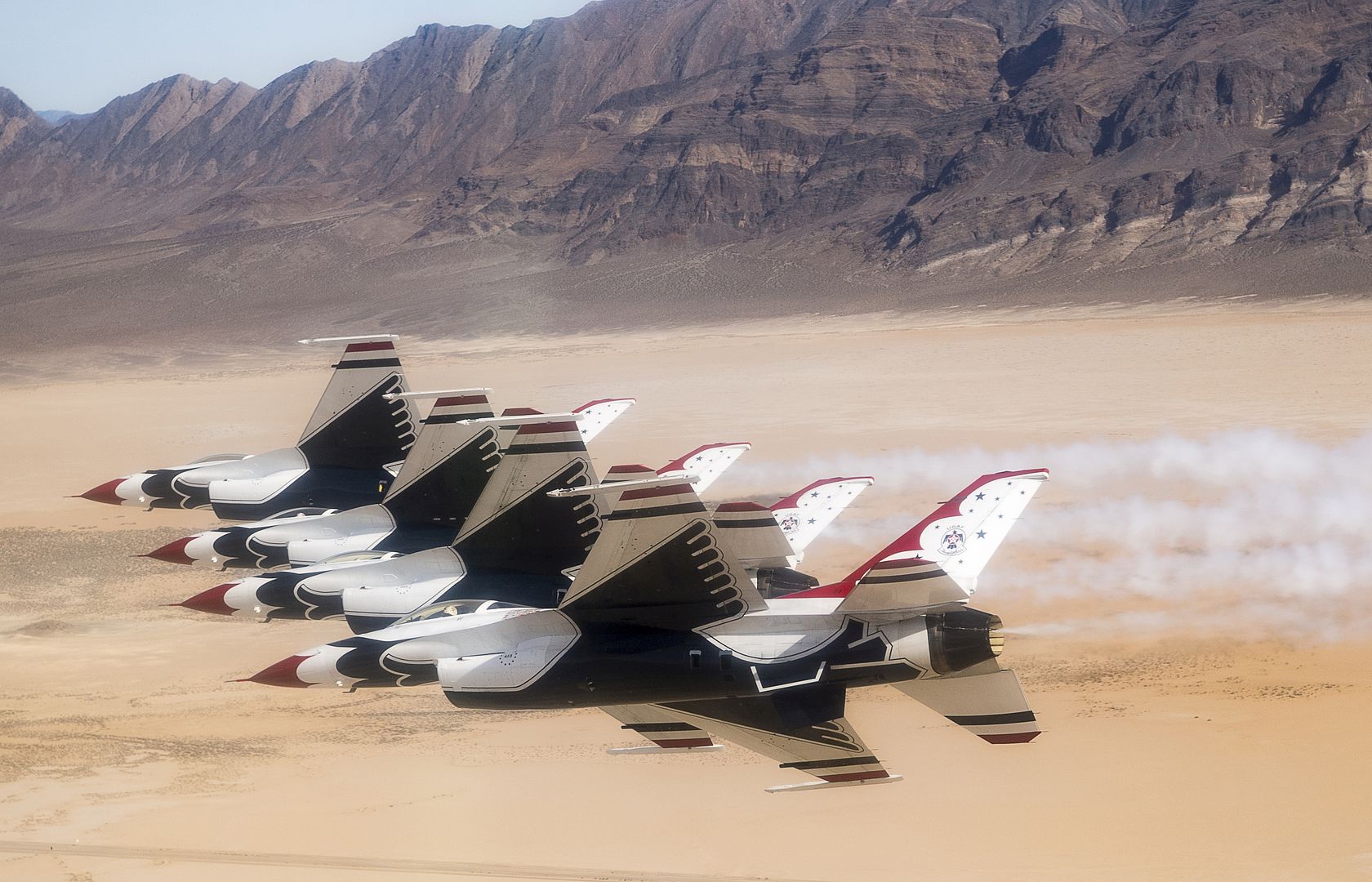
The Thunderbirds Diamond formation pilots perform the Trail to Diamond Roll maneuver over the Nevada Test and Training Range during a training flight, Jan. 29, 2018. During the Thunderbirds training season, each pilot masters their position and maneuvers while developing trust and safety within the formation. (U.S. Air Force Photo's by Tech. Sgt. Christopher Boitz)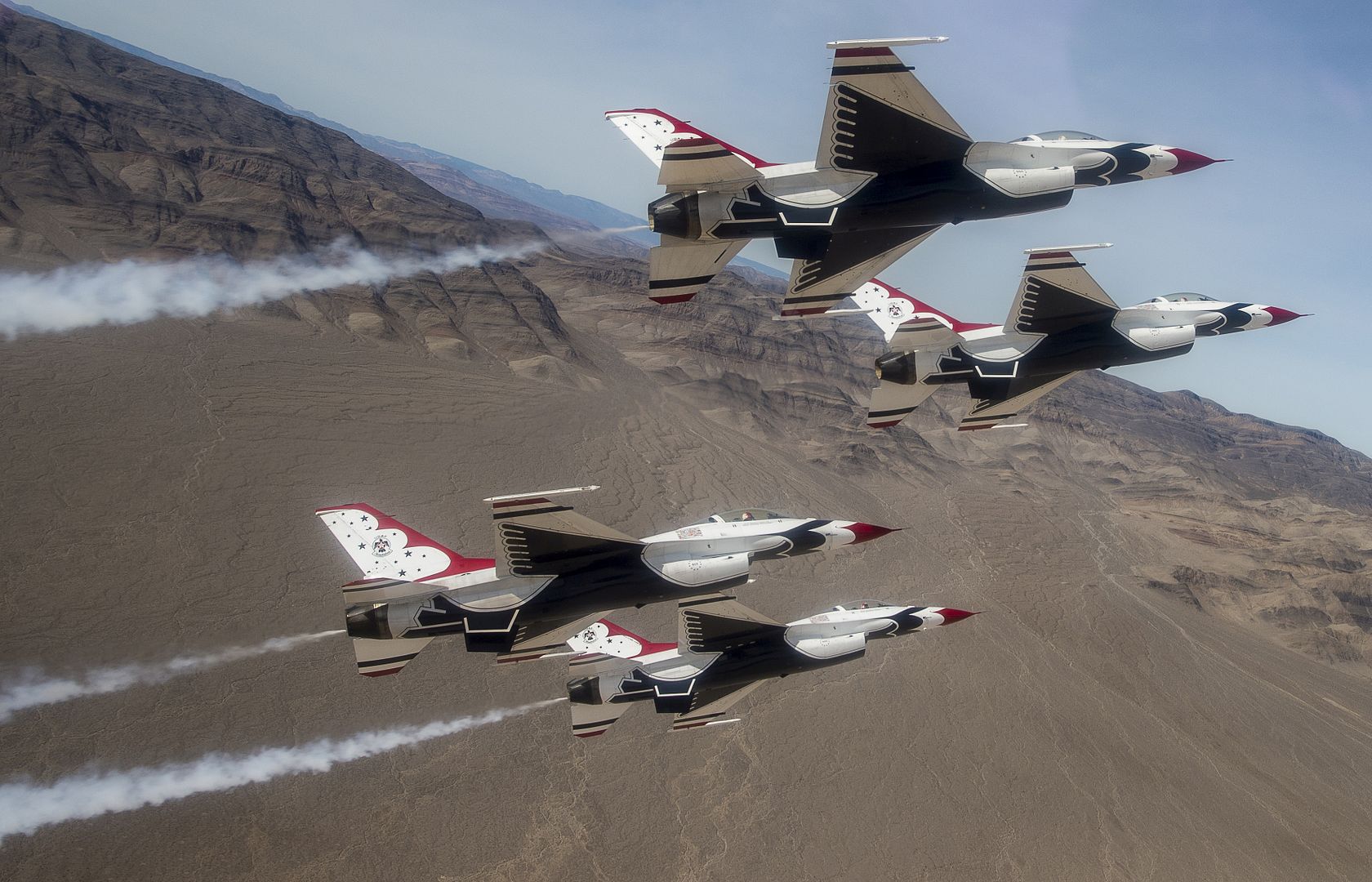
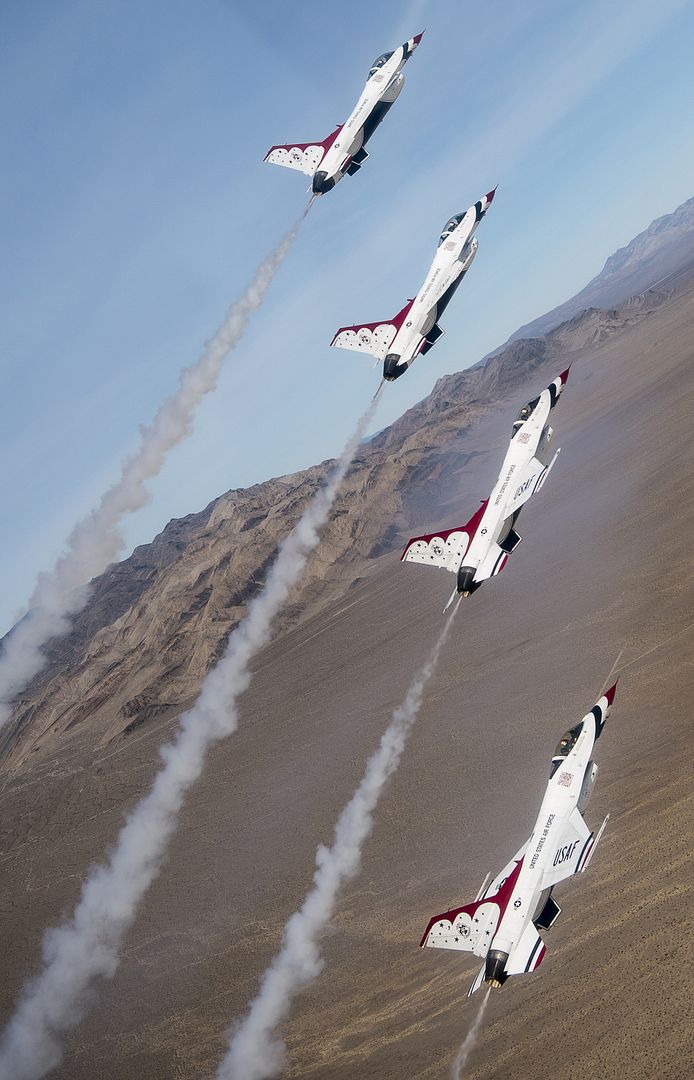
WHITE SANDS MISSILE RANGE, N.M., Jan. 30, 2018 /PRNewswire/ -- Lockheed Martin's (NYSE: LMT) Miniature Hit-to-Kill (MHTK) missile successfully conducted a controlled flight test to demonstrate the interceptor's increased agility, and to validate the performance of its airframe and electronics -- now common between MHTK's two configurations to drive affordability.
Friday's test at White Sands Missile Range, New Mexico, was the first ever for MHTK's updated electronics, and the second for the interceptor's next-generation airframe. Commonality between the two missile configurations (active and semi-active seeker), and the increased agility demonstrate MHTK's transformational capabilities to defeat rocket, artillery and mortar (RAM) targets with greater accuracy, reliability and range compared to current systems. Funded by Lockheed Martin, the successful test advances the program's technical maturity level and builds confidence in the interceptor's ability to defeat current and evolving threats.
"The U.S. Army and international customers have made it clear that today's global security environment demands agile, close-range solutions that protect warfighters and citizens from enemy rockets, artillery and mortars. The design of the MHTK interceptor enables a highly effective solution in a very compact package," said Tim Cahill, vice president of Integrated Air and Missile Defense at Lockheed Martin Missiles and Fire Control. "This test is exciting because it is another successful milestone demonstrating the interceptor's revolutionary capabilities. We look forward to building on this success."
Shorter than a yardstick, MHTK retains the range and lethality required of a counter-RAM solution. MHTK uses hit-to-kill technology, which destroys threats through an extremely accurate application of kinetic energy in body-to-body contact. Hit-to-kill technology eliminates the incoming threat while reducing the risk of collateral damage seen in traditional blast-fragmentation interceptors.
The MHTK interceptor is less than 2.5 feet (72 cm) in length and weighs about 5 pounds (2.2 kg) at launch. The mini missile has the potential to bring miniaturized capabilities to the warfighter with lower costs and reduced logistic footprints, while opening a world of opportunities for applications of small interceptors.
SEATTLE, Jan. 30, 2018 /PRNewswire/ -- Boeing (NYSE: BA) and TUI Group, the world's largest tourism business, today celebrated the delivery of the operator's first 737 MAX 8. The cleaner, quieter and more efficient airplane will play a key role in TUI Group's ambition to operate Europe's most carbon efficient airlines.
The 737 MAX delivers the highest efficiency, reliability and passenger comfort in the single-aisle market by incorporating the latest technology CFM International LEAP-1B engines, Advanced Technology winglets, the Boeing Sky Interior, large flight deck displays, and other improvements. The efficiency gains have helped make the MAX the fastest selling airplane in Boeing history with more than 4,300 orders to date from 92 customers worldwide.
"The 737 MAX is a great fit for TUI Group, with 14 percent lower carbon emissions and a 40 percent smaller noise footprint supporting its airlines commitment to sustainability," said Monty Oliver, vice president of European Sales, Boeing Commercial Airplanes. "We are honored by TUI Group's continued confidence in our products and look forward to the many MAX deliveries that lie ahead."
TUI Group has 51 additional orders of the 737 MAX 8 and four 787 Dreamliners. The Group also has 18 unfilled orders for the 737 MAX 10 and was the first European operator to select the latest and largest member of the 737 MAX family of airplanes.
About TUI Group
TUI Group, domiciled in Hanover and Berlin, is the largest integrated tourism group worldwide. The Group operates six airlines across Europe and operates approximately 150 medium and long-haul aircraft, including more than 100 Next-Generation 737s, 15 787s and now the 737 MAX. TUI serves more than 20 million customers in 180 destinations around the world, employing more than 67,000 people.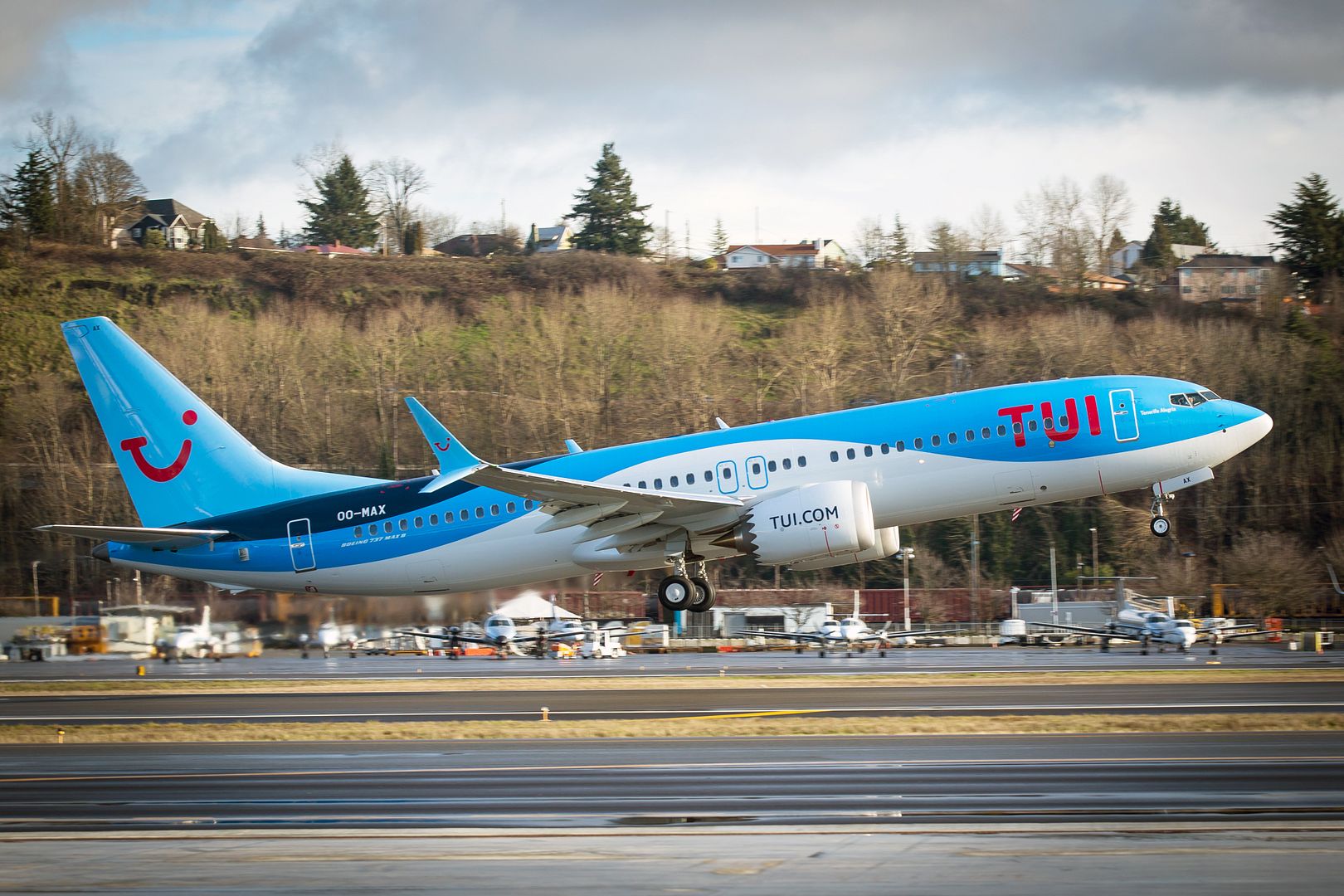
-
 Main AdminA B-52H Stratofortress deploys its drogue parachute after landing at Minot Air Force Base, N.D., Jan. 30, 2018. A drogue parachute is designed to provide control, stability and slow rapidly-moving objects. (U.S. Air Force photo's by Tech. Sgt. Jarad A. Denton)
Main AdminA B-52H Stratofortress deploys its drogue parachute after landing at Minot Air Force Base, N.D., Jan. 30, 2018. A drogue parachute is designed to provide control, stability and slow rapidly-moving objects. (U.S. Air Force photo's by Tech. Sgt. Jarad A. Denton)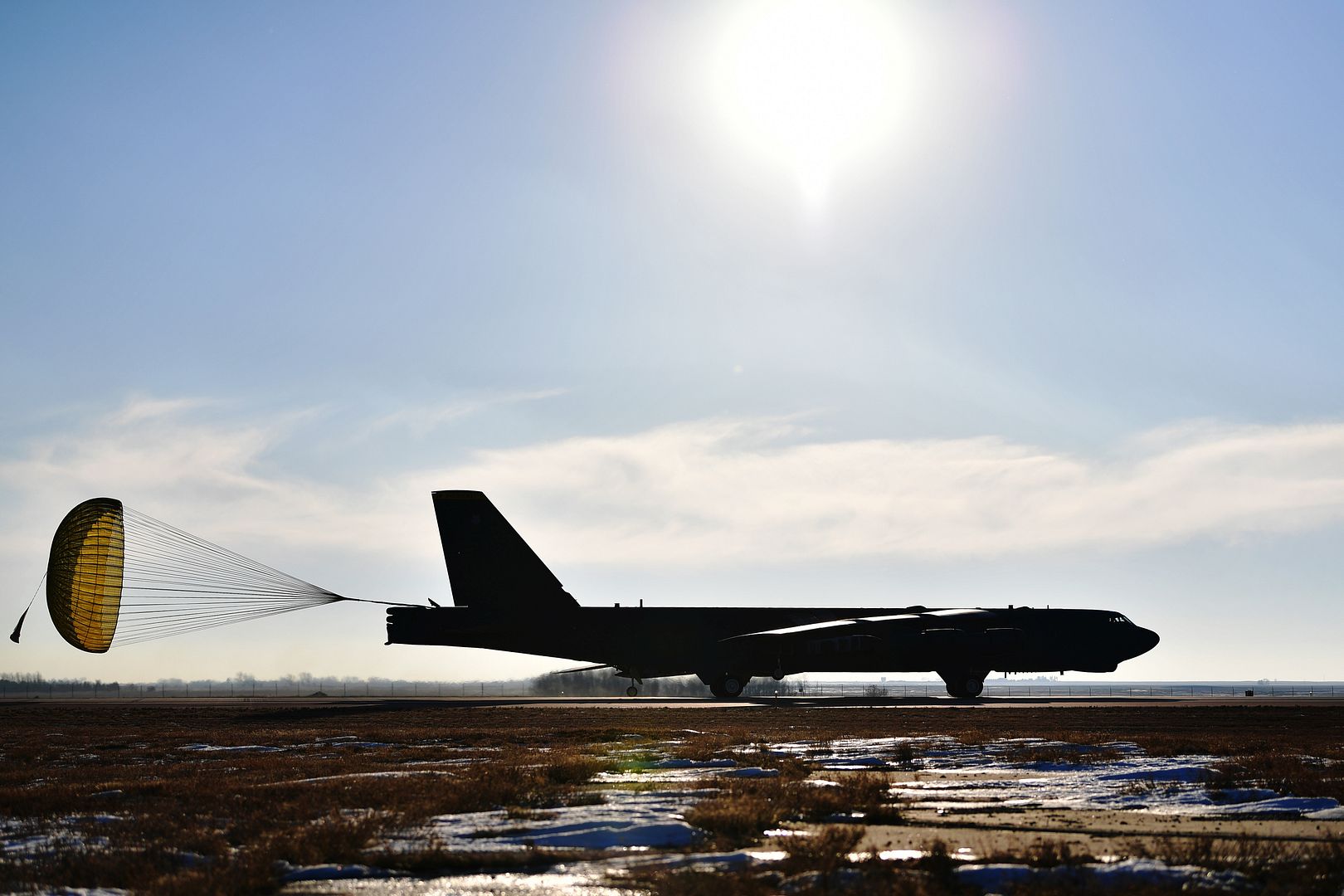
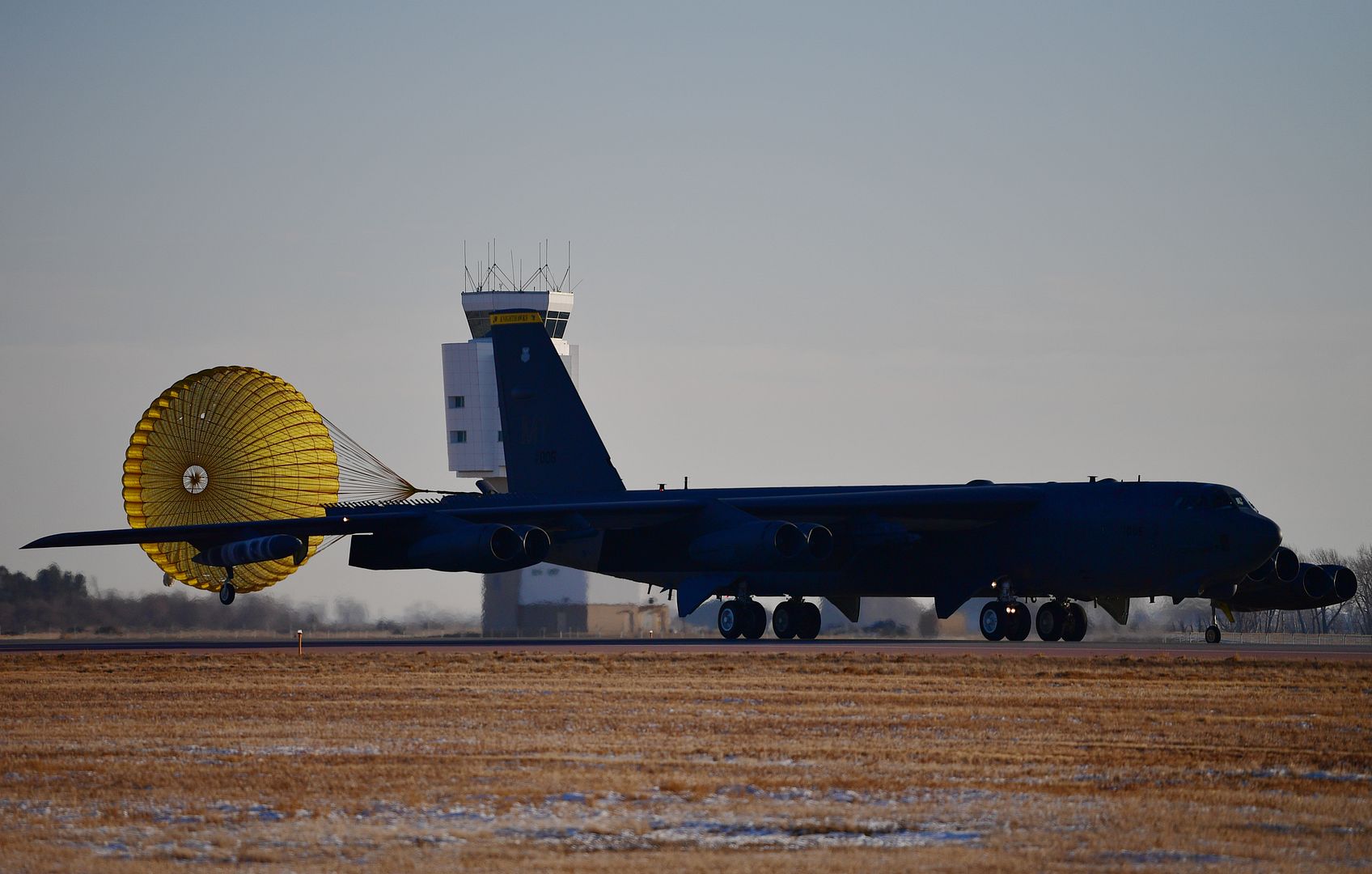
U.S. Soldiers from Kronos Troop, 3rd Squadron, 2nd Cavalry Regiment, drive their Strykers to their battle positions while a Polish MI-24 helicopter provides aerial support as they participate in a NATO live fire exercise coordinated by the Polish 1st Battalion 15th Mechanized Brigade at a range near the Bemowo Piskie Training Area, Poland, Jan. 30, 2018. The unique, multinational battle group, comprised of U.S., U.K., Croatian and Romanian soldiers serve with the Polish 15th Mechanized Brigade as a deterrence force in northeast Poland in support of NATO?s Enhanced Forward Presence. (U.S. Army photo by Spc. Andrew McNeil / 22nd Mobile Public Affairs Detachment)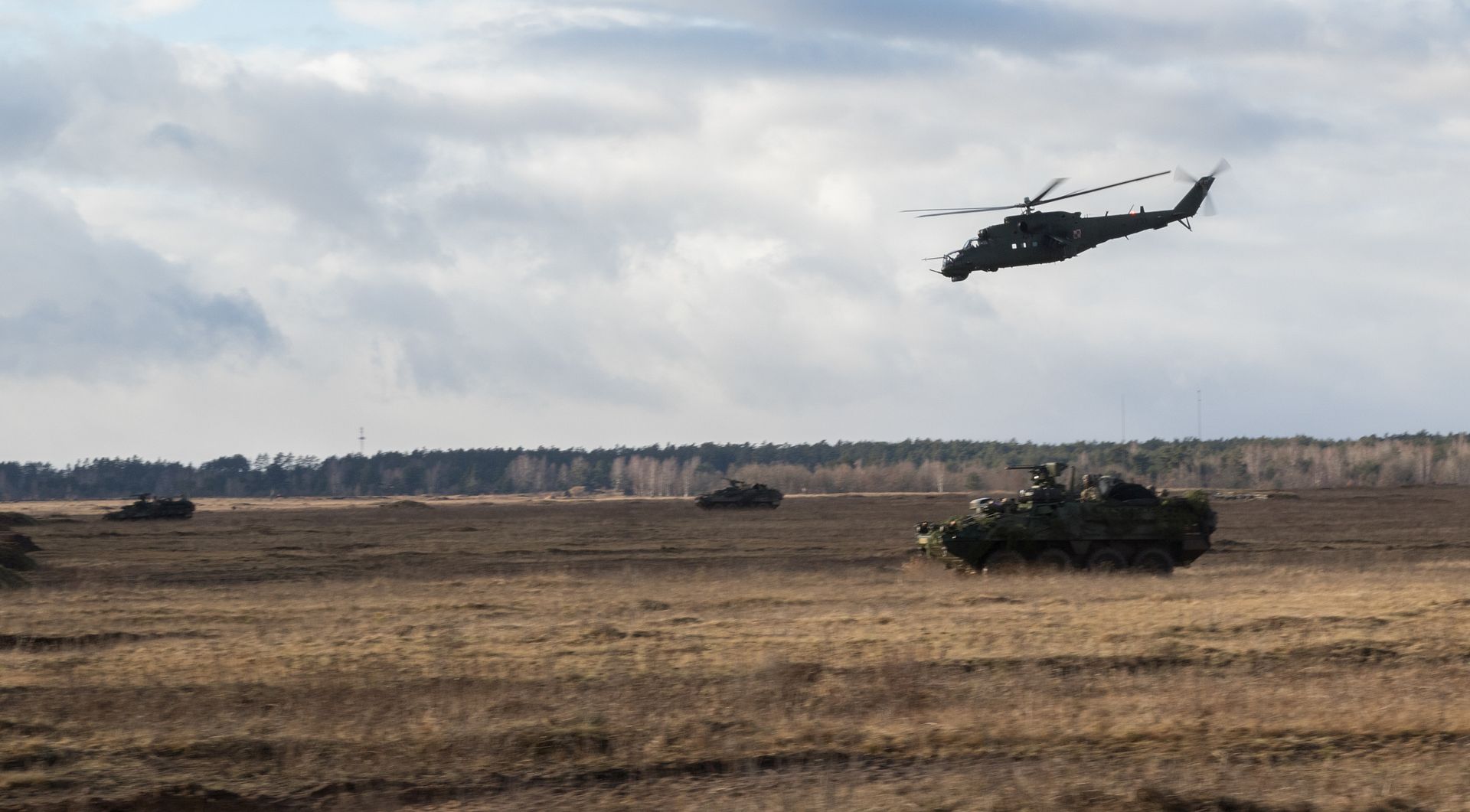
TEMPLE, Texas (Jan. 20, 2018) U.S. Navy Sailors and Marines assigned to Charlie Company, 2nd Reconnaissance Battalion, 2nd Marine Division, stage gear next to a Short SC.7 Skyvan prior to performing day and night parachute operations and insertion techniques in Temple, TX. The purpose of freefall insertion training is to place a Reconnaissance team safely and closely together to conduct deep ground reconnaissance, surveillance, battle space shaping, and limited scale raids in support of the Marine Expeditionary Force (MEF), other Marine air-ground task forces, or a joint force. (U.S. Marine Corps photo by Lance Cpl. Timothy J. Lutz/Released)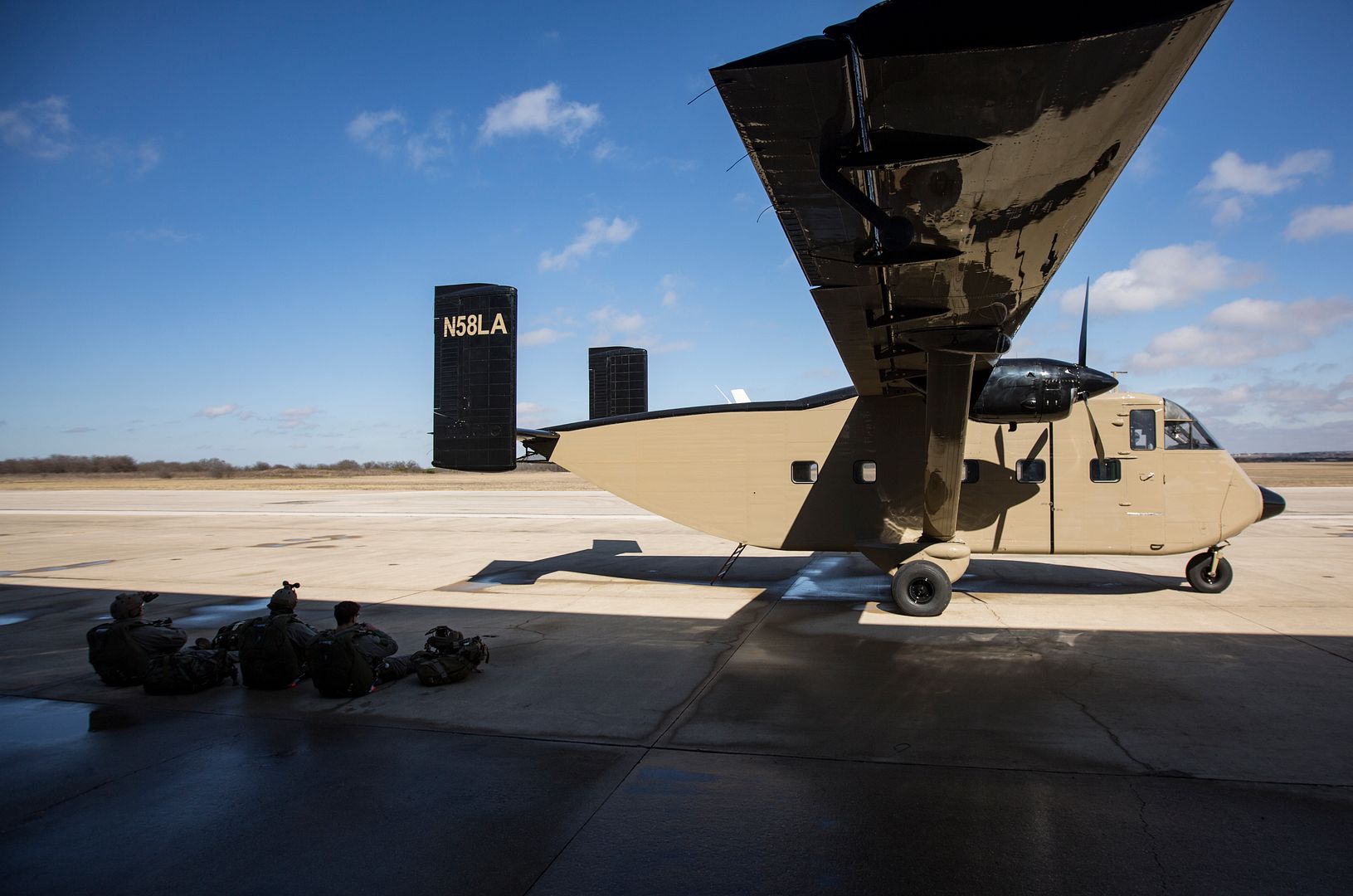
SEATTLE, Jan. 31, 2018 /PRNewswire/ -- Boeing [NYSE: BA] and Oman Air celebrated the delivery of the airline's first 737 MAX airplane, one of 30 that Oman Air will operate as it expands its fleet and service.
The flag carrier of the Sultanate of Oman has long operated the efficient and reliable Boeing 737. With the MAX, Oman Air will be able to achieve a double-digit percentage improvement in fuel efficiency.
"At Oman Air, offering the best possible on board experience is key to our success and the 737 MAX has already earned a reputation for its exceptional performance, efficiency and guest experience," said Abdulaziz Al-Raisi, Acting CEO, Oman Air. "The aircraft will be a perfect complement to our 737 family as we continue to expand our operations and play an increasingly active role in promoting Oman for business as well as a unique tourism destination, which is growing rapidly in popularity with every passing year."
The 737 MAX is a family of airplanes that incorporate the latest technology CFM International LEAP-1B engines, Advanced Technology winglets, Boeing Sky Interior, large flight deck displays, and other improvements to deliver the highest efficiency, reliability and passenger comfort in the single-aisle market. In Oman Air's configuration, its MAX 8 airplane will seat 162 passengers.
Oman Air's commitment to enhancing the inflight experience will be evident in both its business and economy class on board the 737 MAX. The 12 new, specially-designed business class seats will be electrically-controlled offering passengers more privacy with enhanced trim and finishes, whilst the 150 seats in economy will also feature a refreshed interior. While the business class will offer a 17" Thales Gen V, touch-screen AVANTE monitor, economy will have a similar 10.2" monitor. In addition, there will be high powered USB port for each passenger regardless of class.
Oman Air ordered 20 MAX airplanes in October 2015 and has since entered into a lease agreement for 10 more of the jets. The new airplanes will grow the Muscat-based carrier's fleet of 27 737s and seven 787 Dreamliners.
"Today marks another milestone in our 25-year partnership with Oman Air. We are proud to have supported their growth and we look forward to the 737 MAX taking the airline to new heights," said Marty Bentrott, Sales vice president for Middle East, Turkey, Russia, Central Asia & Africa.
The 737 MAX is the fastest-selling airplane in Boeing history, accumulating more than 4,300 orders to date from 92 customers worldwide. In the Middle East, Boeing currently has a backlog of over 300 737 MAXs with four airlines.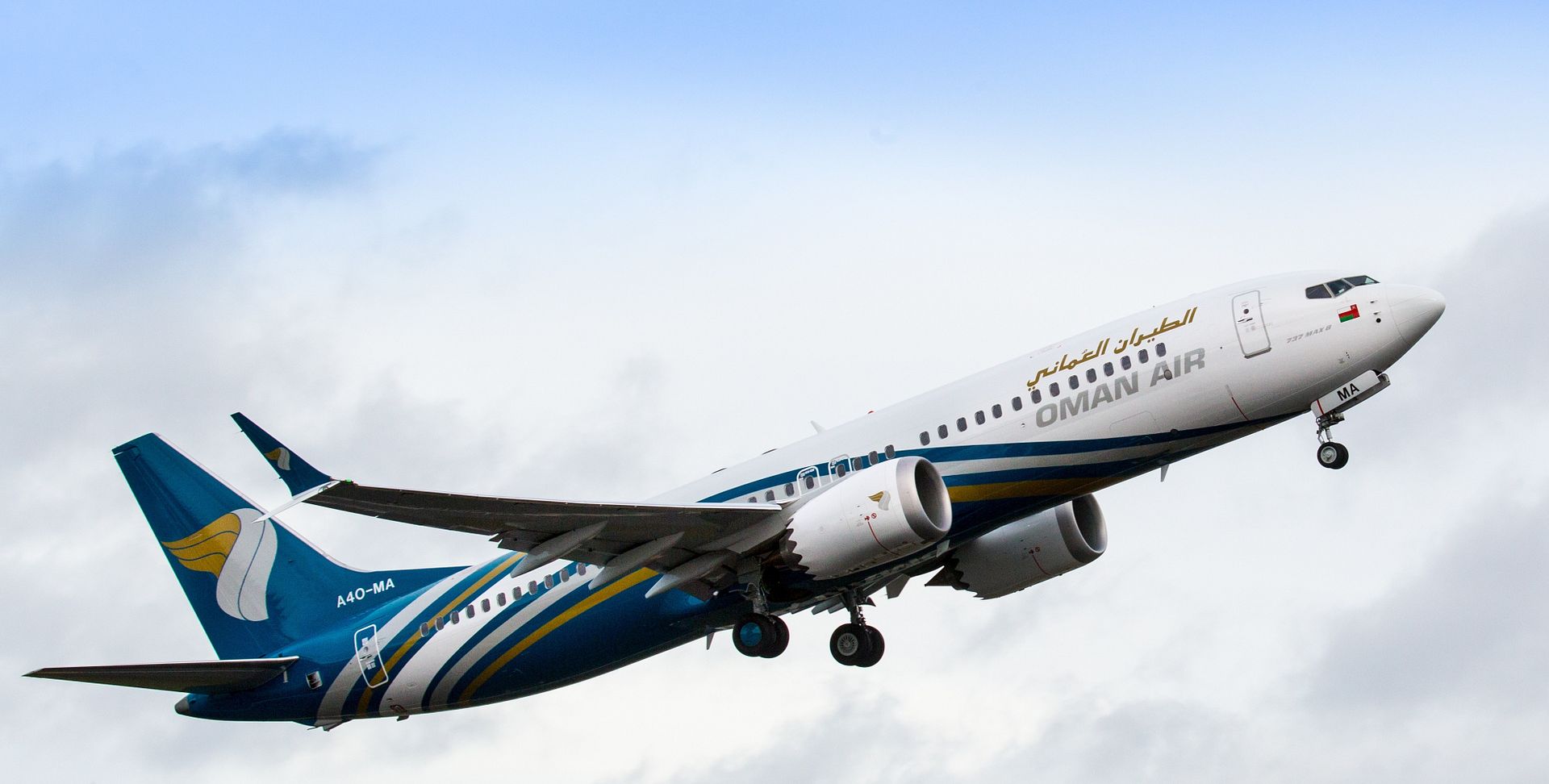
PHILADELPHIA, Jan. 31, 2018 ? The Bell Boeing V-22 Osprey team is embarking on a modification effort with the U.S. Marine Corps that will improve readiness and reliability of the fleet of tiltrotor aircraft.
The Bell Boeing Joint Program Office has been awarded a $69,668,099 modification to a previously awarded contract. Bell Boeing will modify three existing MV-22 aircraft in support of the V-22 Common Configuration-Readiness and Modernization (CC-RAM) Program.
Last week, the first MV-22 to be modified arrived at Boeing?s Philadelphia facility where majority of the work will be completed. Additional work will also be completed at the Bell facility in Fort Worth, Texas. Two additional aircraft will arrive within the next year.
?The CC-RAM program is the cornerstone for MV-22 long term sustainment and affordability. We look forward to the supportability benefits this program will provide as the MV-22 continues to effectively deliver Marines into and out of harm?s way,? said U.S. Marine Corps Col. Matthew Kelly, V-22 Joint Program Manager.
Boeing [NYSE: BA] and Bell Helicopter, a Textron Company [NYSE:TXT], jointly produce the V-22. The Marines have multiple configurations of the aircraft across its inventory. This effort will reduce MV-22 fleet configurations by modifying block ?B? aircraft to the block ?C? configuration.
?Our team is ready to take the MV-22 program into the future,? said Kristin Houston, vice president, Boeing Tiltrotor Programs and program director, Bell Boeing V-22 Program. ?Our integrated approach to managing CC-RAM will extend V-22 service life for the Marines and provide modernized technical capabilities to dedicated servicemen and women around the world.?
The Bell Boeing V-22 Osprey is a joint service, multirole combat aircraft that uses tiltrotor technology to combine the vertical performance of a helicopter with the speed and range of a fixed-wing aircraft. With its nacelles and rotors in vertical position, it can take off, land and hover like a helicopter. Once airborne, its nacelles can be rotated to transition the aircraft to a turboprop airplane capable of high-speed, high-altitude flight.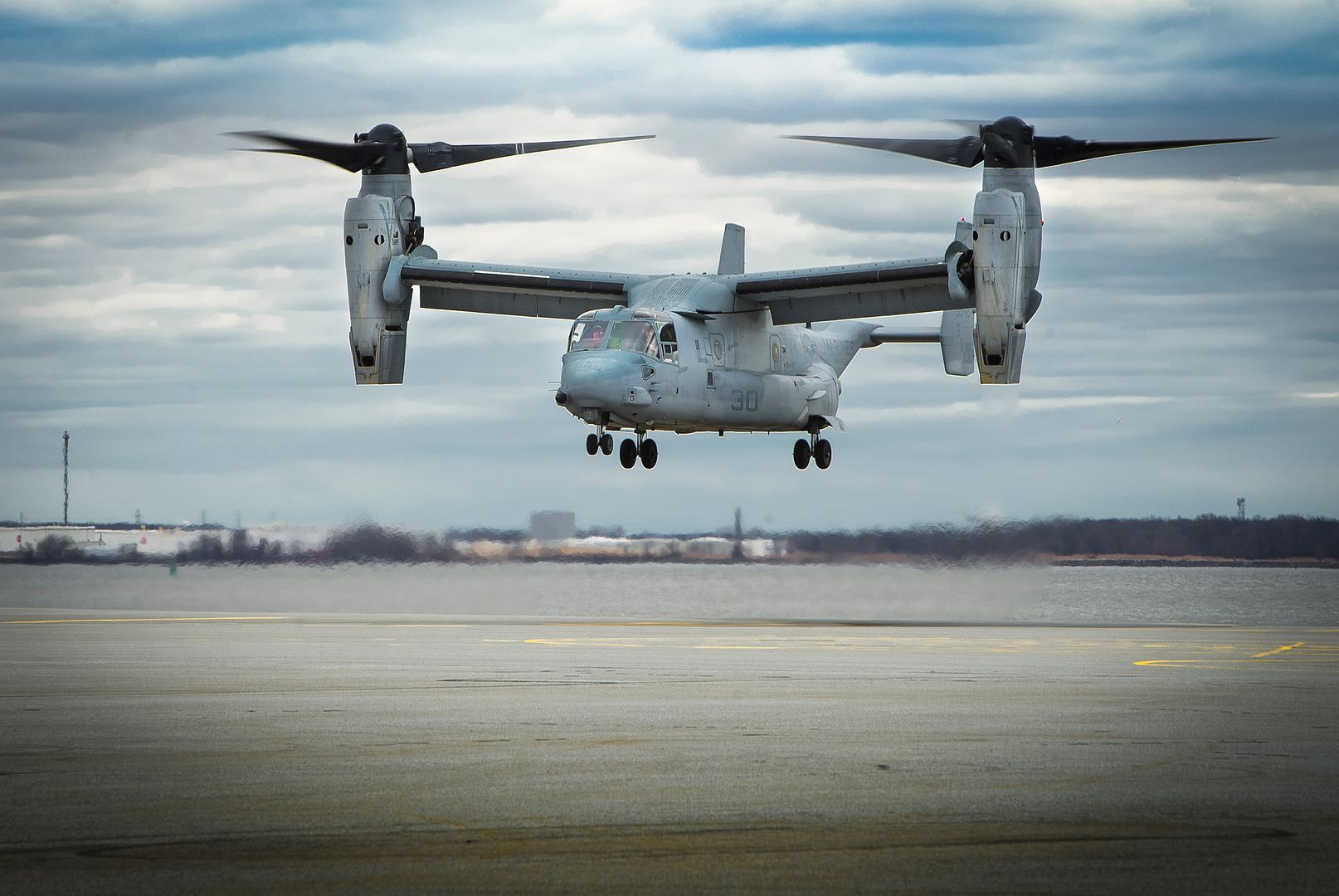
The first A321LR (Long Range) has taken off on its maiden flight from Hamburg Germany at 11:06 hrs local time, commencing its flight test programme. The aircraft, MSN7877, is powered by CFM International LEAP-1A engines.
The aircraft?s crew comprised: Experimental Test Pilots Yann Beaufils and Peter Lofts as well as Flight Test Engineers Frank Hohmeister, Jim Fawcett, Cedric Favrichon and Cabin Specialist Alexander Gentzsch.
The aircraft is now set to undergo a nearly 100 hour flight test programme, including transatlantic missions, for EASA and FAA Type Certification in Q2 2018. Entry into service is targeted for Q4 2018.
The A321LR features a new door configuration, enabling its operators to accommodate up to 240 passengers in Airbus? widest Single Aisle fuselage in the sky. The new Airspace by Airbus cabin available on the A320 Family additionally enhances the passengers? unrivalled travel experience. With further options, combining an increased Maximum Take Off Weight (MTOW) of 97 tonnes and a third Additional Centre Fuel Tank (ACT), the aircraft?s range extends to 4,000nm (7,400 km), allowing airlines to tap into new long range market opportunities.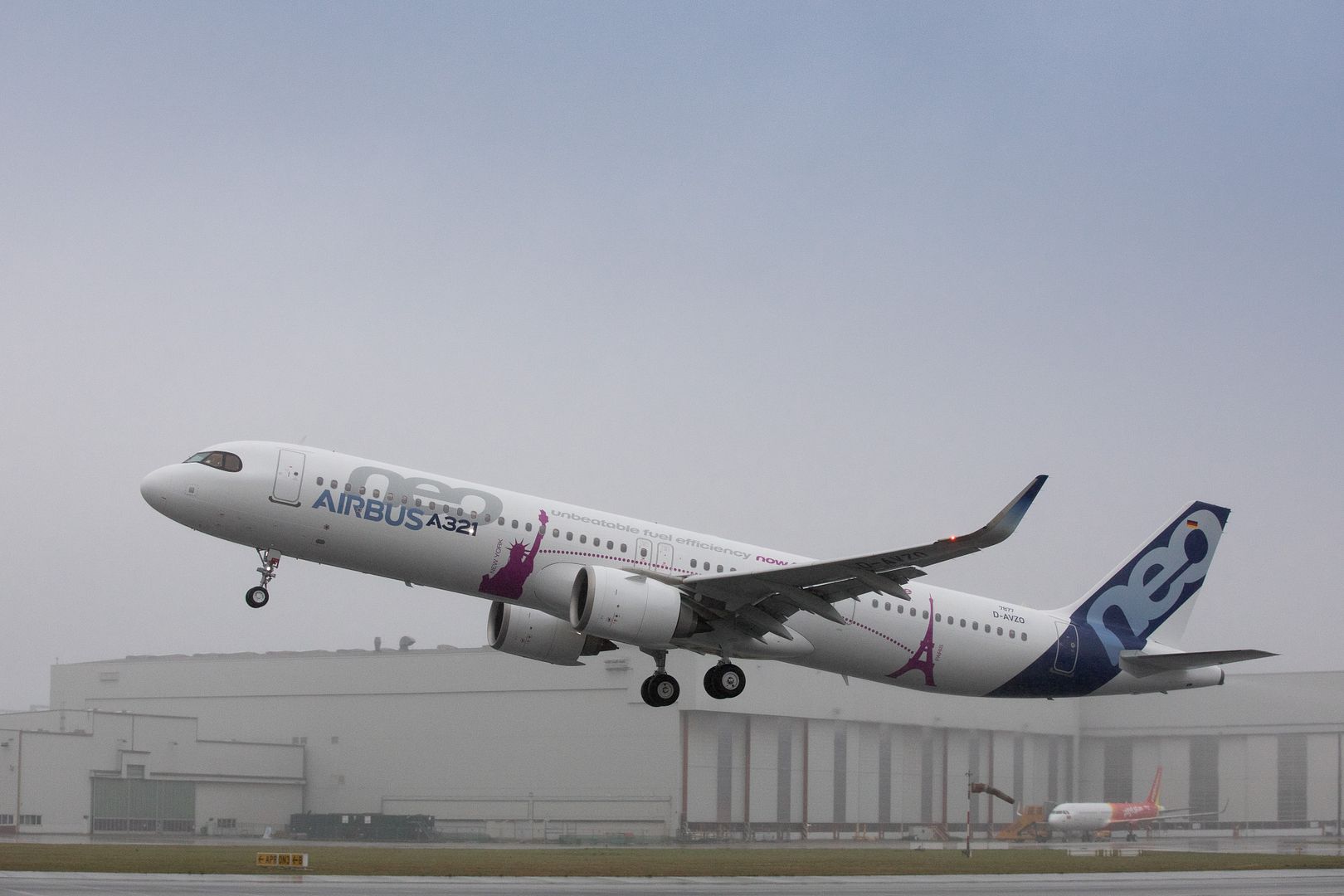
Incorporating the latest engines, aerodynamic advances, and cabin innovations, the A321neo offers a significant reduction in fuel consumption of 20 percent by 2020. With more than 1900 orders received from over 50 customers, to date the A321neo has captured a solid 80 percent of market share, making it the true aircraft of choice in the Middle of the Market.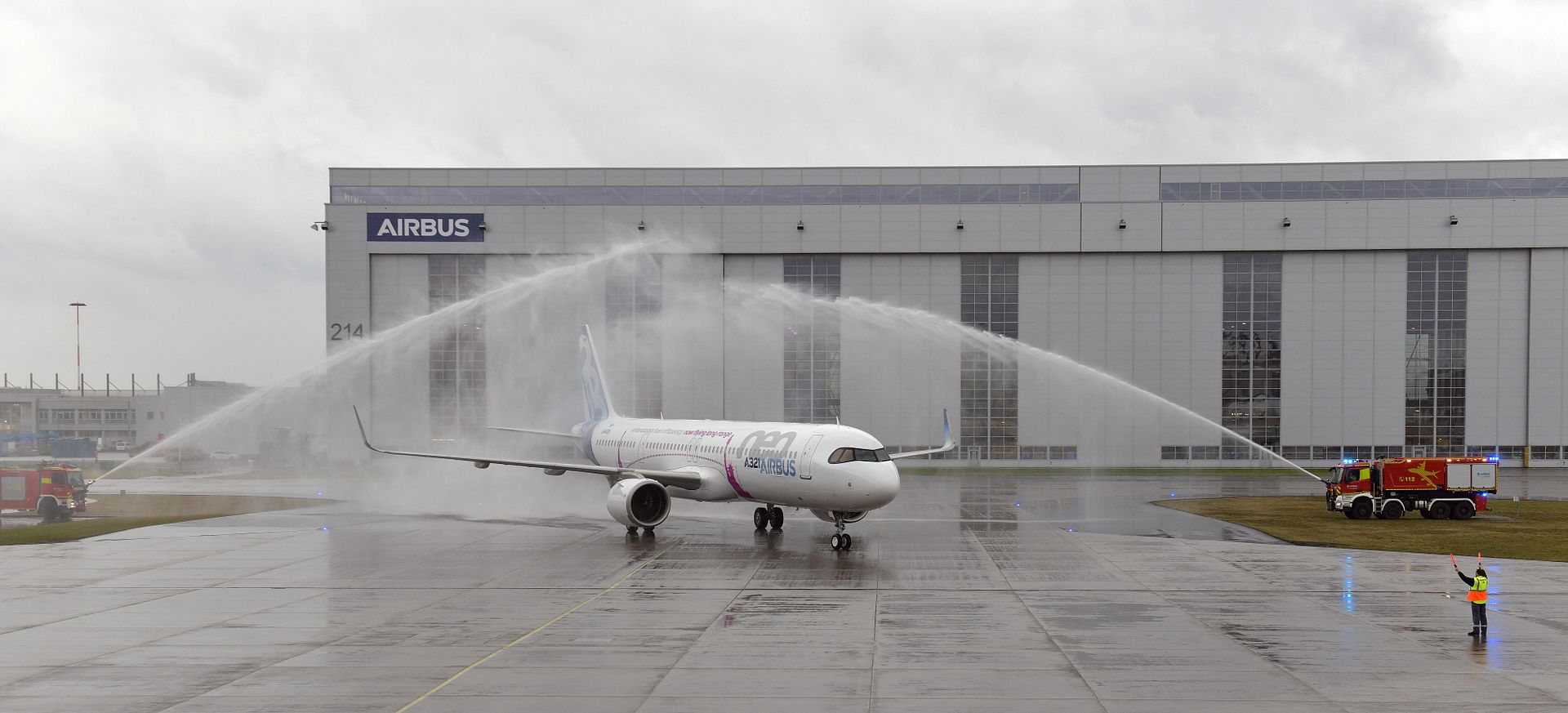
-
 Main AdminAn Italian F-35B, BL-1, arrived at NAS Patuxent River, Maryland, after a ferry flight from Italy, Jan. 31, 2018. This is the first Italian F-35 "B" variant.
Main AdminAn Italian F-35B, BL-1, arrived at NAS Patuxent River, Maryland, after a ferry flight from Italy, Jan. 31, 2018. This is the first Italian F-35 "B" variant.
Photo by Dane Wiedmann.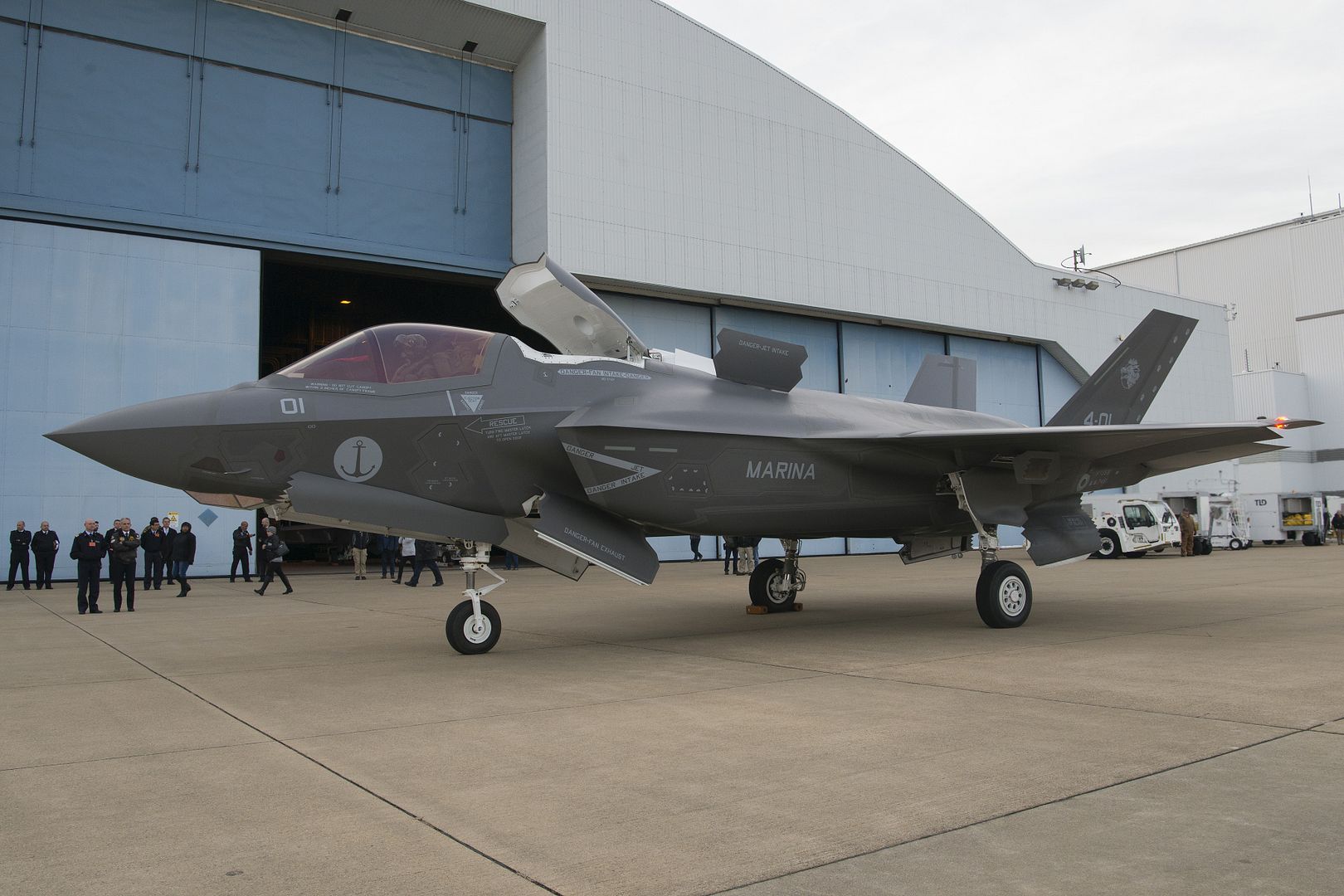
Airmen assigned to the 60th Air Mobility Wing, load onto a C-17 Globemaster III aircraft from the 21st Airlift Squadron at Travis Air Force Base, Calif., Jan. 30, 2018. The Airmen participated in a week-long base wide readiness exercise which evaluated the base's readiness and ability to execute and sustain rapid global mobility around the world. (U.S. Air Force photo by Master Sgt. Joey Swafford)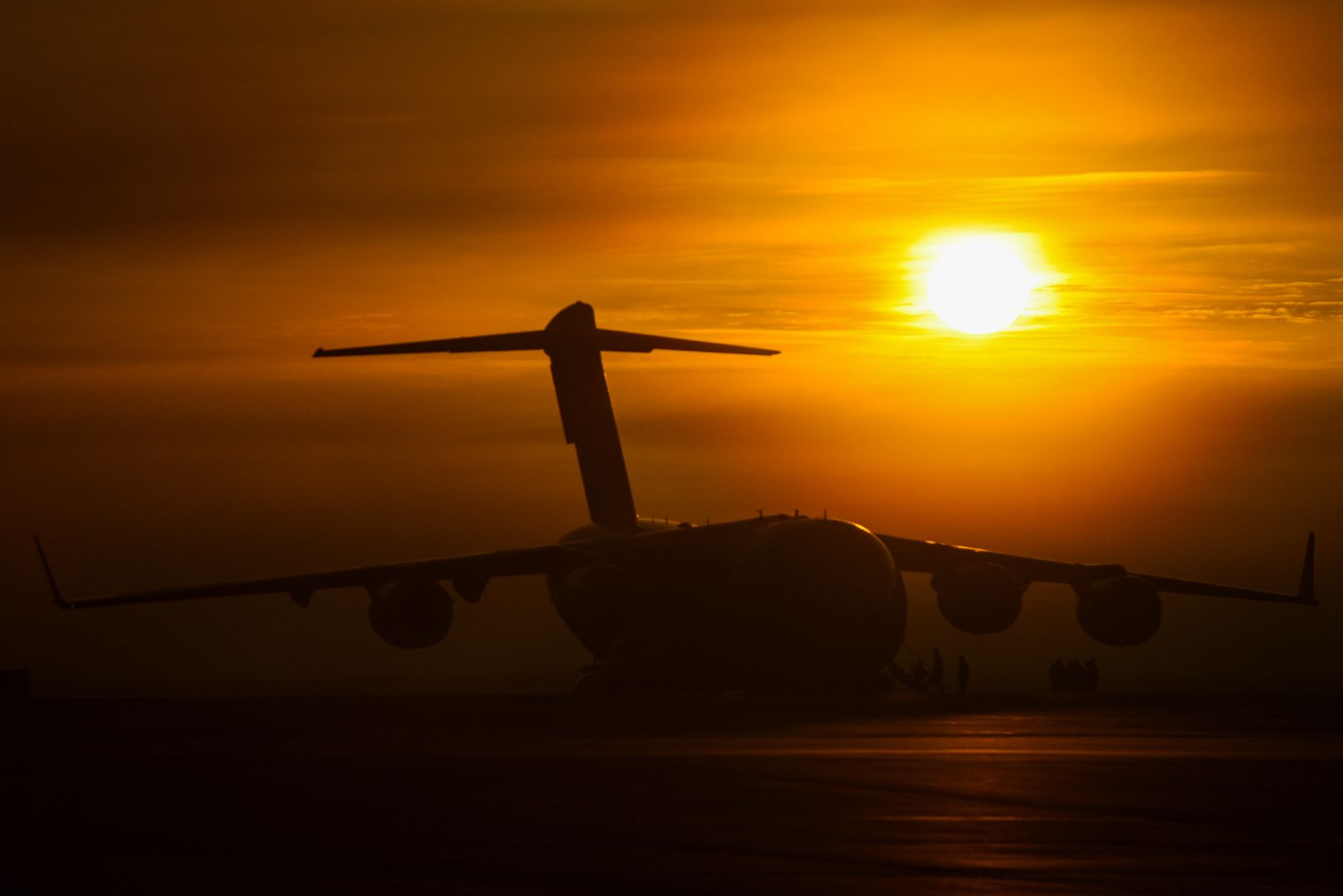
An A-10 assigned to the 124th Fighter Wing's 190th Fighter Squadron sits idle during a recent blood moon and eclipse Jan. 31, 2018 at Gowen Field, Boise, Idaho. The blood moon was not visible as clouds began moving in and obscuring the view. (U.S. Air National Guard photo by Tech. Sgt. John Winn)
A Eurofighter Typhoon assigned to the 11th Squadron, Royal Air Force Consingsby, United Kingdom, taxis to the runway during Red Flag 18-1, at Nellis Air Force Base, Nevada, Jan. 30, 2018. Red Flag builds partnerships and interoperability among joint and coalition combat air forces across all domains. (U.S. Air Force photo by Lawrence Crespo)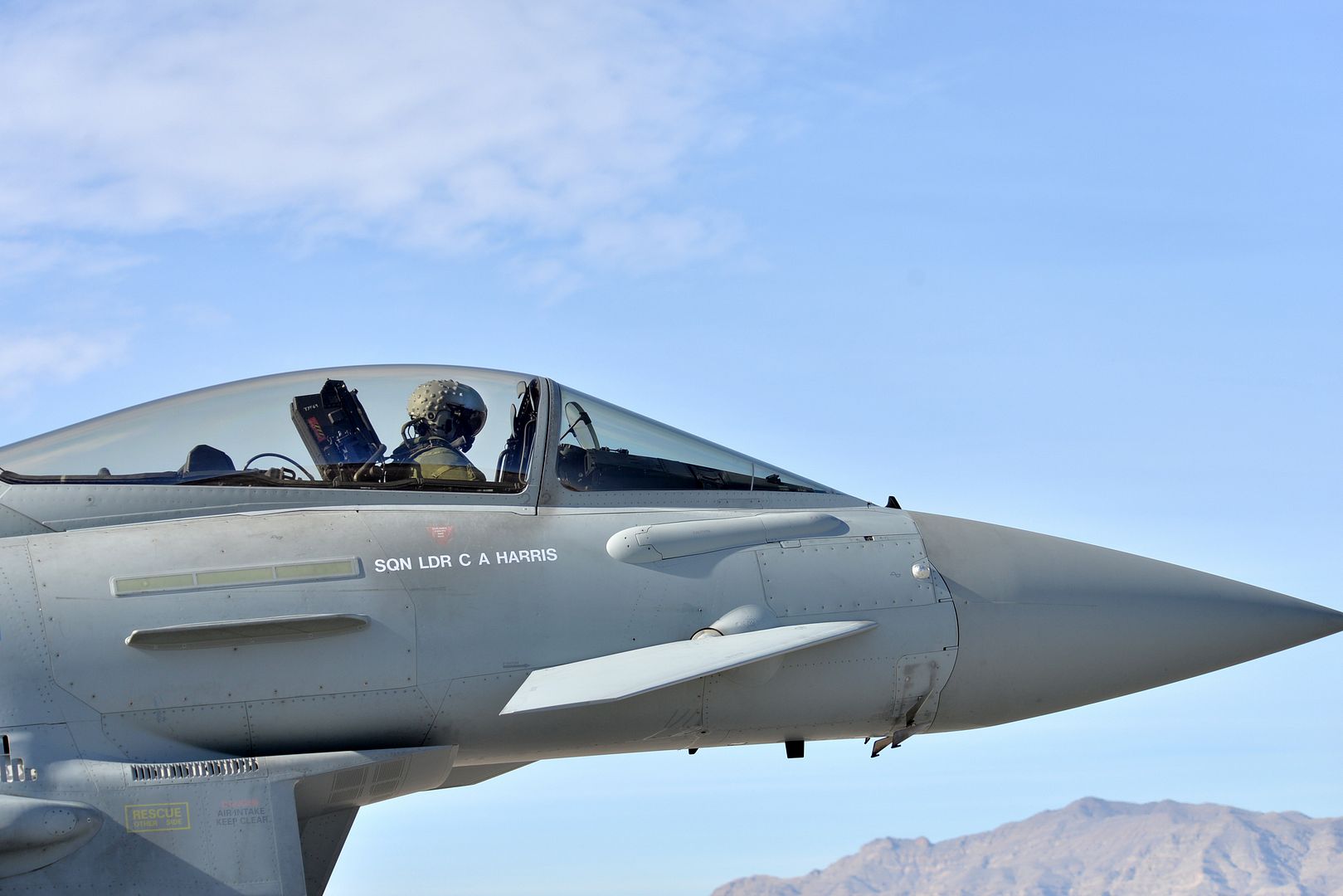
An F-16 Fighting Falcon fighter jet, assigned to the 134th Fighter Squadron, Vermont Air National Guard, sits on the flightline before preflight checks during Red Flag 18-1 at Nellis Air Force Base, Nevada, Jan. 30, 2018. Red Flag is a realistic combat training exercise that provides heavily-contested and degraded operational environments to prepare crews for possible major combat operations. (U.S. Air Force photo by Senior Airman Kevin Tanenbaum)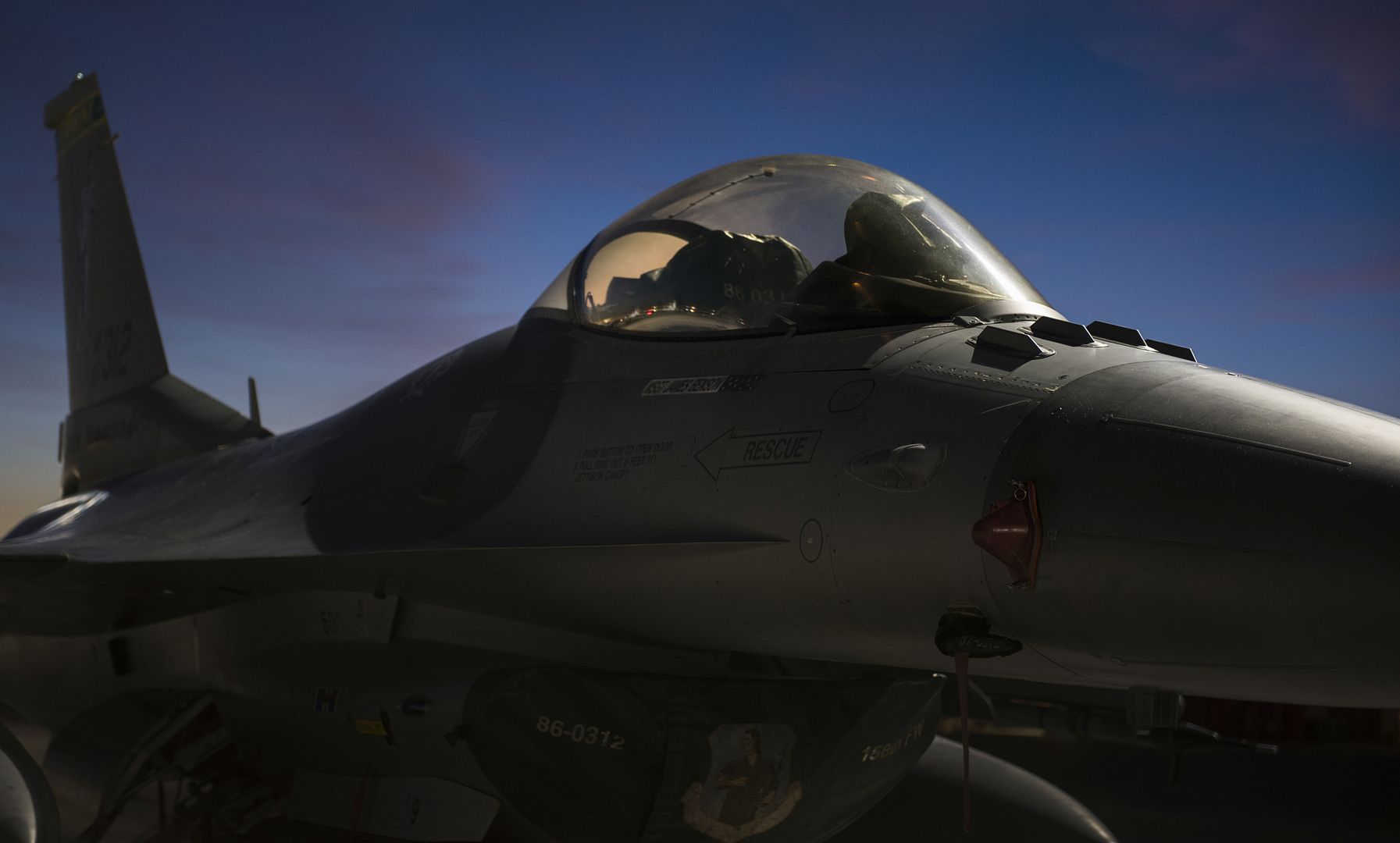
F-15E Strike Eagle fighter jets assigned to the 335th Fighter Squadron, Seymour Johnson Air Force Base, North Carolina, prepare for takeoff during Red Flag 18-1, Nellis Air Force Base, Nevada, Jan. 30, 2018. Red Flag gives mission commanders the opportunity to lead in a contested, degraded and operationally limited environment with multi-domain assets. (U.S Air Force photo by Lawrence Crespo)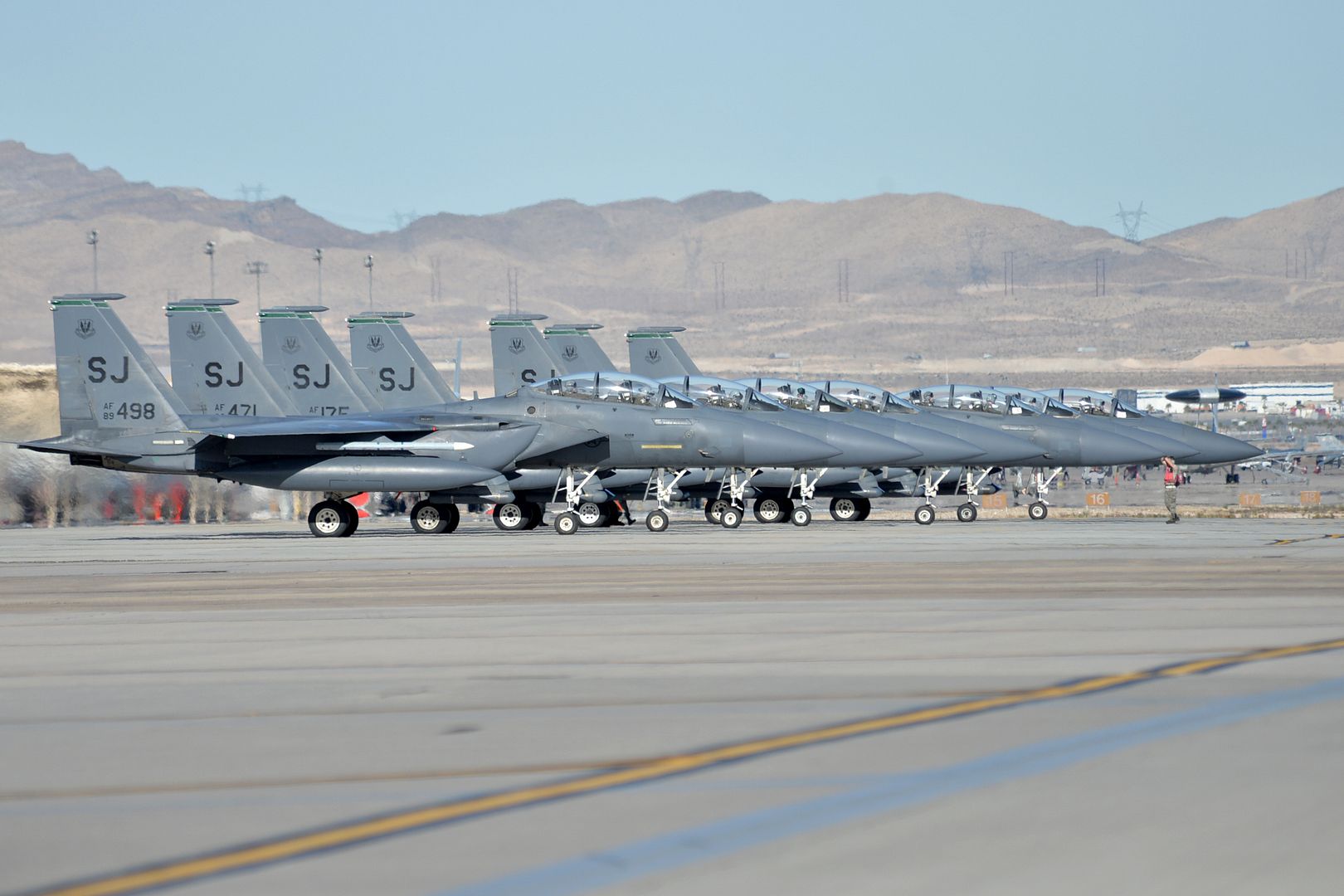
F-16 Fighting Falcon Fighter Jets assigned to the 64th Aggressor Squadron, Nellis Air Force base, Nevada, await clearance at the end of the runway during Red Flag 18-1, Jan. 30, 2018. Red Flag provides aircrew and support personnel an opportunity to experience realistic combat scenarios to prepare and train for the event of future conflicts of war. (U.S. Air Force photo by Lawrence Crespo)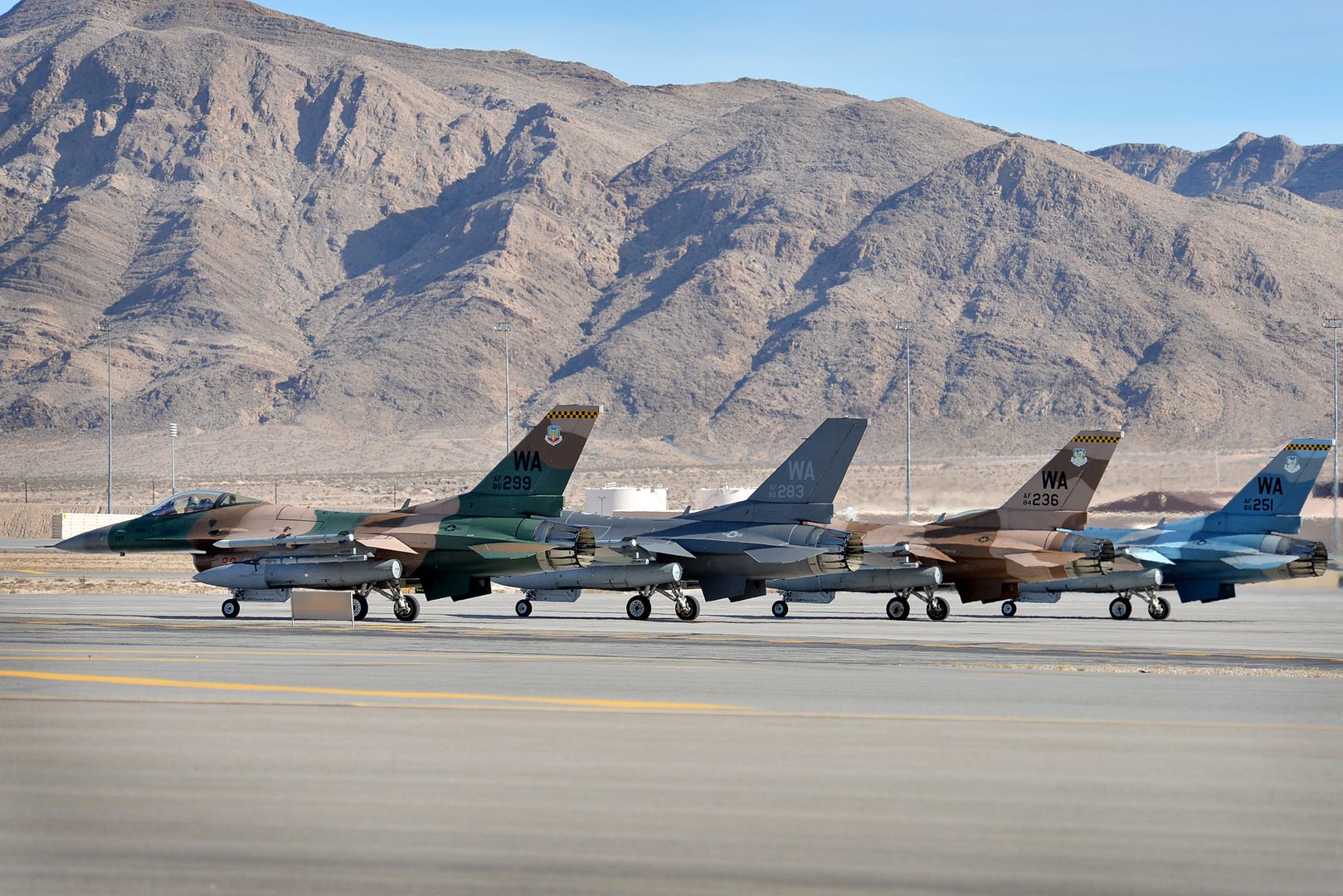
A U.S. Navy EA-18G Growler fighter jet taxis down the runway during Red Flag 18-1 at Nellis Air Force Base, Nevada, Jan. 30, 2018. Red Flag gives mission commanders the opportunity to lead with multi-domain assets. (U.S. Air Force photo by Airman 1st Class Andrew D. Sarver)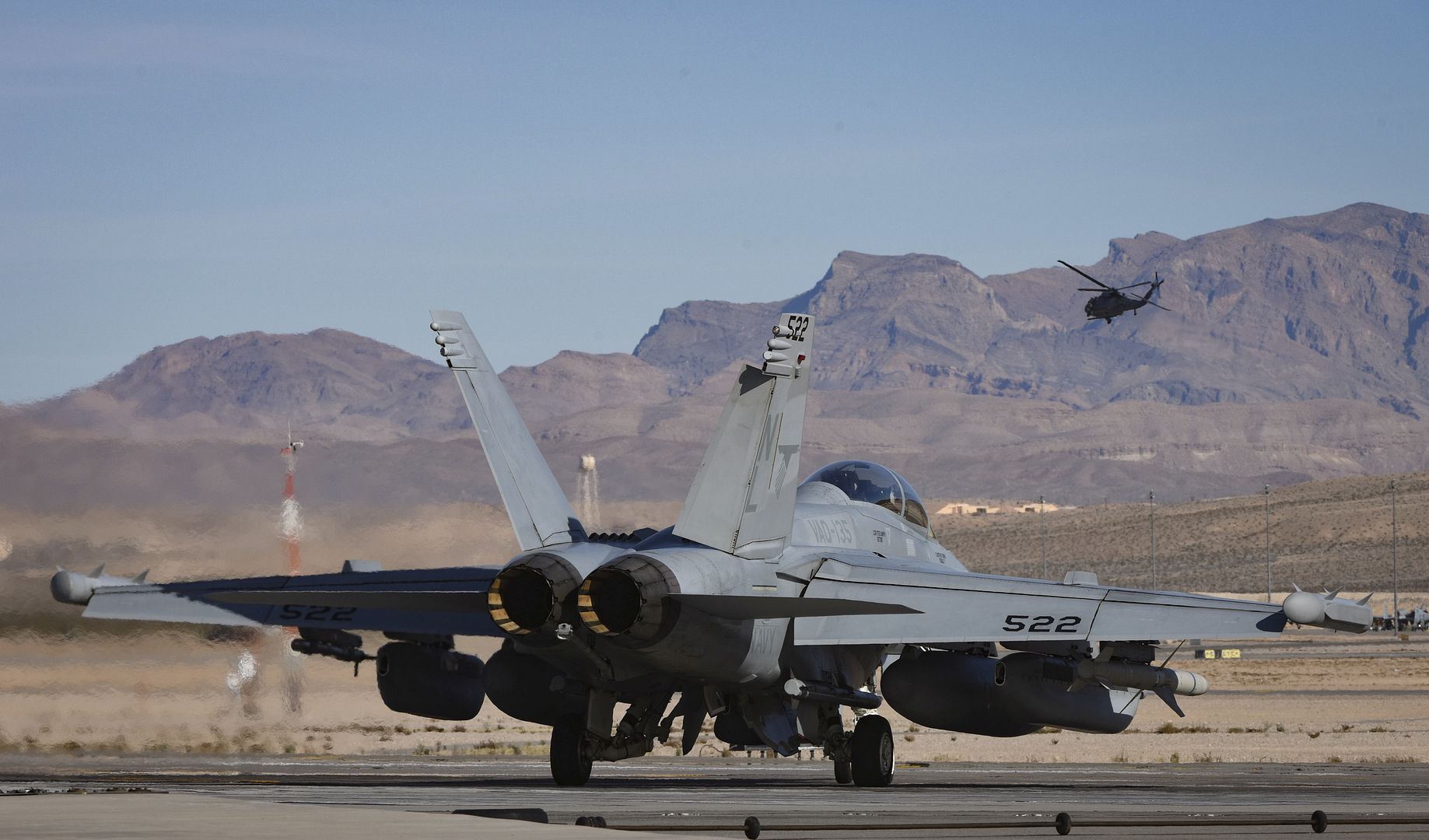
PRAGUE, Feb. 1, 2018 /PRNewswire/ -- Boeing [NYSE: BA], GE Capital Aviation Services (GECAS) and Travel Service, the largest carrier in the Czech Republic, celebrated the delivery of the airline's first 737 MAX airplane.
"We are pleased that Travel Service is among the first airlines to include 737 MAX into its fleet," said Roman Vik, Chief Executive Officer Travel Service. "As Travel Service is dynamically expanding and growing, the new Boeing 737 MAX airplane will fully support our ambitious development plan and competitive advantage. Thanks to a new modern fleet, Travel Service will be able to launch direct flights to new destinations and enhance the travel experience of our customers."
Travel Service is leasing the airplane ? a more fuel-efficient, quieter, and longer-range version of the 737 jet ? from GECAS, the commercial aircraft leasing and financing arm of General Electric.
"GECAS is delighted to further strengthen its business relationship with Travel Service by delivering the airline's first Boeing 737 MAX 8 airplane. GECAS has been a partner with Travel Service since its inception with five 737-800s currently on lease to this dynamic airline," said Felix McArdle, Senior Vice President, GECAS Sales & Marketing. "The delivery of this latest-technology airplane, the first of 10 that will be leased by GECAS to Travel Service, will enable the airline continue to grow profitably and in an environmentally friendly way. GECAS wishes Travel Service every success with these advanced new airplanes."
"Travel Service is one of the fastest growing operators in the region and we are delighted that it is adding the 737 MAX to its all-Boeing fleet, boosting capacity for its upcoming summer season schedule," said Monty Oliver, vice-president of Europe Sales, Boeing Commercial Airplanes. "The 737 MAX will provide Travel Service with unmatched reliability and a premium on-board experience for its passengers."
About Travel Service:
Travel Service is the largest airline company in the Czech Republic. It operates regular flights under the SmartWings brand, along with charter flights and private flights in the business jet category. Travel Service airplanes fly to more than 400 airports in four continents. Travel Service also operates in Slovakia, Poland and Hungary, where the company has its subsidiary companies.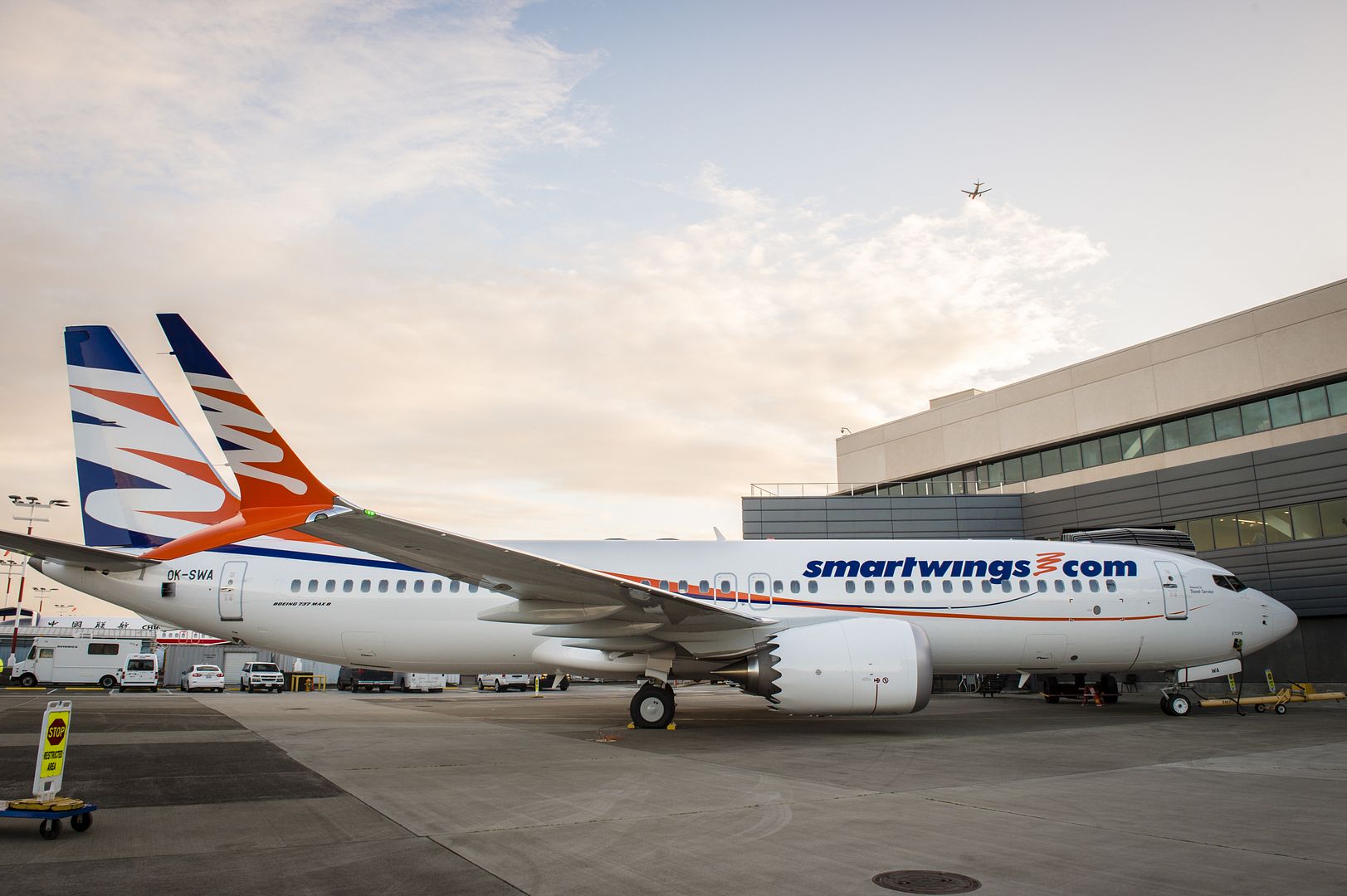
UPS has exercised options to order 14 additional Boeing 747-8 Freighters, providing additional capacity in support of accelerating demand for U.S. and international air services.
The aircraft build on the company?s 2016 order of 14 Boeing 747-8Fs. UPS will also purchase 4 new Boeing 767 Freighters, adding capacity for customers on both U.S. and international routes.
?As we celebrate the 30th anniversary of UPS Airlines today, we are seeing unprecedented demand for our air products,? said UPS Airlines President Brendan Canavan. ?The new freighters will allow us to continue upsizing aircraft on routes and will create a cascading effect that will boost capacity on regional routes around the world.?
?UPS has clearly tapped into the power and efficiency the 747-8 Freighter brings to the market,? said Boeing Commercial Airplanes president and CEO Kevin McAllister. ?We?re impressed with how UPS is leveraging the airplane in its operations, and also excited to see them bring additional 767s into their fleet.?

-
 Main AdminA Royal Canadian Air Force CC-130J aircraft taxies at Rosecrans Memorial Airport, St. Joesph, Mo. February 1, 2018 after a training flight for the Treaty on Open Skies. Personnel from the United States, Canada, United Kingdom, France and the Czech Republic participated in the flight designed to promote international cooperation and transparency. (U.S. Air National Guard photo/Tech. Sgt. John Hillier)
Main AdminA Royal Canadian Air Force CC-130J aircraft taxies at Rosecrans Memorial Airport, St. Joesph, Mo. February 1, 2018 after a training flight for the Treaty on Open Skies. Personnel from the United States, Canada, United Kingdom, France and the Czech Republic participated in the flight designed to promote international cooperation and transparency. (U.S. Air National Guard photo/Tech. Sgt. John Hillier)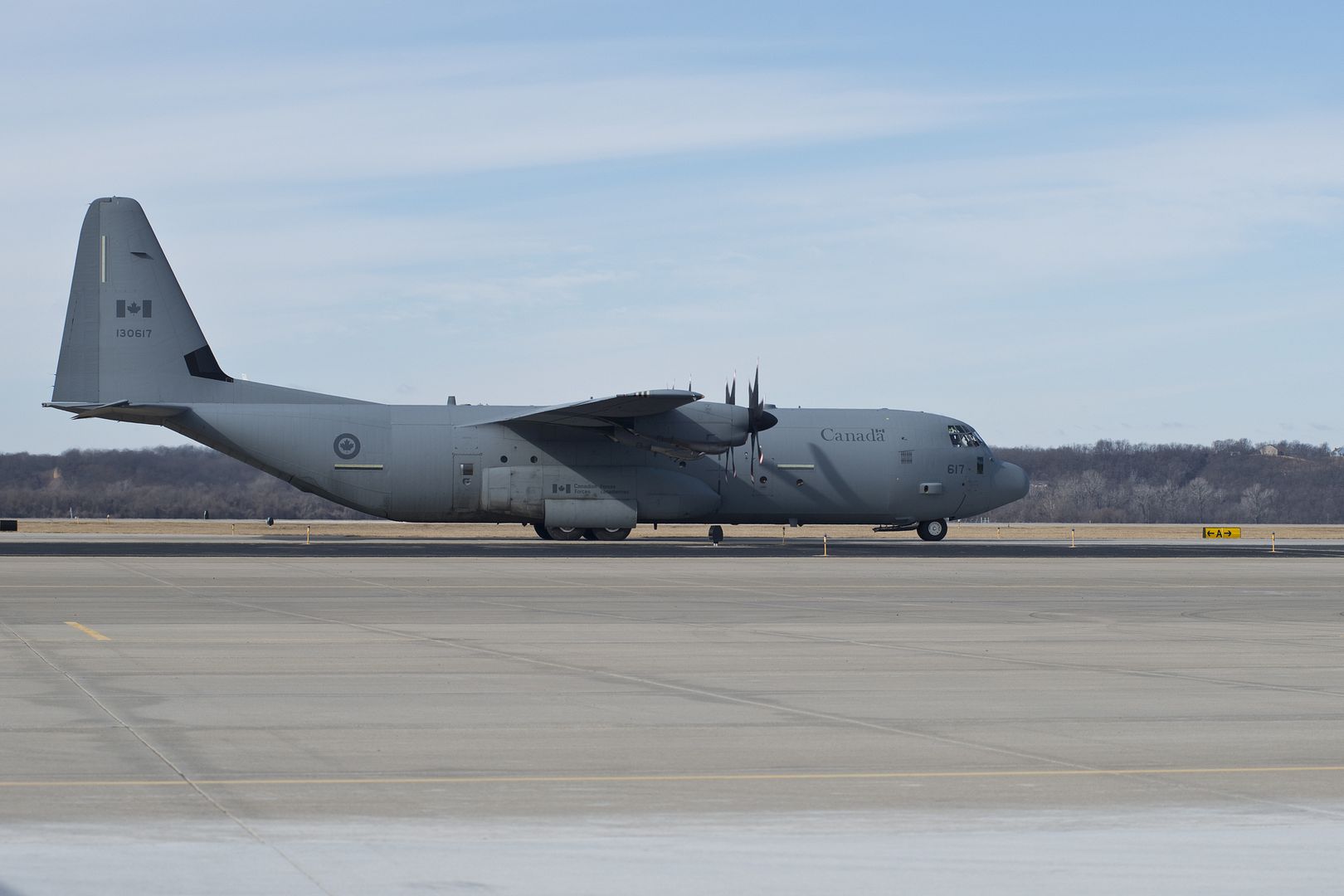
CORPUS CHRISTI, Texas (Feb. 1, 2018) Lt. Cmdr. Scott Urbashich, an instructor pilot assigned to Training Squadron 28 (VT-28), left, and Capt. Trey Hayden, Training Air Wing (TRAWING) 4 Commodore, preflight the last T-6B Texan II in production aboard Naval Air Station (NAS) Corpus Christi. NAS Corpus Christi aquired the plane from Beechcraft, making it the 97th plane in the base's fleet. (U.S. Navy Photo's by Anne Booher/Released)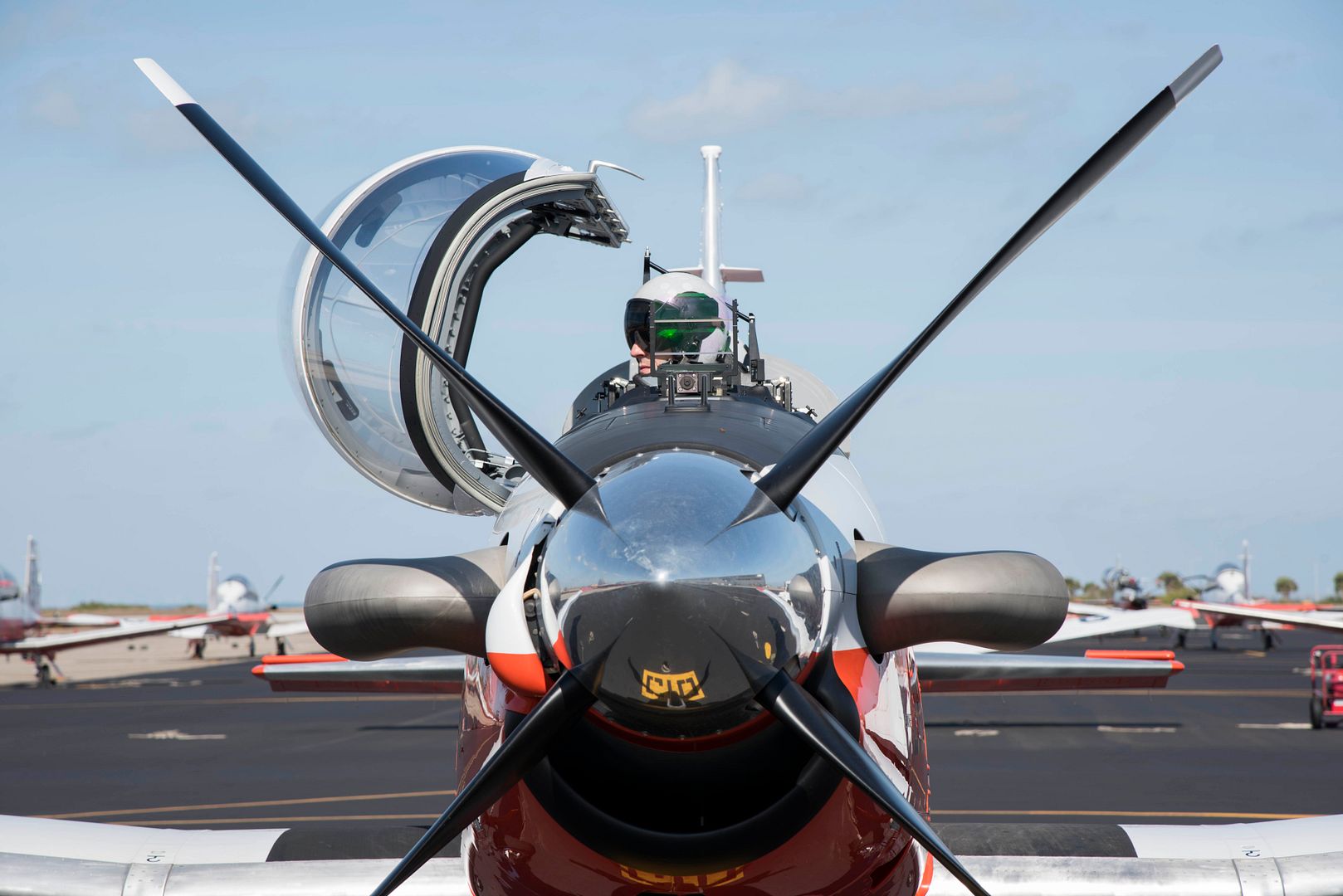
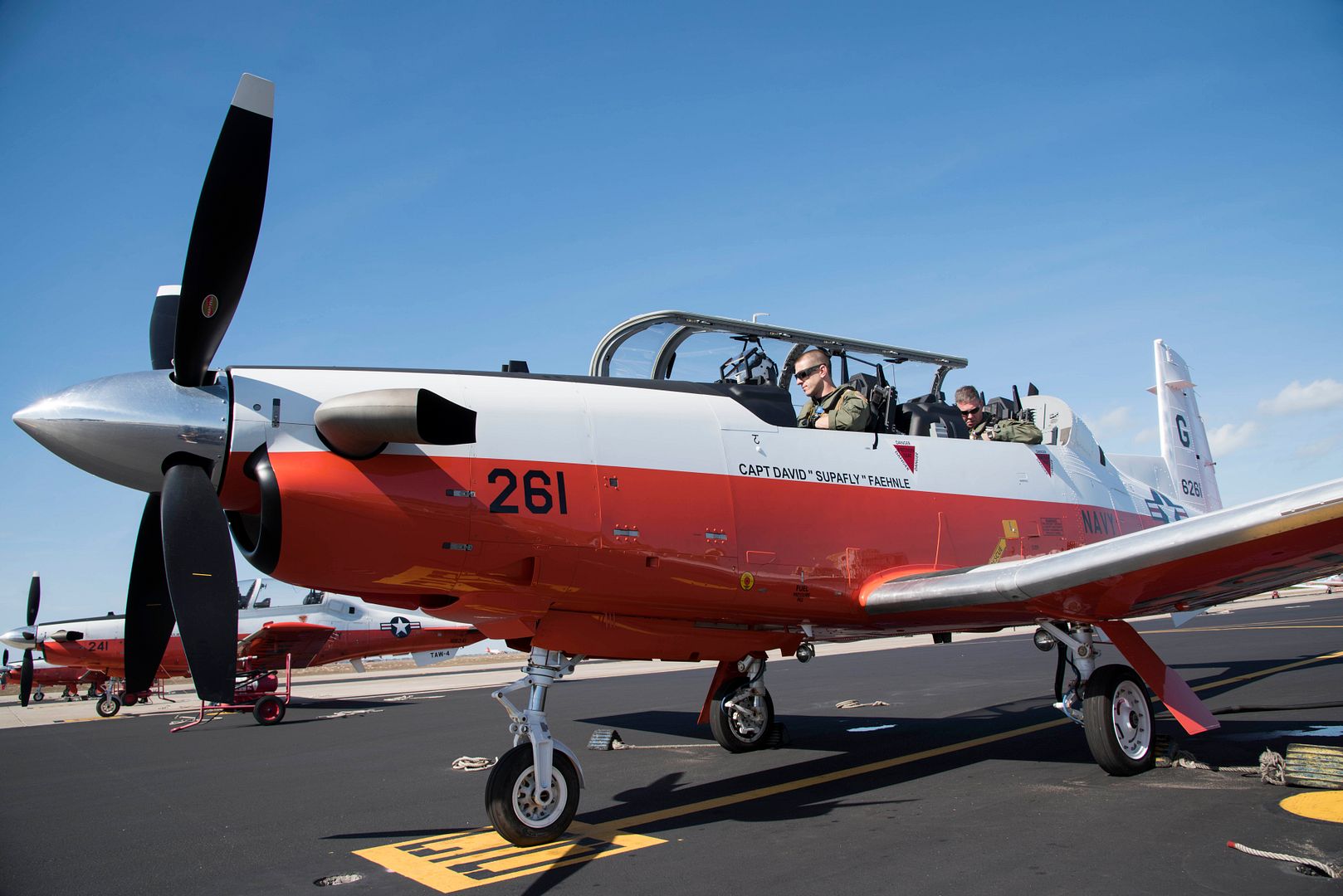
Donauw?rth, The successful capability enhancement for the H145M continues. In the first weeks of December 2017, Airbus Helicopters demonstrated the ability to fire laser guided rockets (FZ275 LGR from Thales) with its new H145M platform at the ?lvdalen test range of the Swedish Defence Materiel Administration Flight test Centre. In a rough and challenging environment the system performed flawlessly.
The electro-optical system (MX-15D) from L3 Wescam with embedded laser designation enabled a deviation of less than a meter for all rockets fired at a distance of up to 4.5 km. This 70mm laser guided air-ground rocket enhances the H145M?s engagement capabilities. It fulfils the precision strike needs of the armed forces worldwide by reducing the risk of collateral damage, particularly during asymmetric combat operations.
?The laser guided rockets from Thales performed incredibly well especially taking into consideration the weather conditions we experienced during the trials which were far from ideal with a lot of moisture in the air? said Raymond Laporte, test pilot at Airbus Helicopters.
Following the success of the ballistic firing tests, held in Hungary in October 2017, the achievement of this new milestone with laser guided rockets is in continuity of Airbus Helicopters? HForce development strategy to boost the H145M mission capability.
Final qualification of the ballistic HForce system on the H145M is scheduled for end of this year, while the laser-guided rockets is planned for end 2019.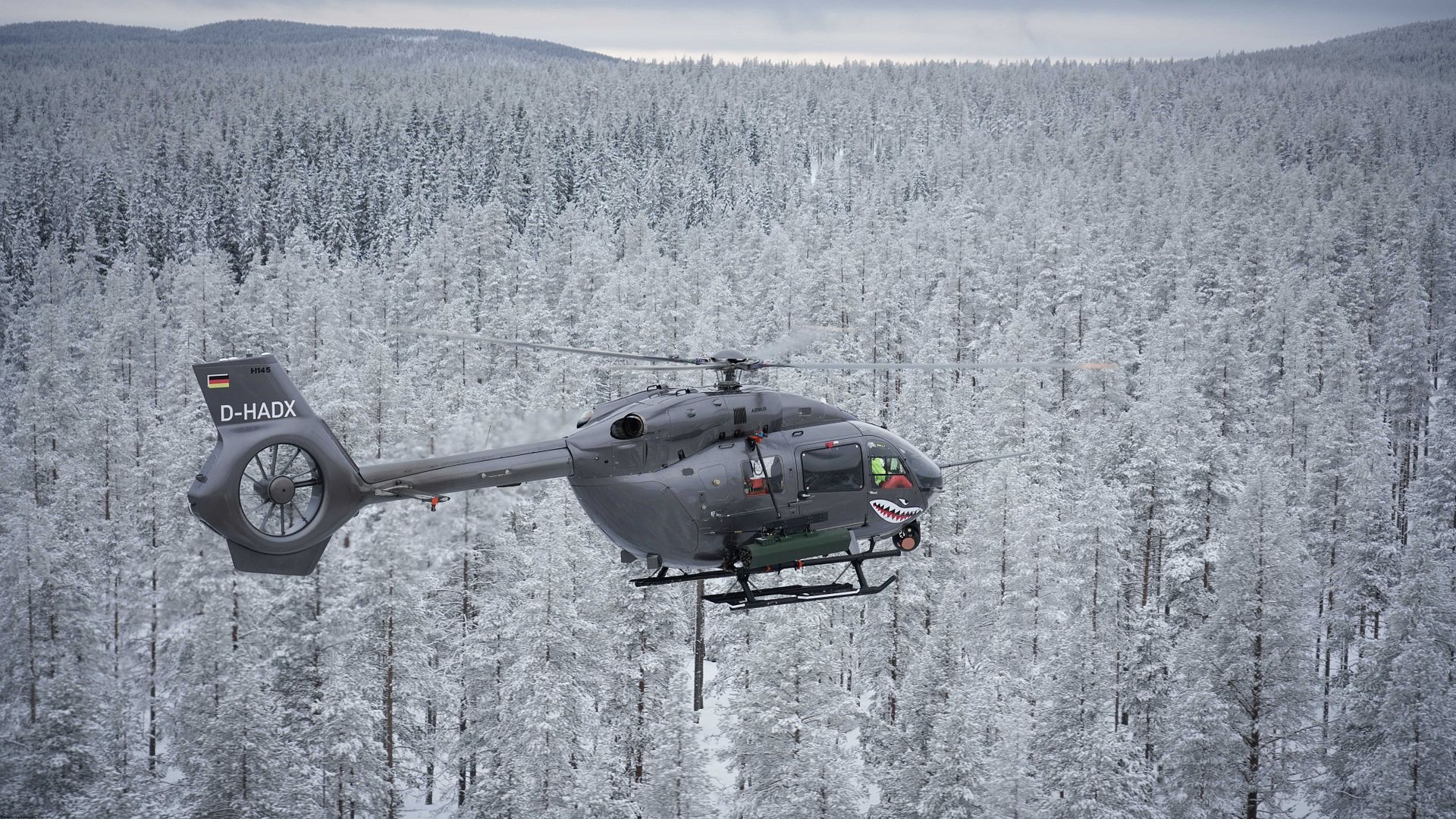
XI(F) Squadron Typhoons, from RAF Coningsby, are taking part in Exercise Red Flag 18-1, the world?s largest and most complex air combat exercise. Based at Nellis Air Force Base in Nevada, XI(F) Squadron will operate alongside participants from the U.S Air Force, U.S Navy, U.S. Army, U.S Marine Corps and the Royal Australian Air Force.
?Exercise Red Flag enables the RAF to continue to strengthen strategic relationships with our closest allies and develop our tactical understanding of complex missions, integration and multi-domain warfare. Short of operations, Exercise Red Flag is one of the most challenging environments to test the Royal Air Force's Force Elements; I am extremely proud of the men and women on our Squadron and look forward to increasing our combat effectiveness over the forthcoming weeks?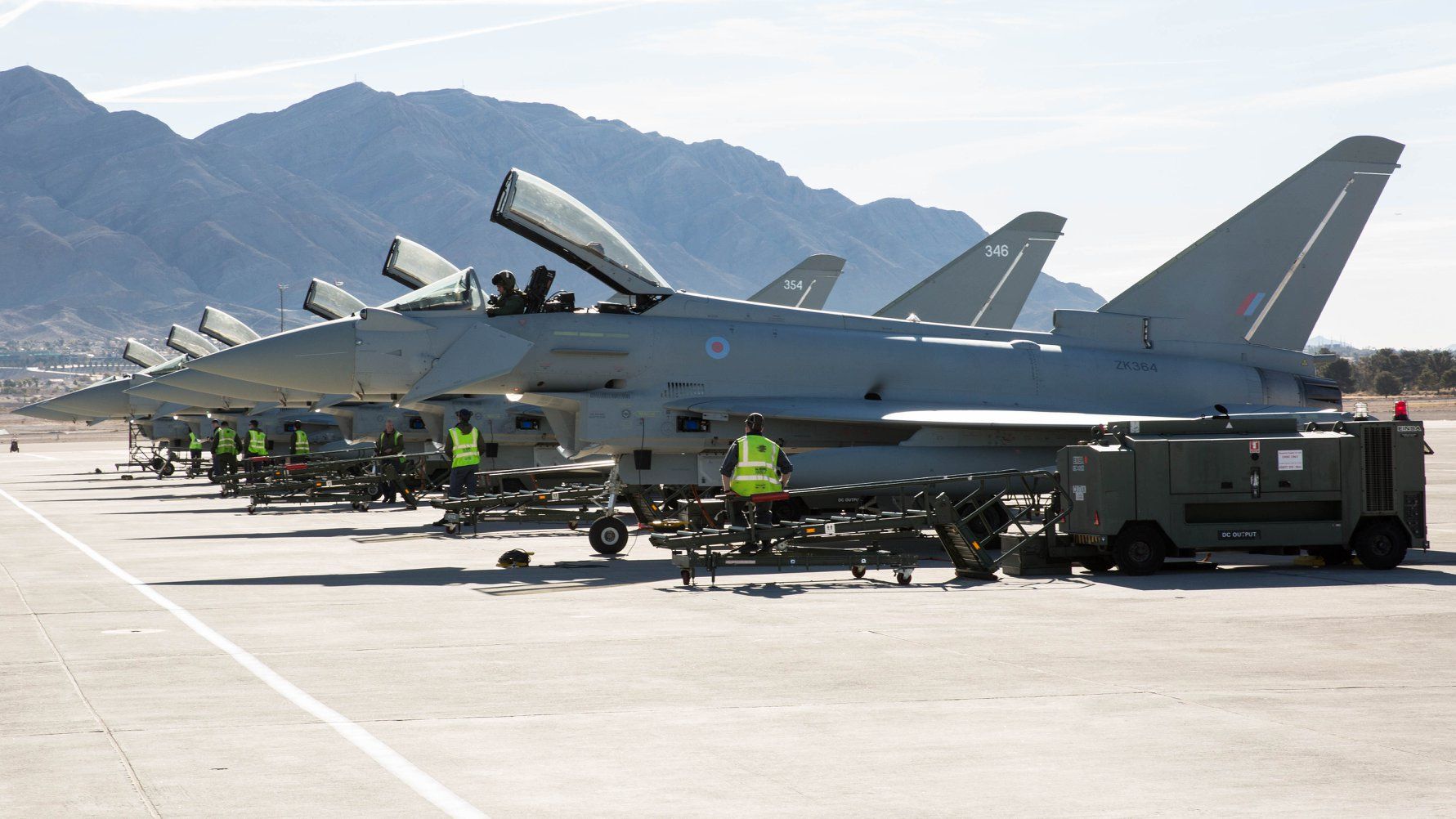
The three week exercise will see friendly ?Blue? forces against the hostile ?Red? aggressors, involving a variety of attack, fighter and bomber aircraft. The arena of space and cyber warfare will also be simulated during the exercise.
Images: SAC James Skerrett, RAF Coningsby.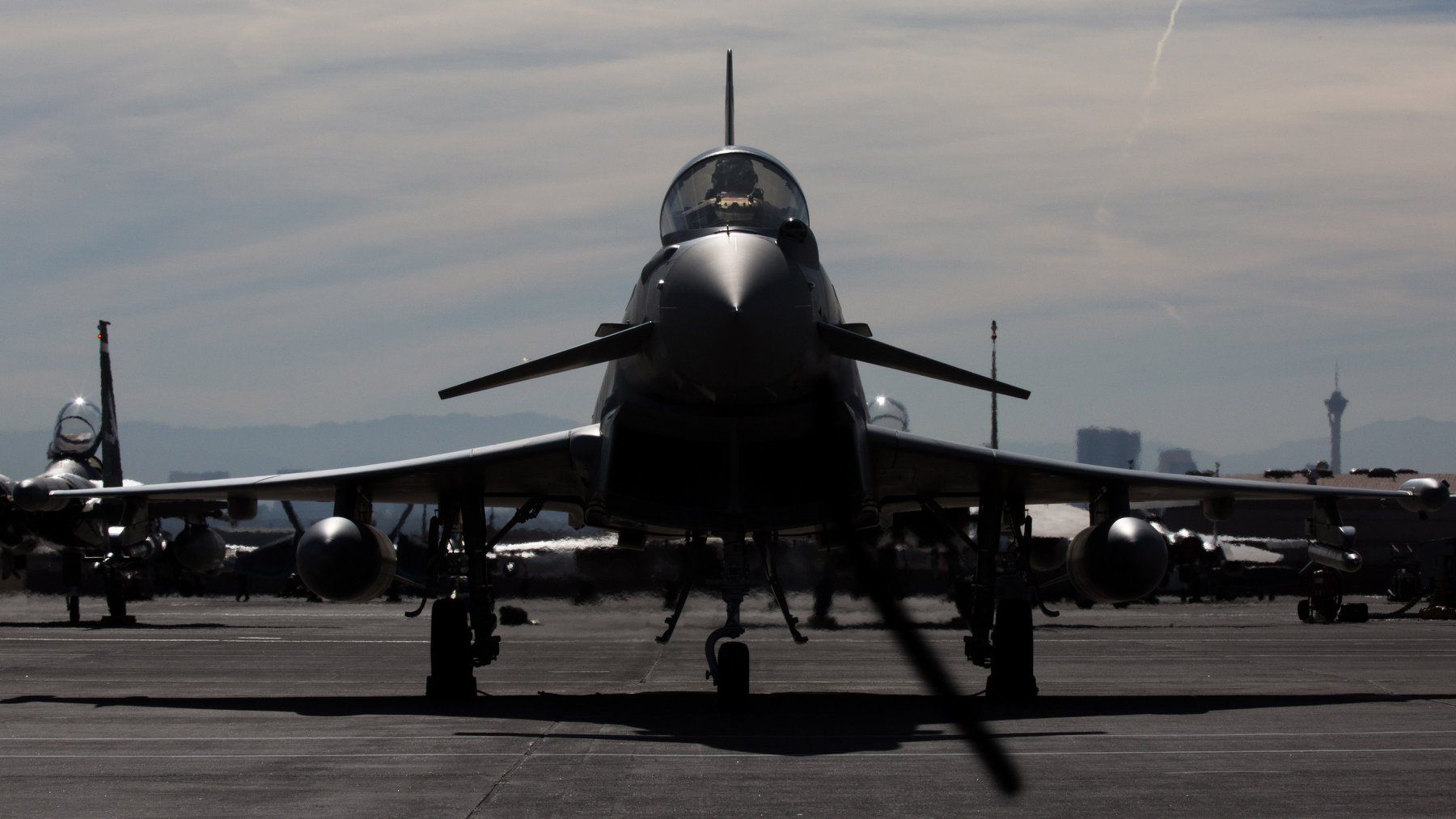
Royal Canadian Air Force CF-188 Hornet from 401 Tactical Fighter Squadron, 4 Wing Cold Lake, prepares for flight during Exercise SANDY FLEECE 2018 being held at Holloman Air Force Base, Alamogordo, New Mexico, USA on January 30, 2018.
???? Cpl Manuela Berger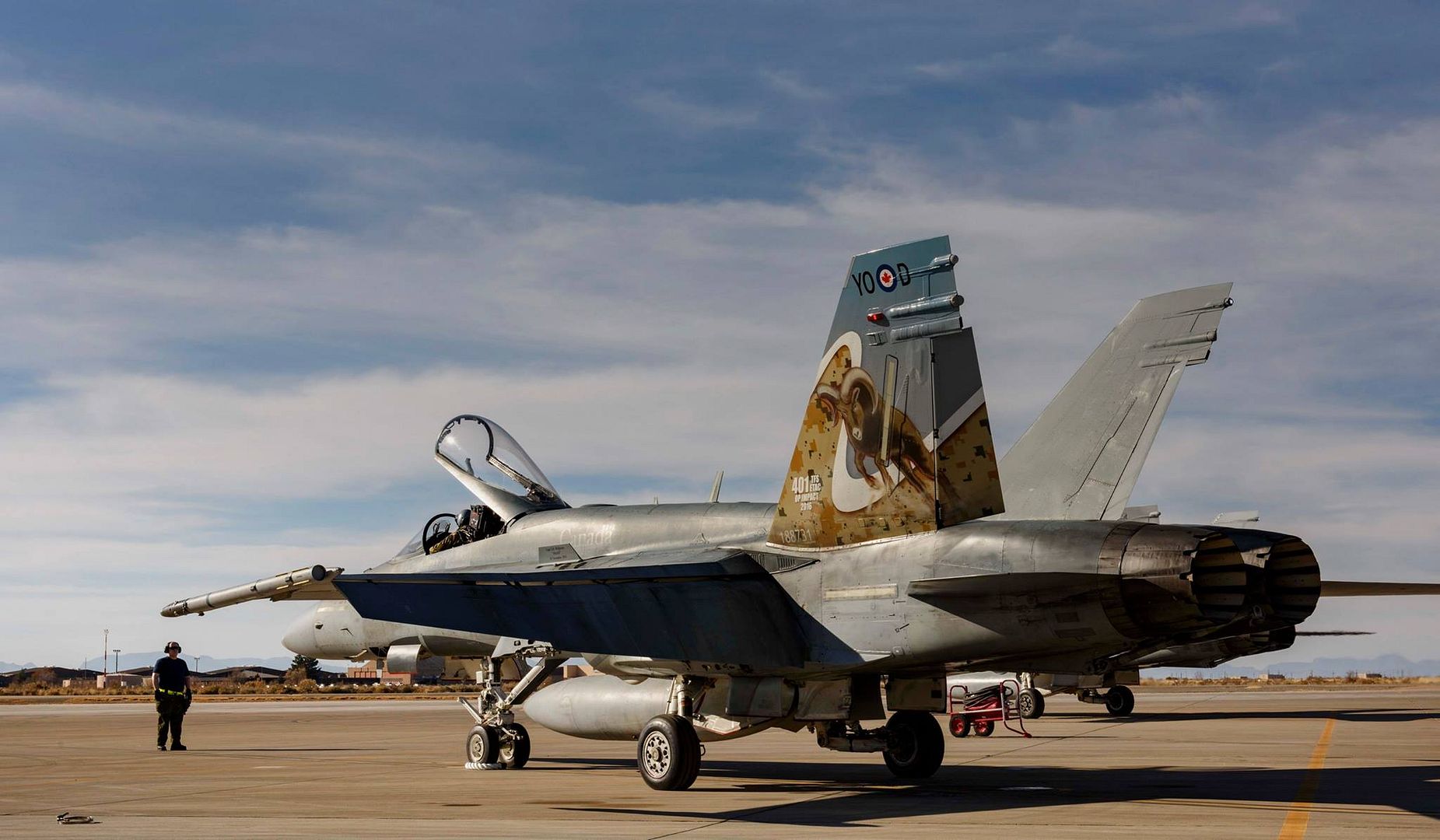
A Royal Canadian Air Force CF-188 Hornet from 401 Tactical Fighter Squadron, 4 Wing Cold Lake, taxis toward the runway during Exercise SANDY FLEECE at Holloman Air Force Base, Alamogordo, New Mexico, USA on January 29, 2018.
???? Cpl Manuela Berger
A Royal Canadian Air Force pilot with 401 Tactical Fighter Squadron gives a ?thumbs up? as he taxis toward the runway during Exercise SANDY FLEECE at Holloman Air Force Base, Alamogordo, New Mexico, USA on January 29, 2018.
???? Cpl Manuela Berger
Post a reply
- Go to Previous topic
- Go to Next topic
- Go to Welcome
- Go to Introduce Yourself
- Go to General Discussion
- Go to Screenshots, Images and Videos
- Go to Off topic
- Go to Works in Progress
- Go to Skinning Tips / Tutorials
- Go to Skin Requests
- Go to IJAAF Library
- Go to Luftwaffe Library
- Go to RAF Library
- Go to USAAF / USN Library
- Go to Misc Library
- Go to The Ops Room
- Go to Made in Germany
- Go to Campaigns and Missions
- Go to Works in Progress
- Go to Juri's Air-Raid Shelter
- Go to Campaigns and Missions
- Go to Works in Progress
- Go to Skinpacks
- Go to External Projects Discussion
- Go to Books & Resources
